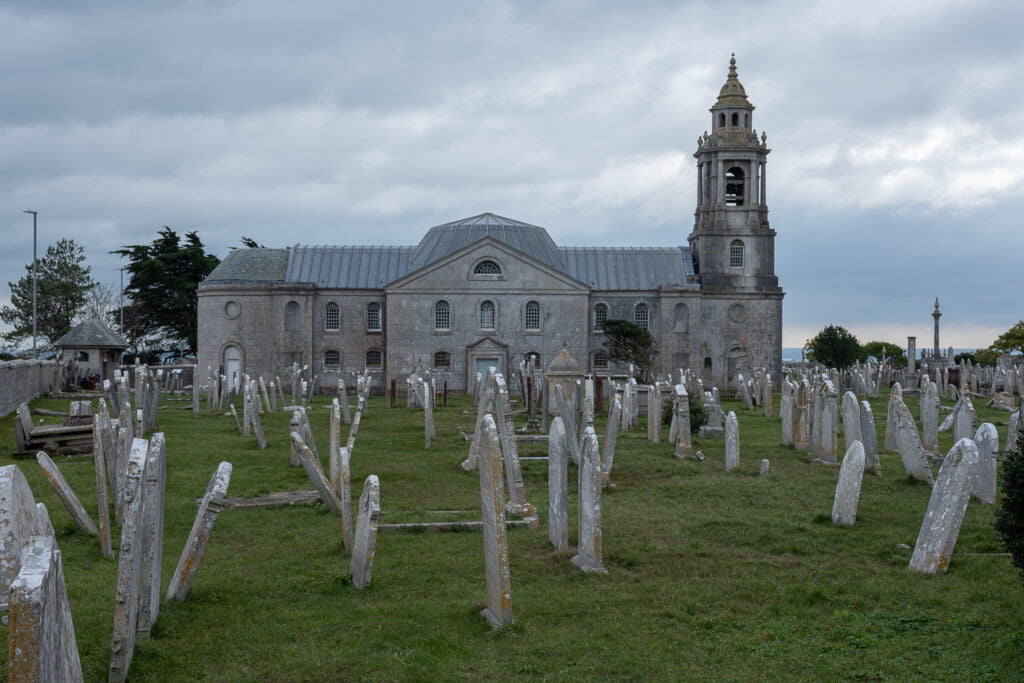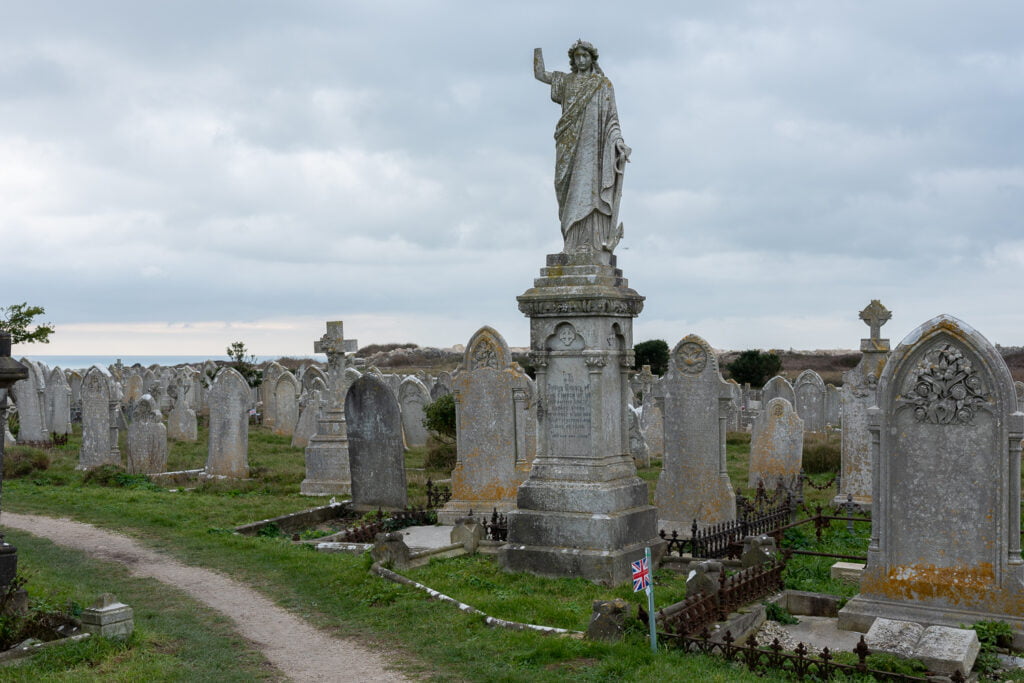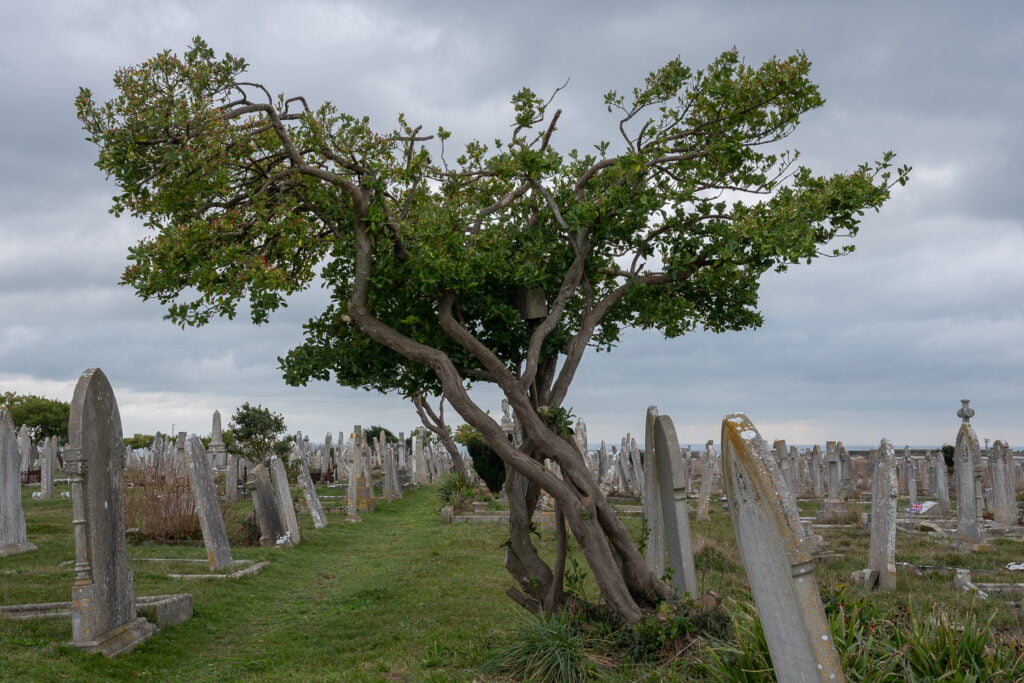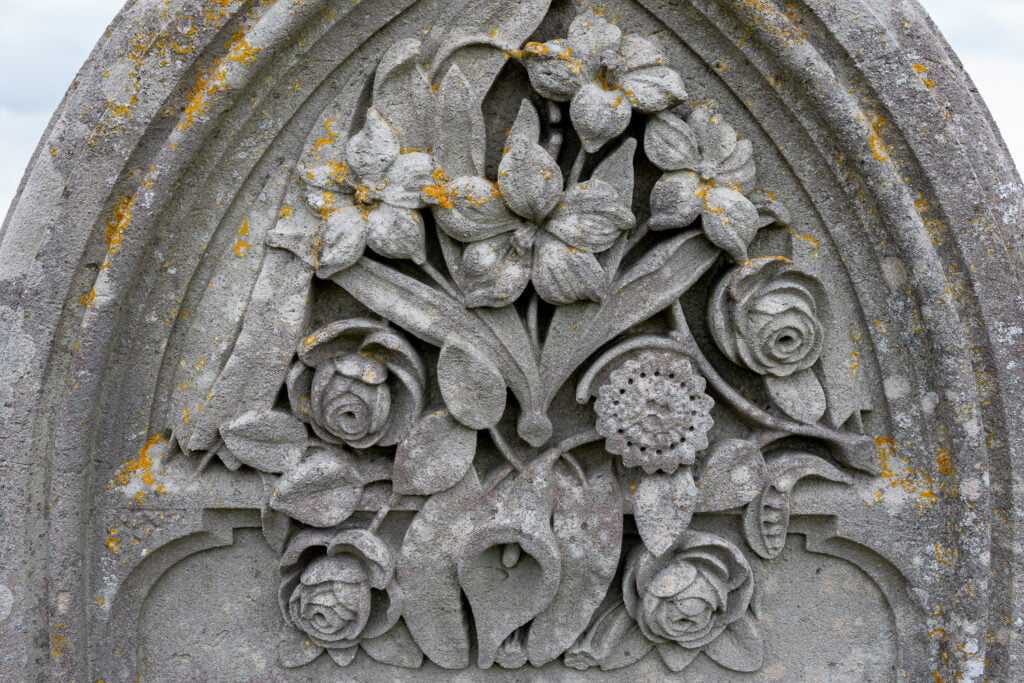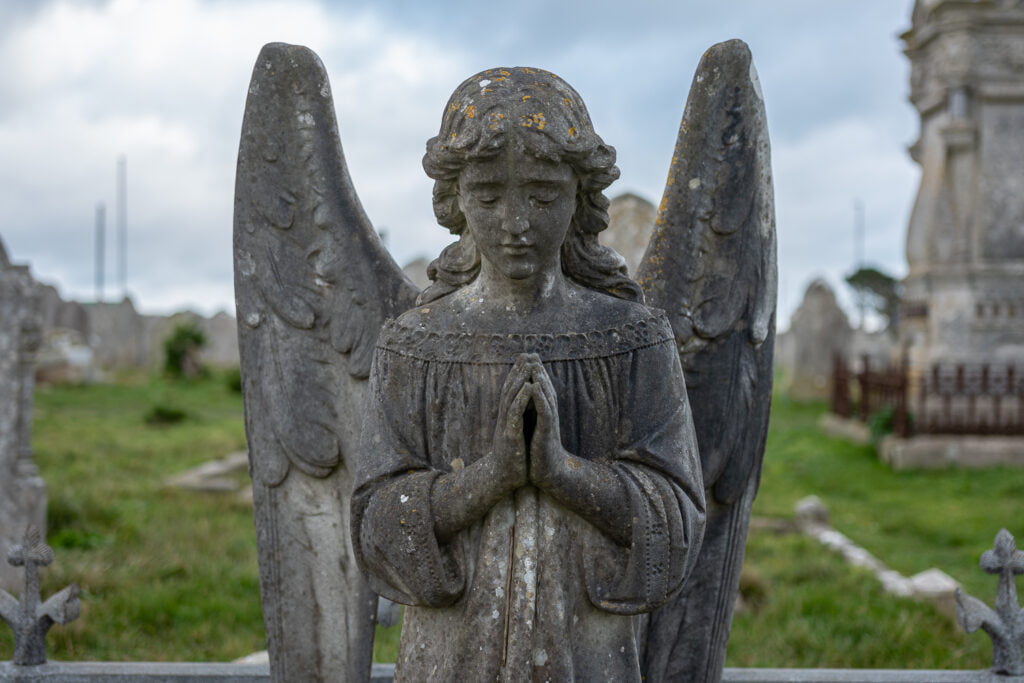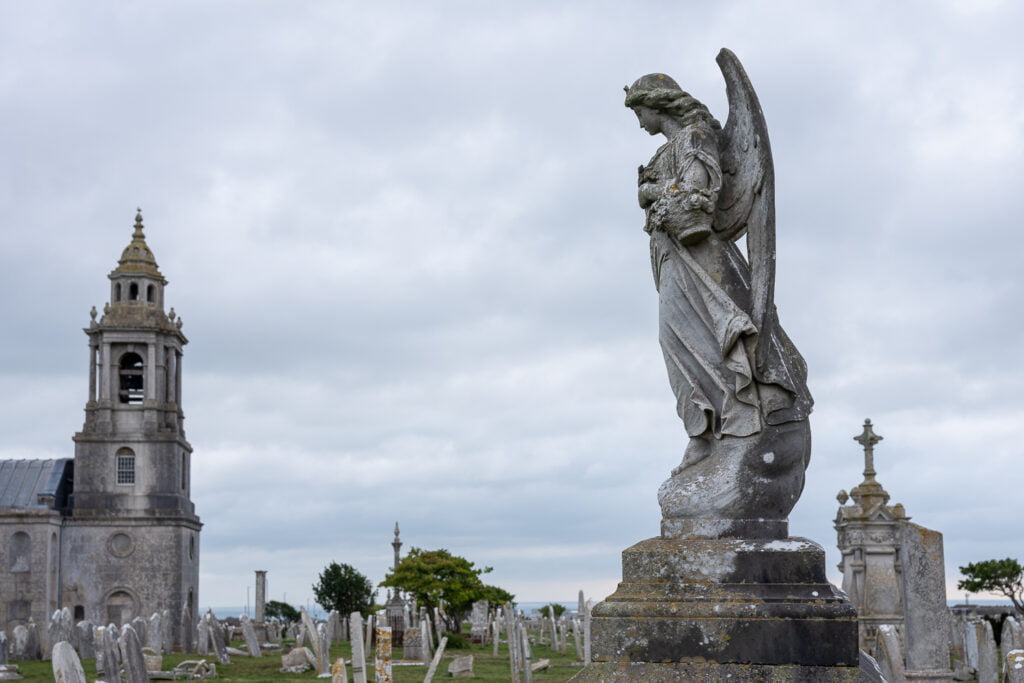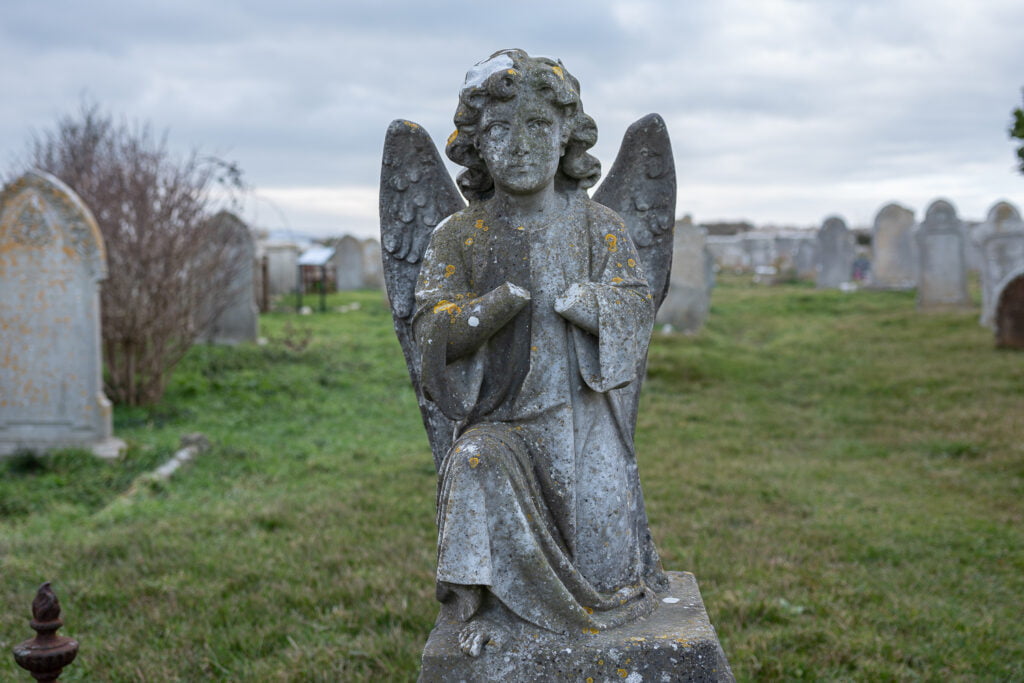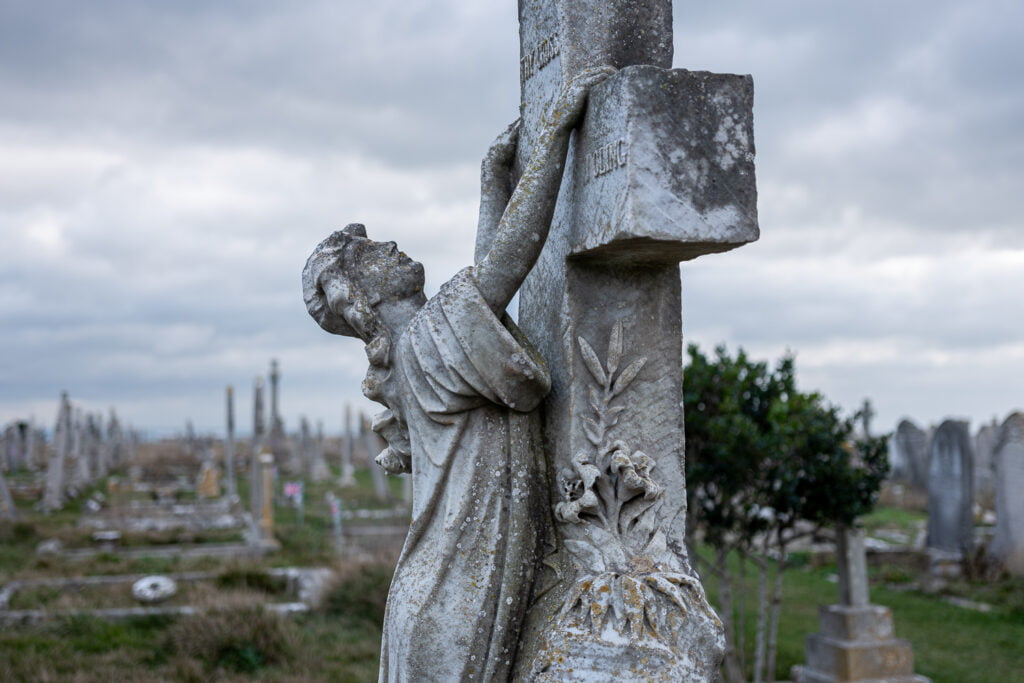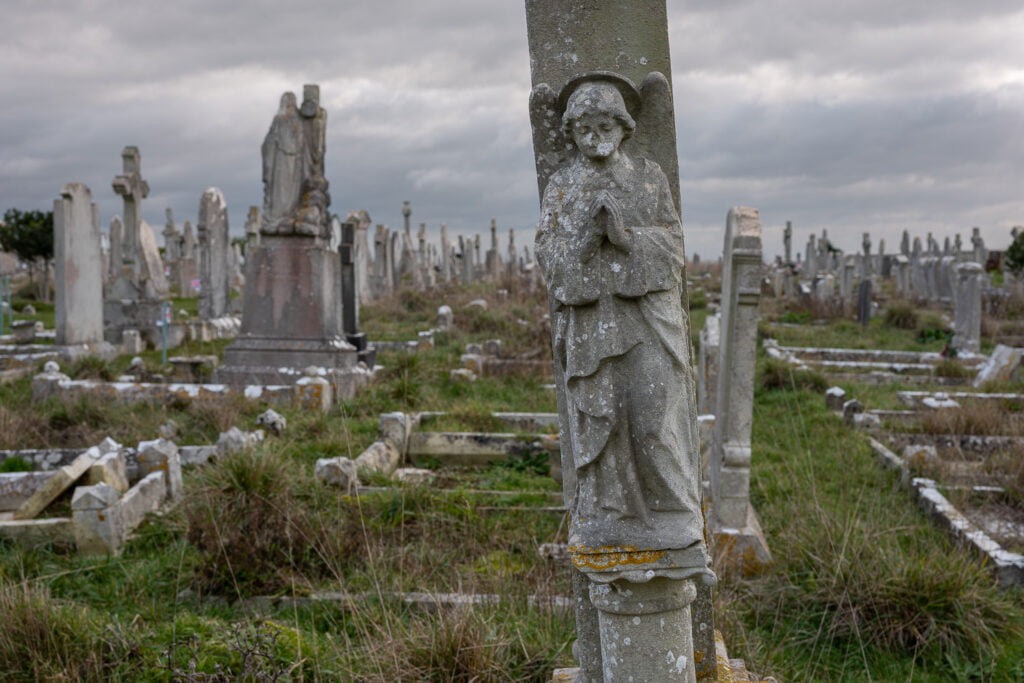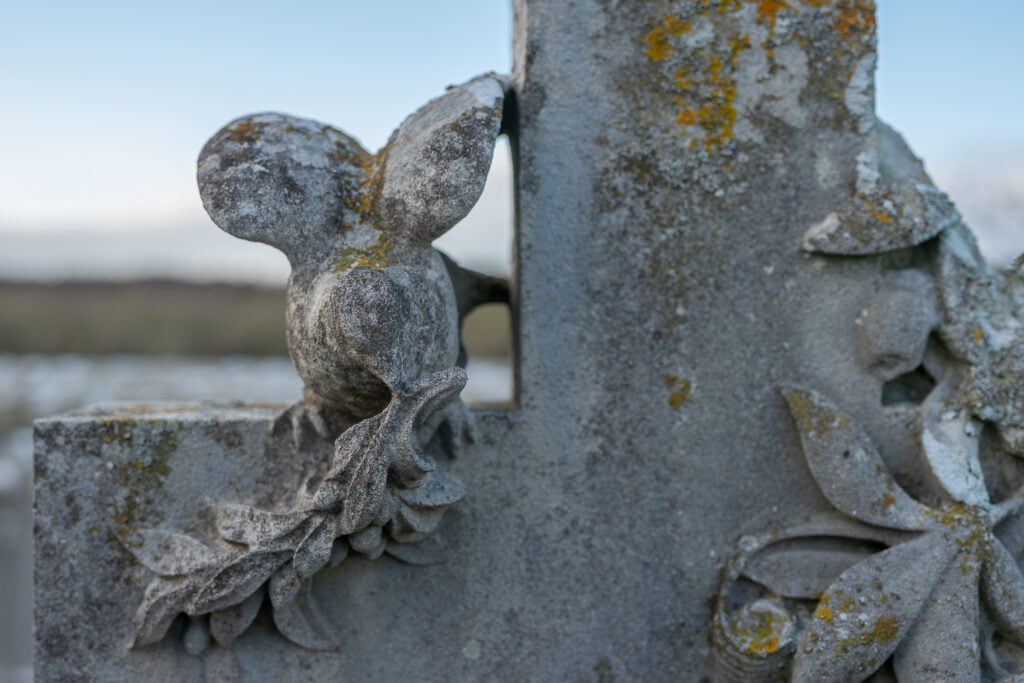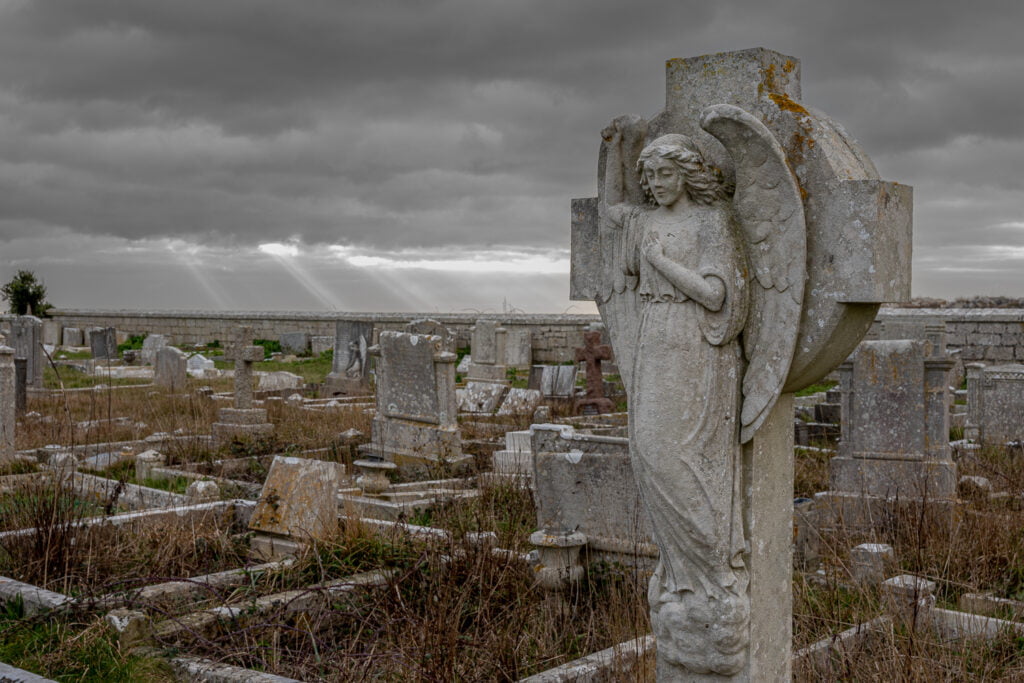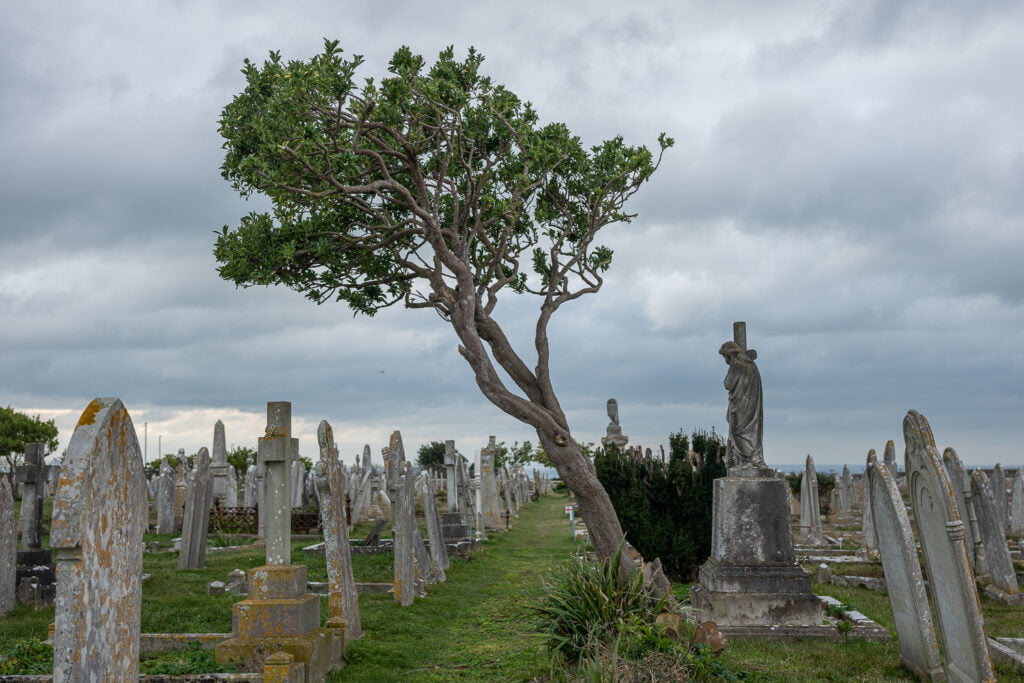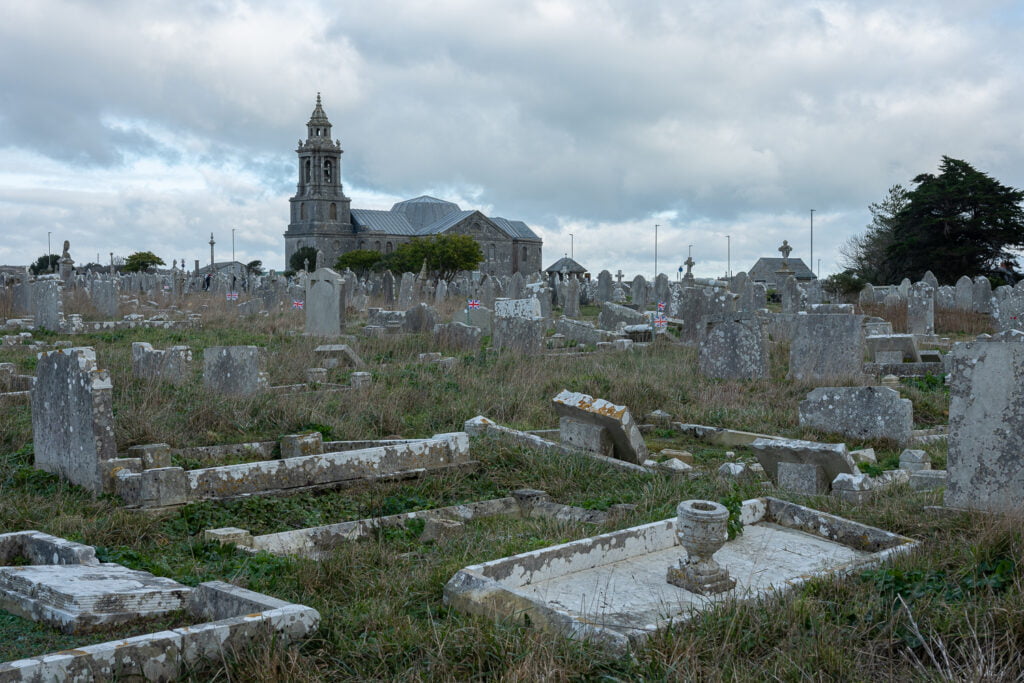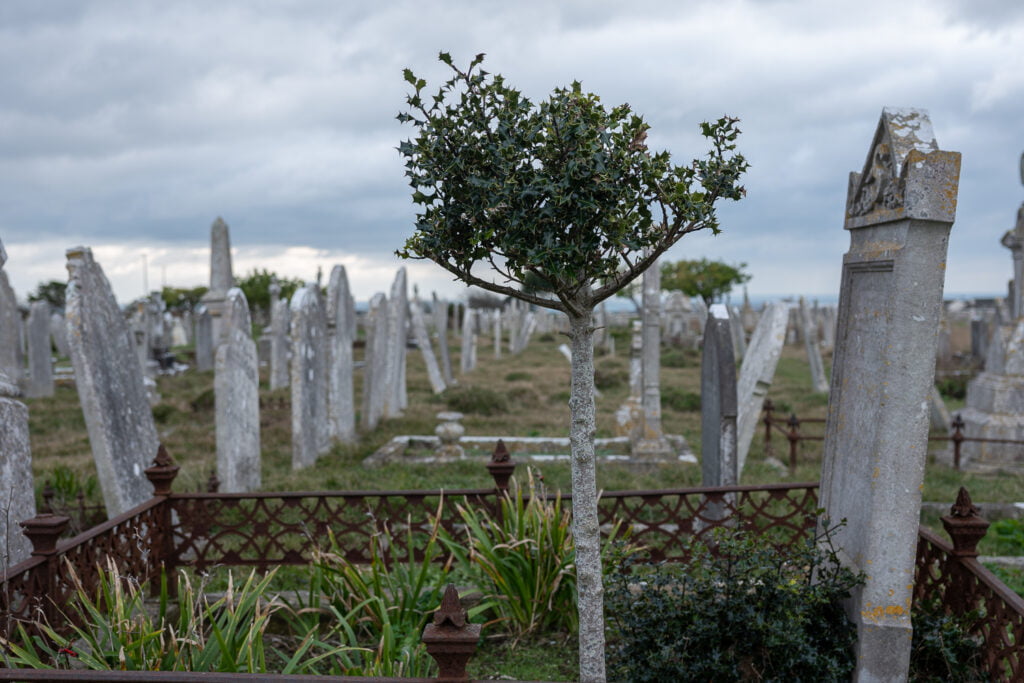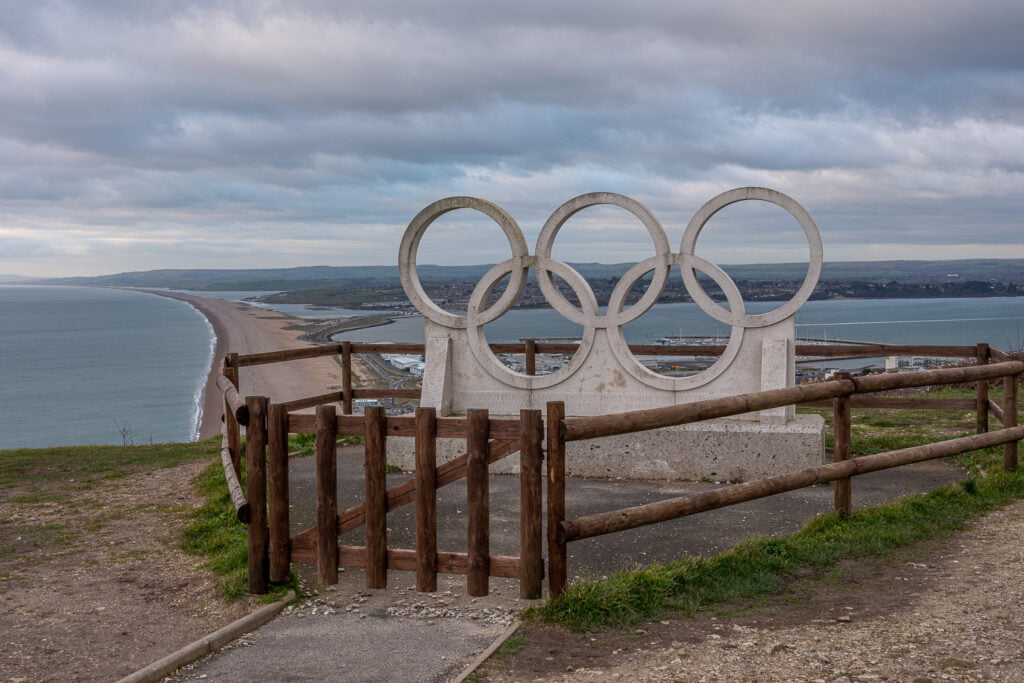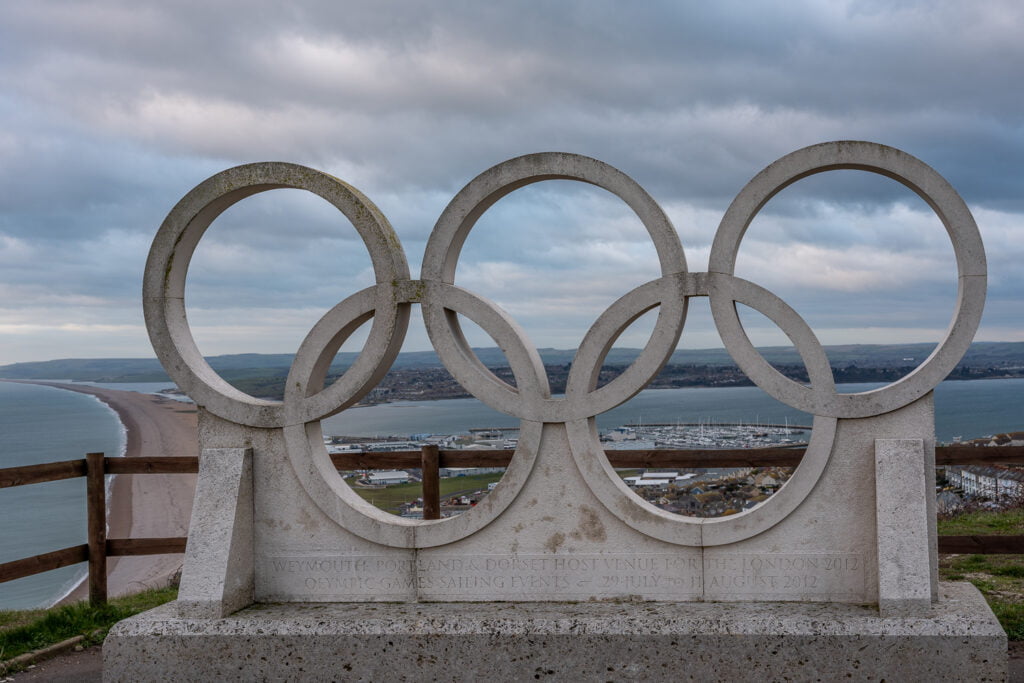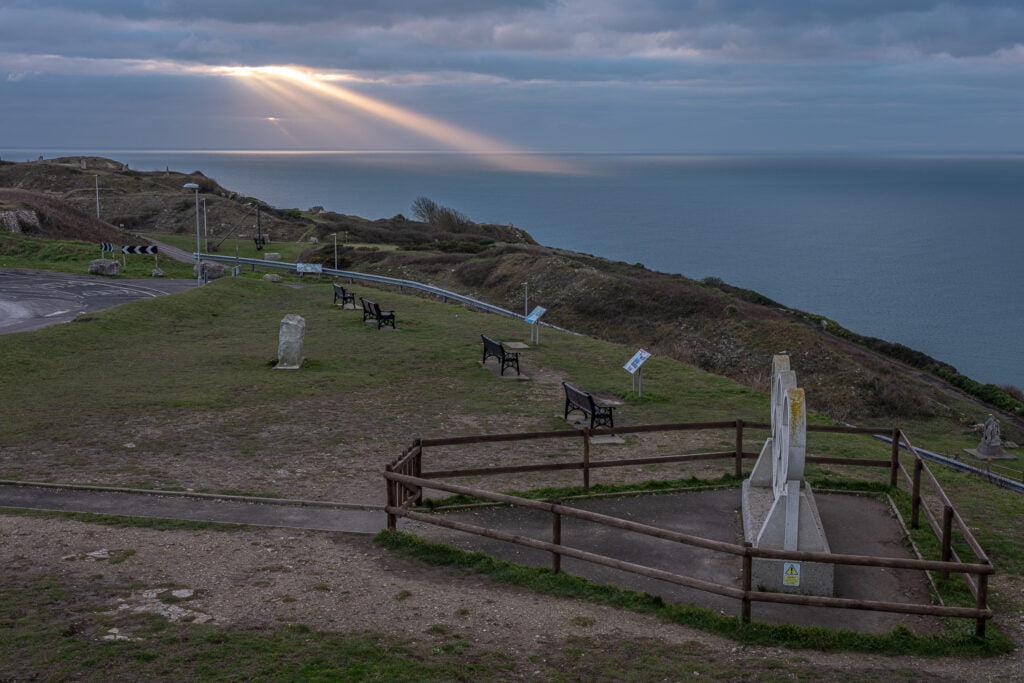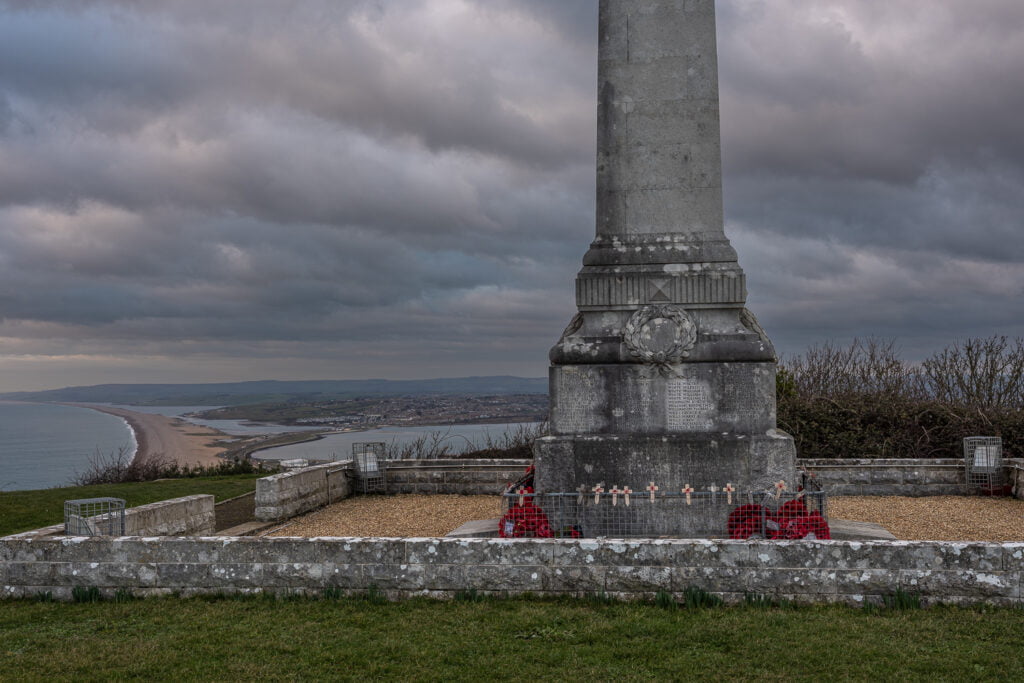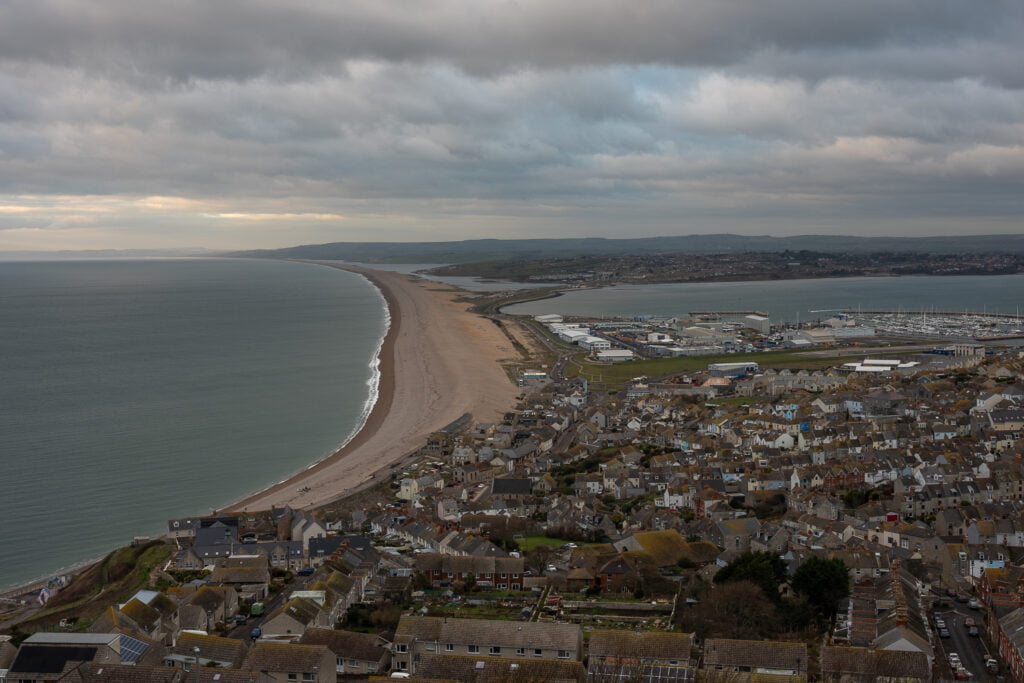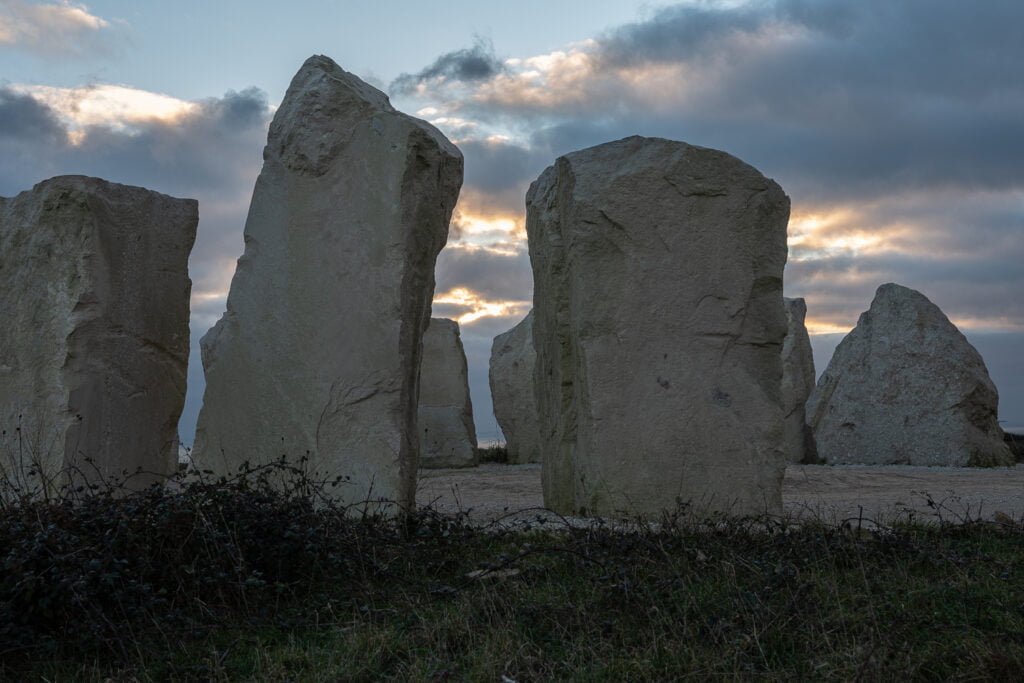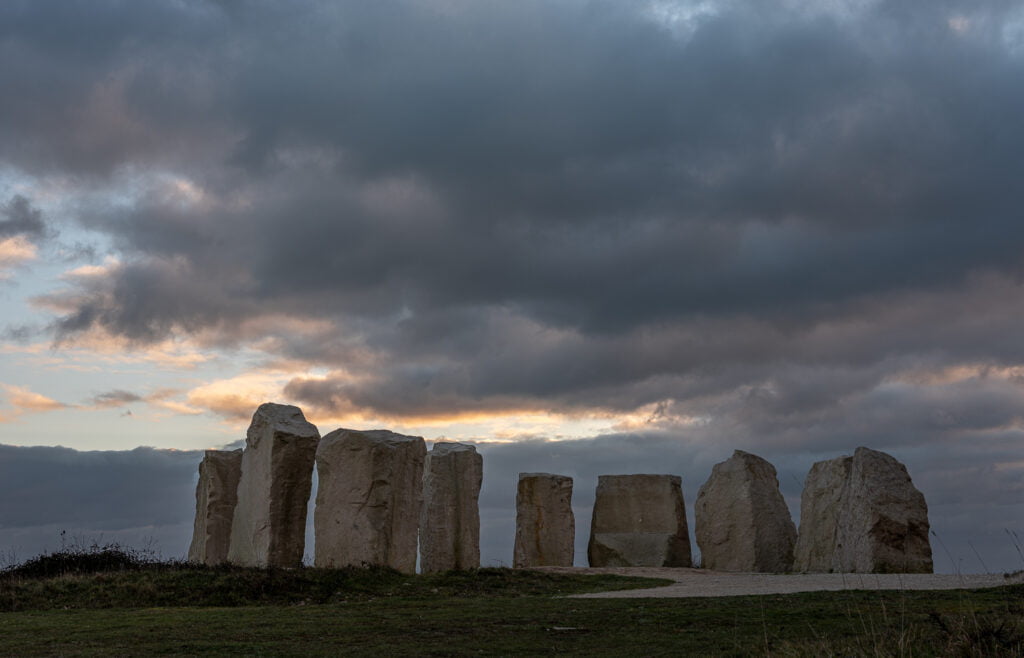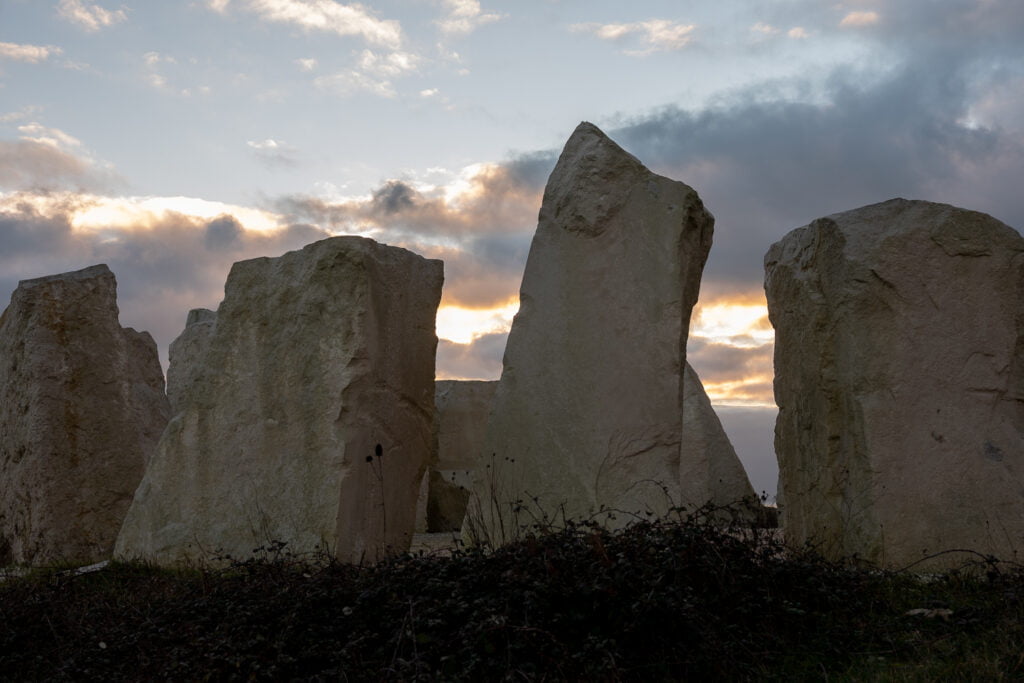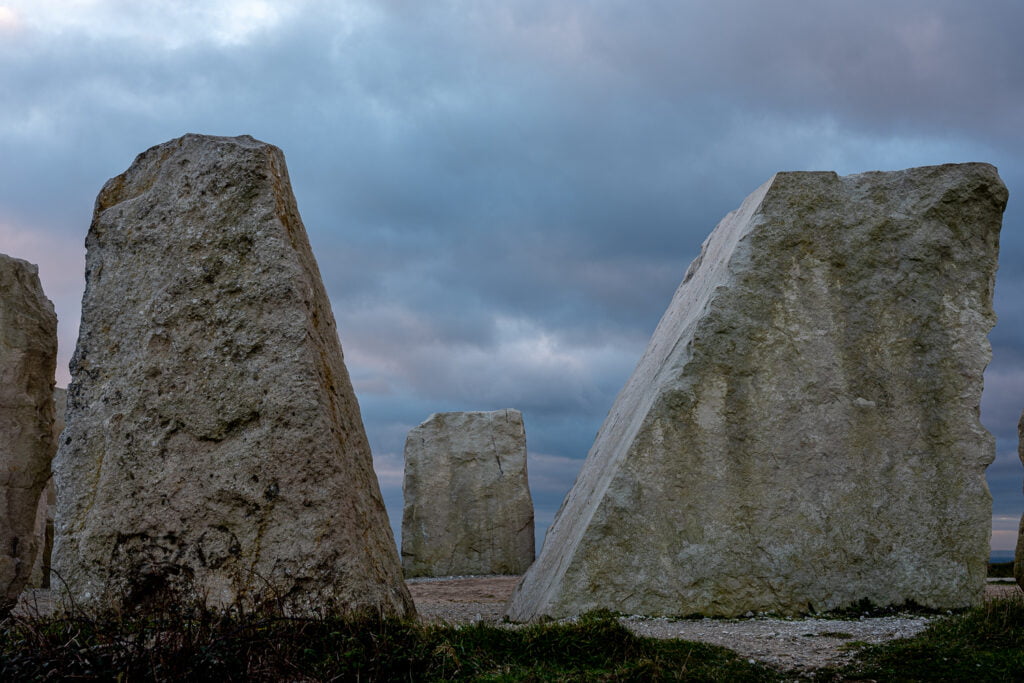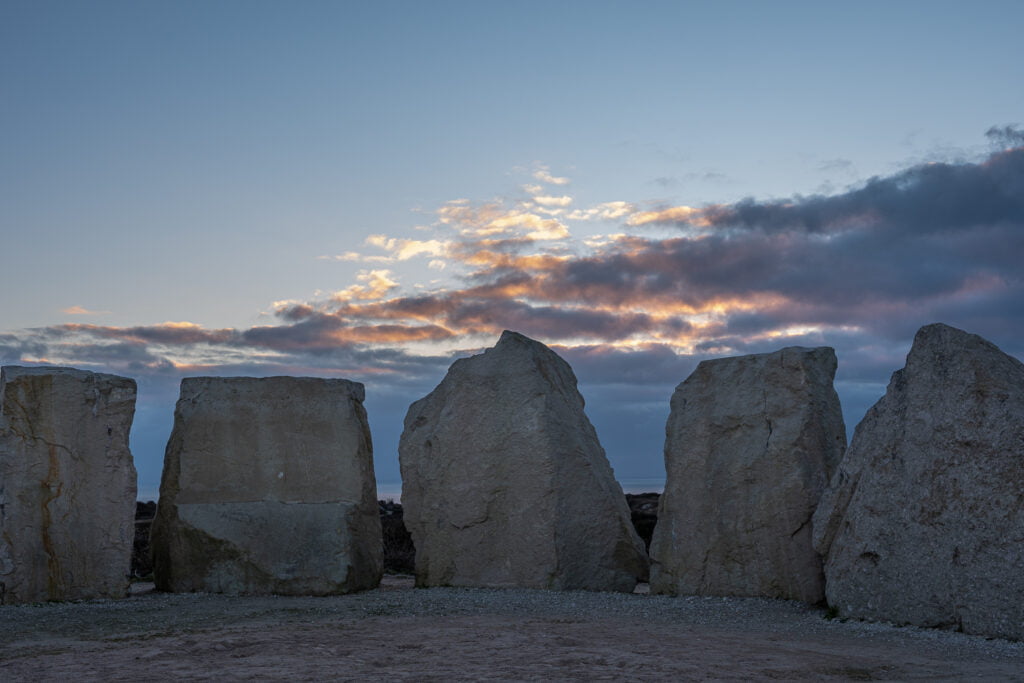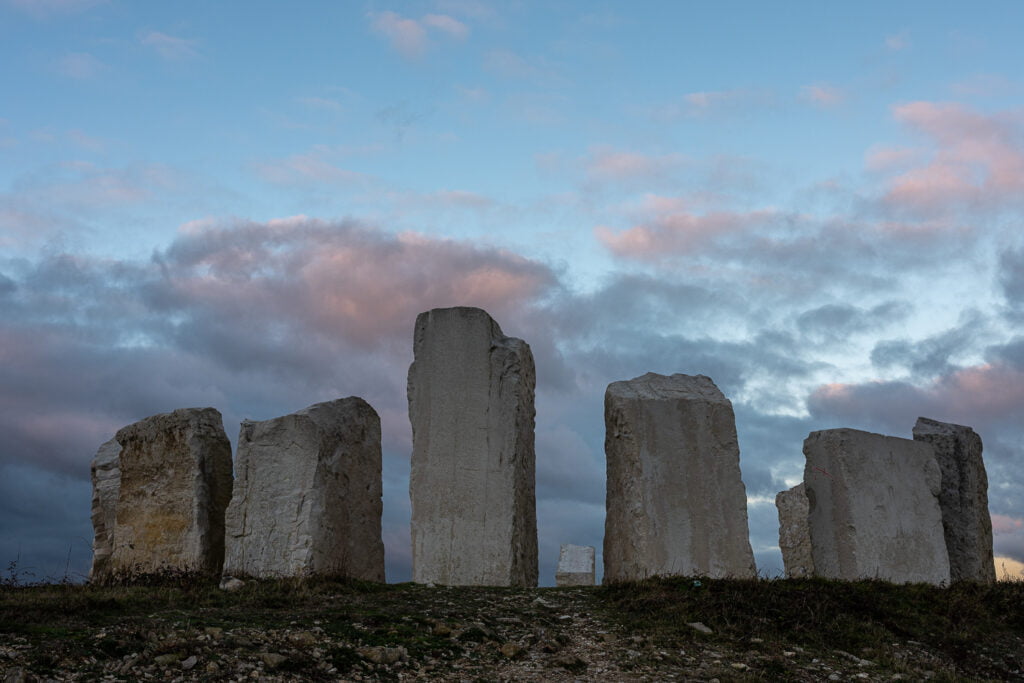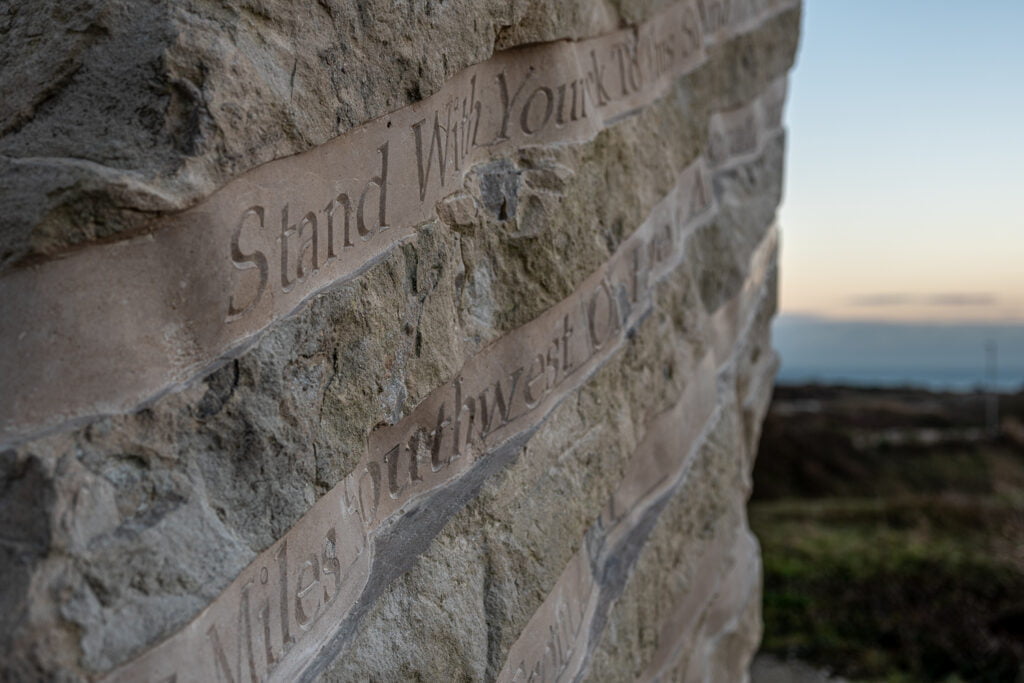Great Stone Project 2022
I have flirted with Portland for several years, journeying down most years to stay at the Portland Bird Observatory, and walking around its coastline and exploring some of its quarries without really committing to photographing the features which make it attractive to me. As an extension of the Great Stone Project 2022, drifting into 2023, its time has eventually arrived.
This post shall be a rolling blog post, with additions added every day of my stay, and the best photographs may latterly form a Gallery. I may return to Portland in March but anticipate making a new Blog entry for that visit.
Portland is a huge block of limestone, some 4.5 miles long and 1.75 miles at its widest, and rises to a maximim of 400 feet above sea level in the north. It is connected to the mainland by a causeway, which has replaced a railway connection which operated from the late 19th century to 1965. Its primary claim to fame is its famous Portland stone, which has been used for many famous buildings.
My interest in Portland revolves around The Tout Sculpture Park and Nature Reserve, the recently added Memory Stones ( a faux stone circle added in xxxx to the northern boundary of the Sculpture Park ), the ceremonial/monumental use of Portland stone in its churches particularly St George church and around the world, the High Angle battery foundations found by the Verne prison, and the general landscape which can be described as mostly bleak and windswept.
Day 1 23rd January 2023
I arrived on Portland on Monday 23rd January 2023, a bitterly cold day of unusually bright sun and clear blue sky. Martin Cade, manager of the Portland Bird Observatory, an old lighthouse near the tip of Porland where I had booked 4 nights of accommodation, had left a note for me, inviting me to stay in the adjoining cottage which he felt might be easier to heat. I was the only person staying that week, and the choice of rooms was entirely mine. I chose one of the small downstairs room where £1 coins were inserted in to a slot machine for heating. It served me well.
Mid afternoon I quickly made my way to Tout Quarry Sculpture Park and began taking photographs of the sculptures there. My camera was a Fuji GFX 50r, a medium format camera which provides exceptional quality images though is exacting in its use. I mounted it on a tripod and this combination I used for the next 4 days.
These photographs are some of those I took on my first foray into the trails of the Park. The sun set too rapidly and the light became intense with a wonderful sunset. The Park boundaries the west cliff face, looking back towards Chesil Beach and the mainland. Some of the photographs include that view.
I wondered whether the light was excessively saturated and directional. These are the images.
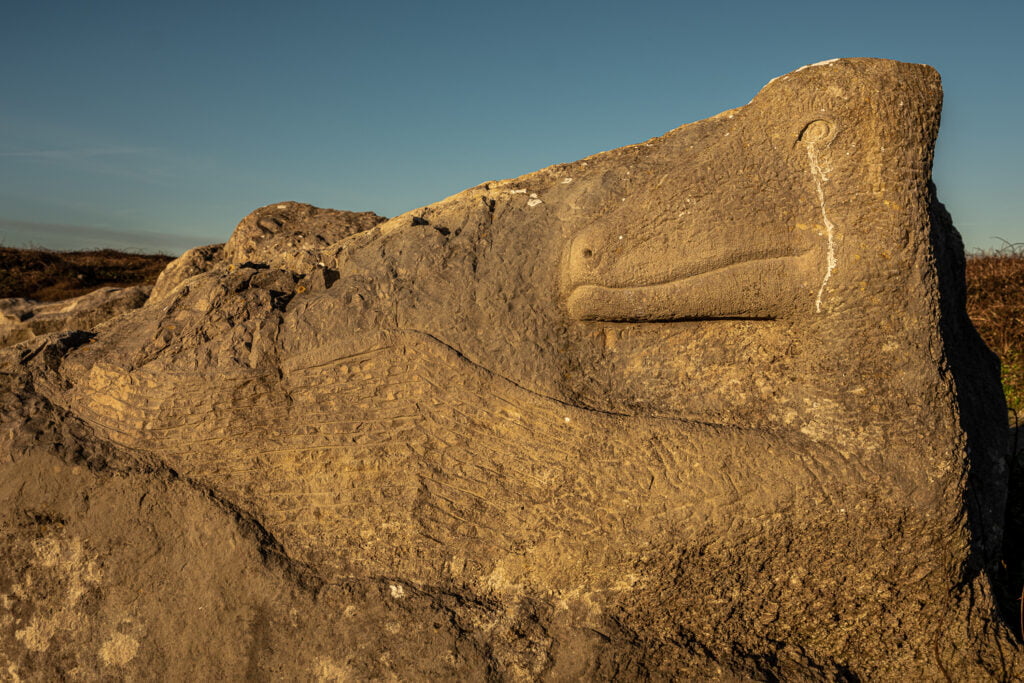
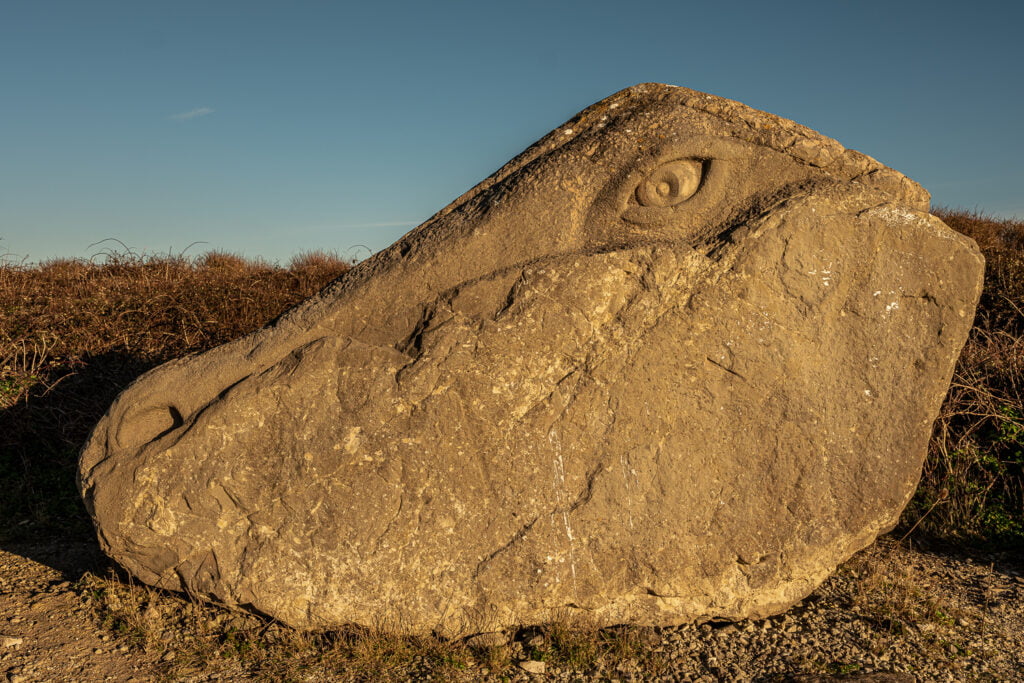
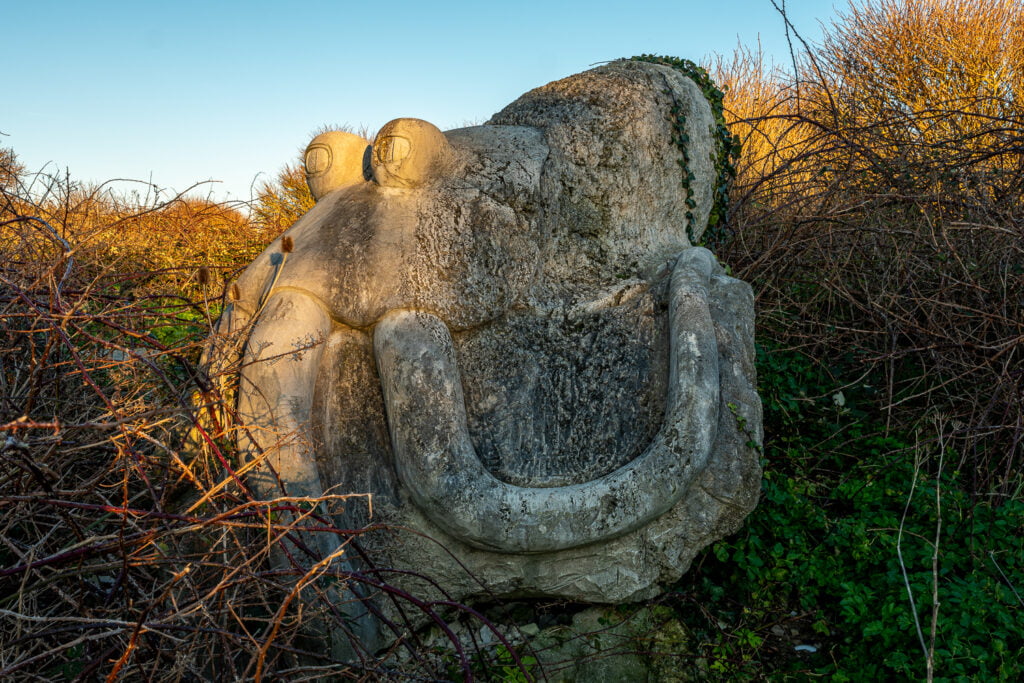
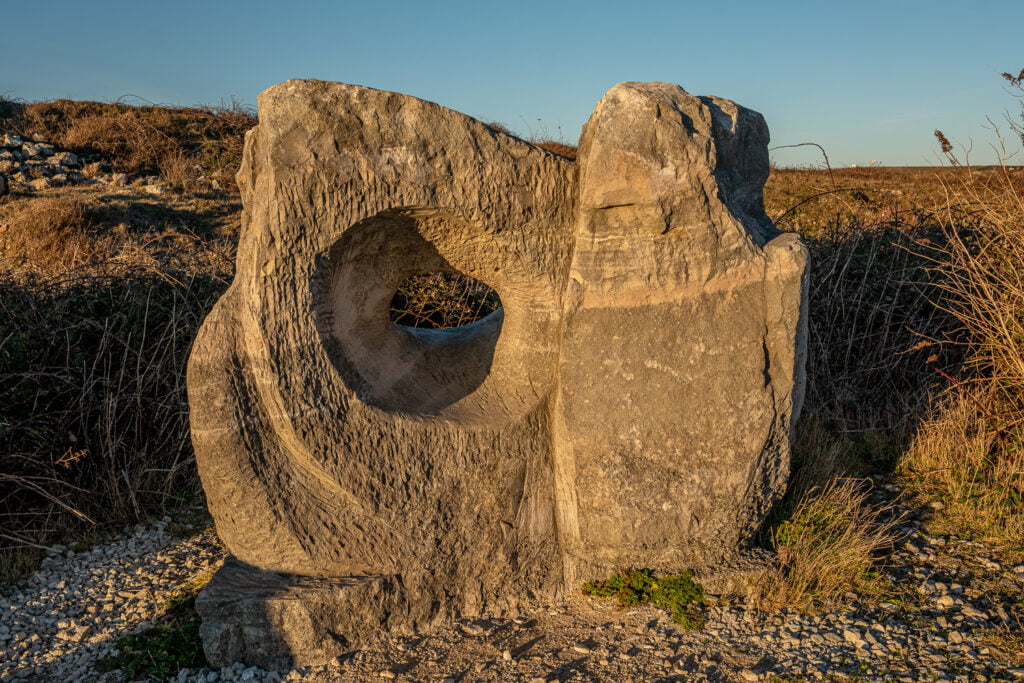
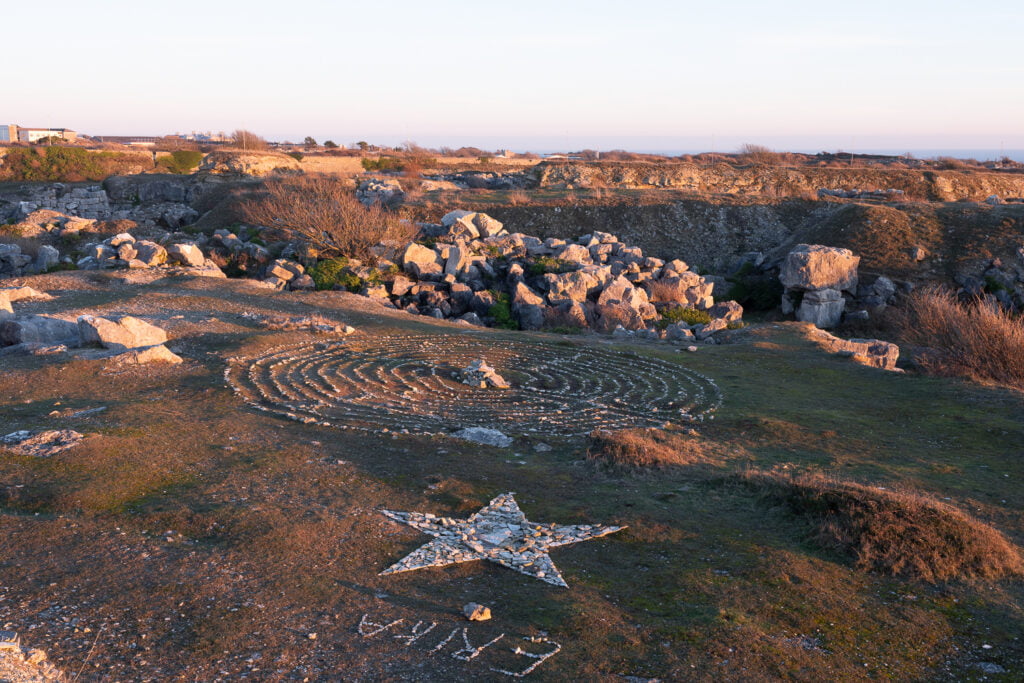
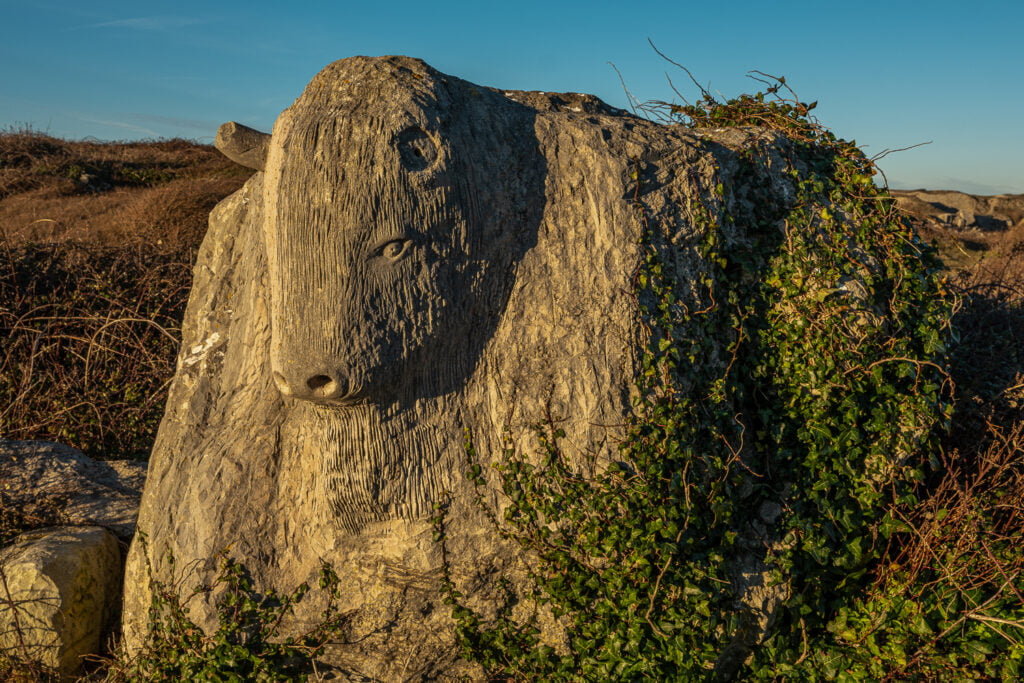
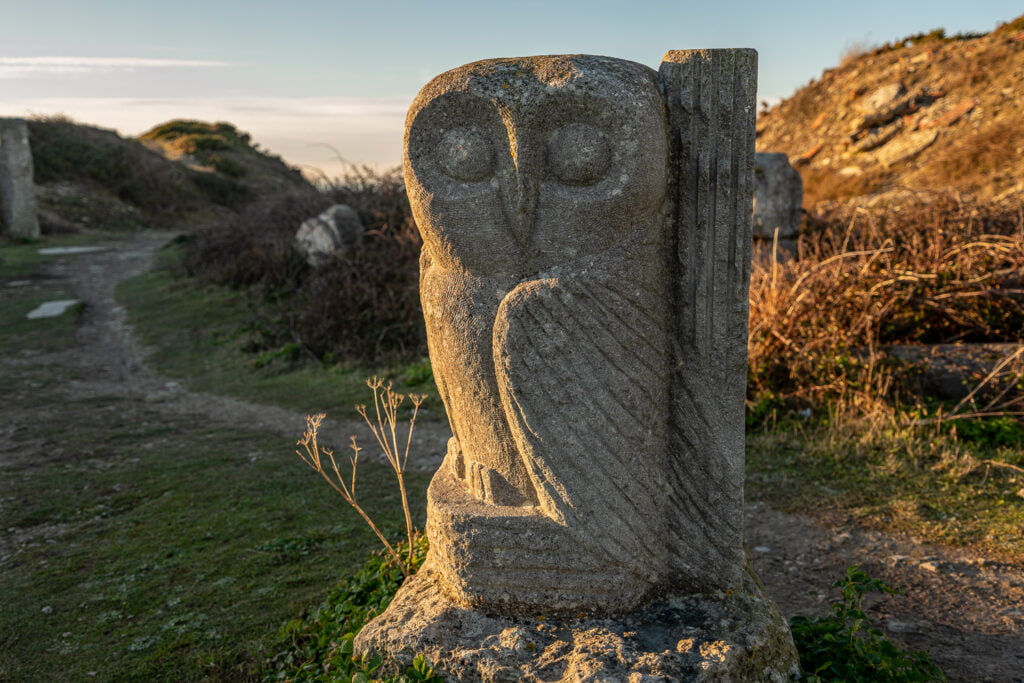
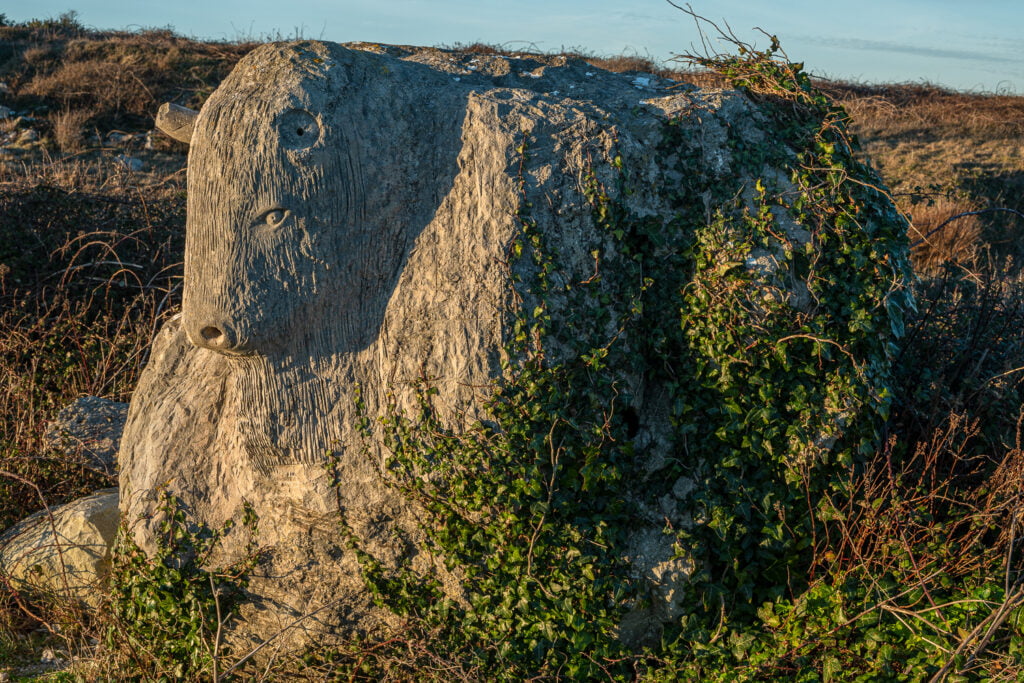
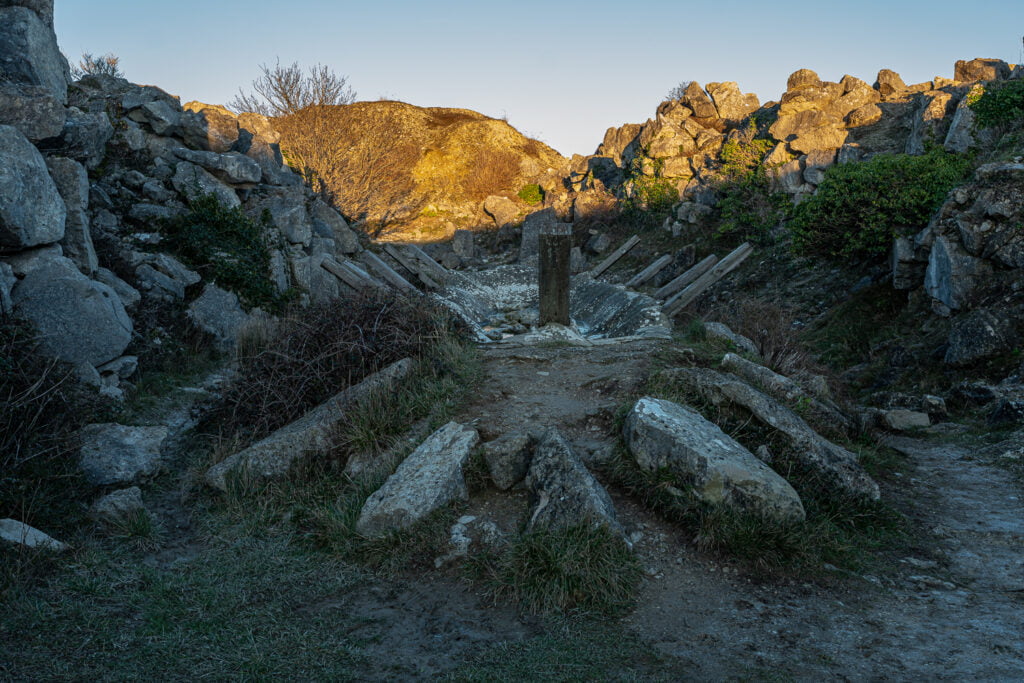
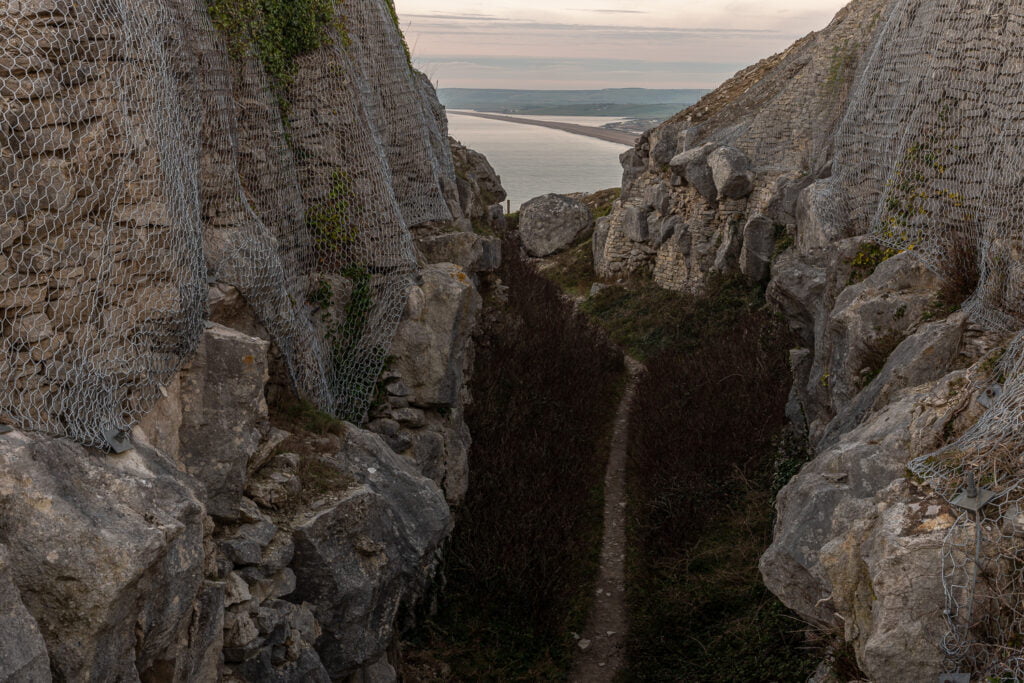
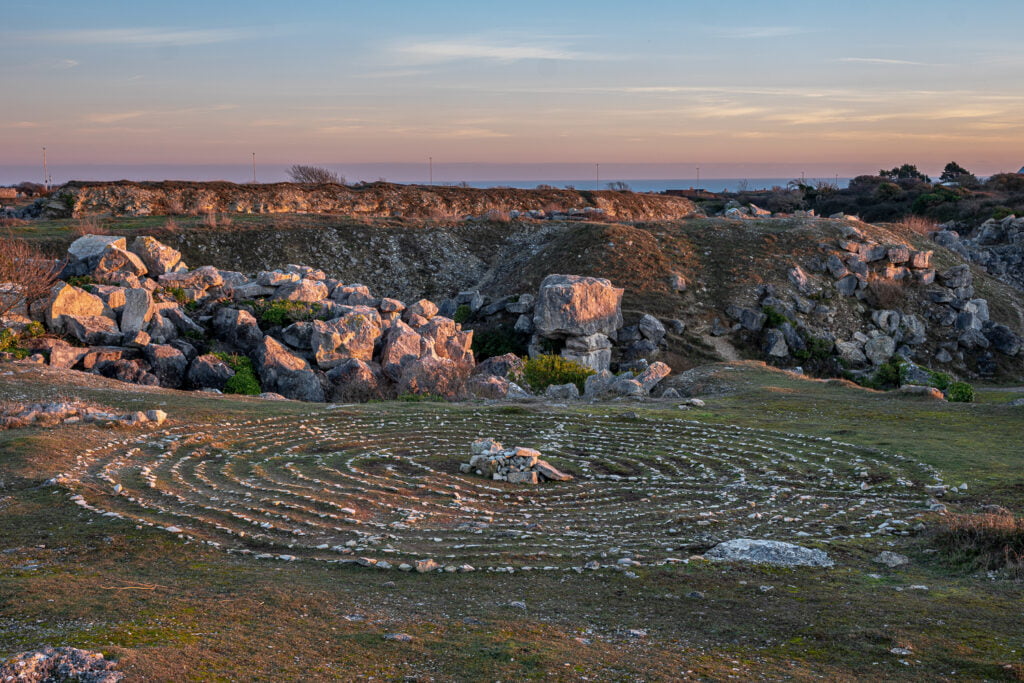
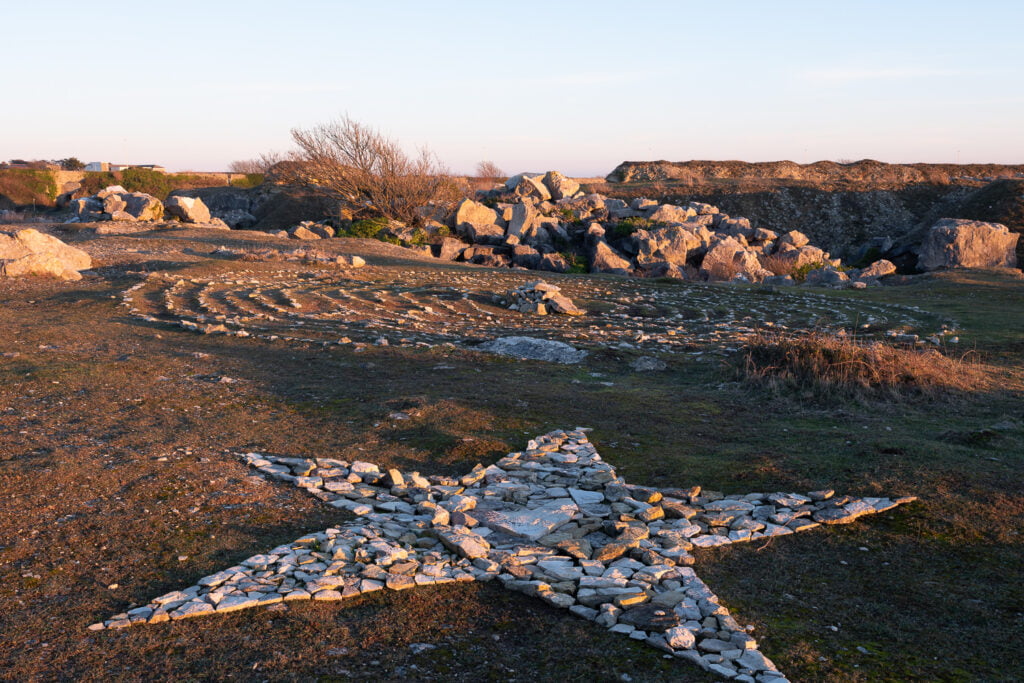
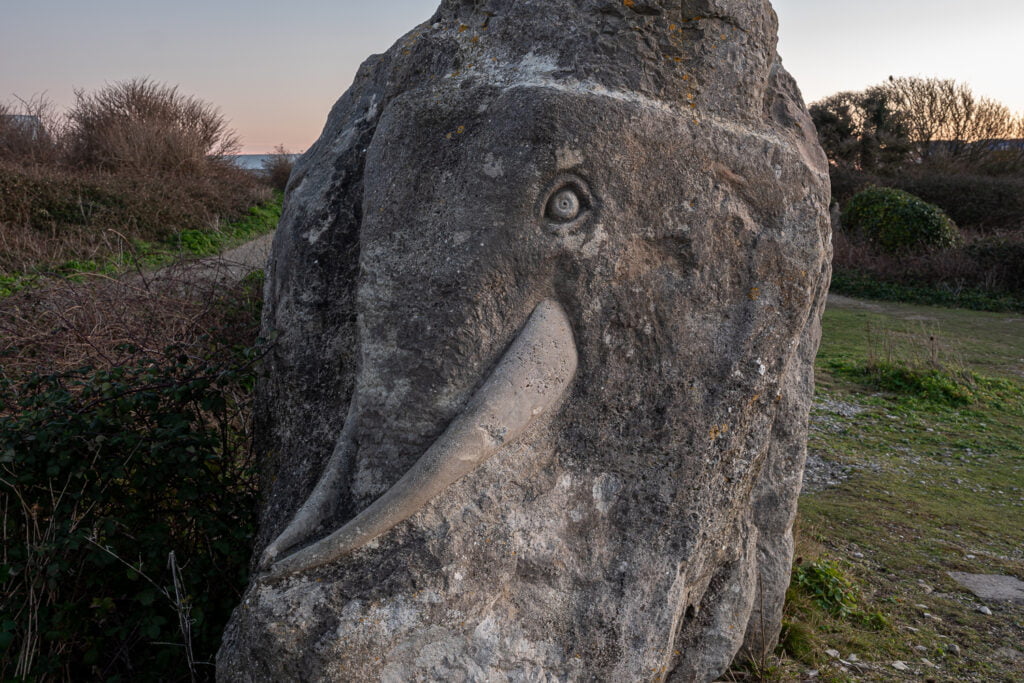
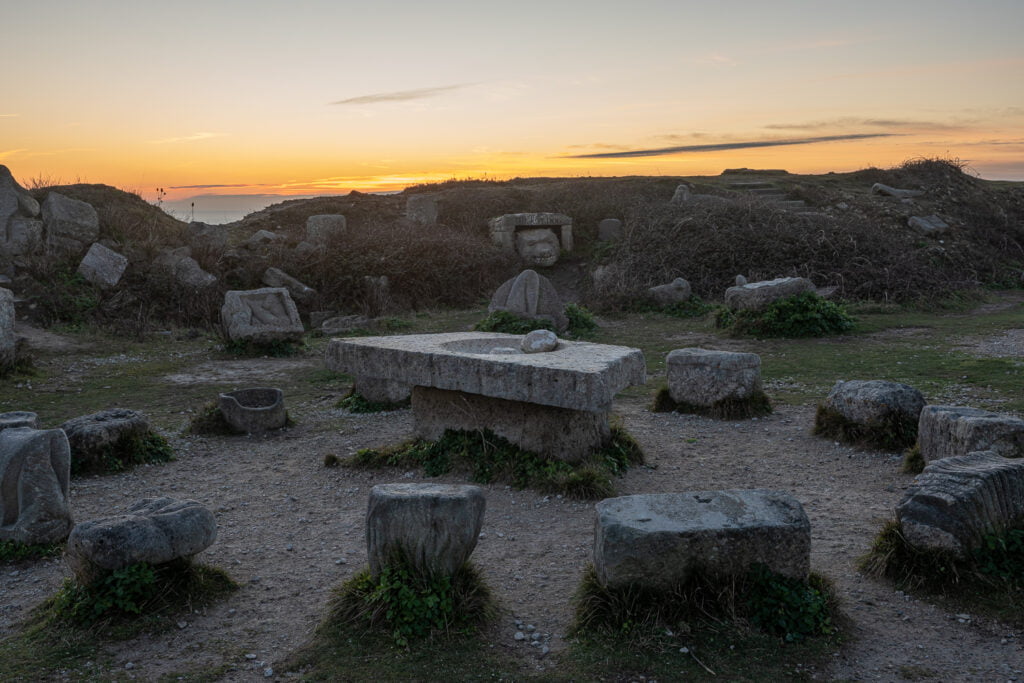
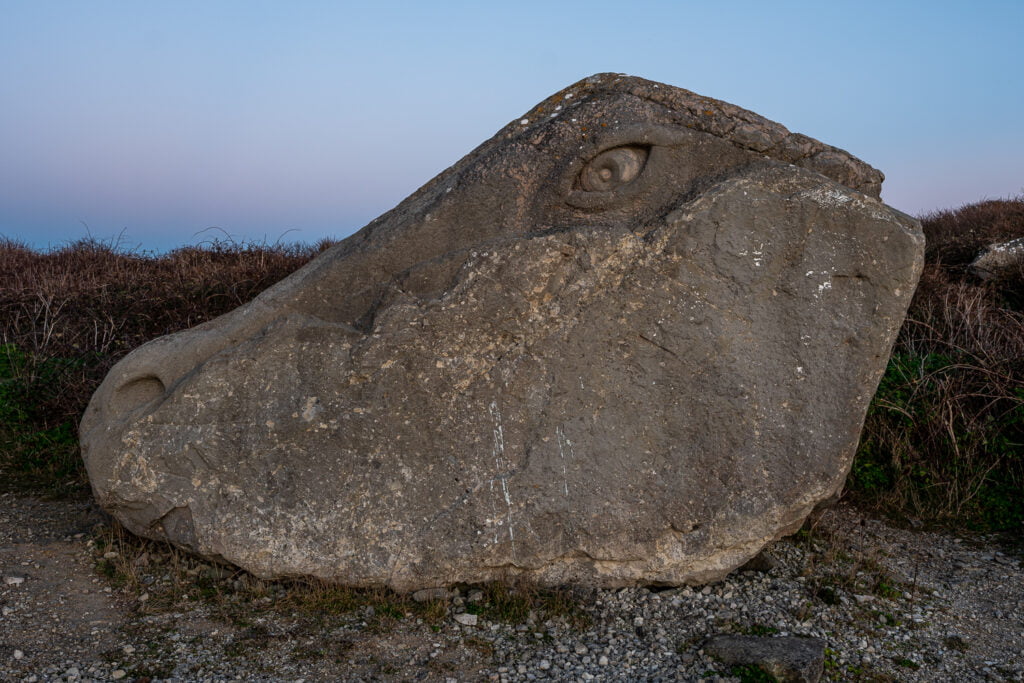
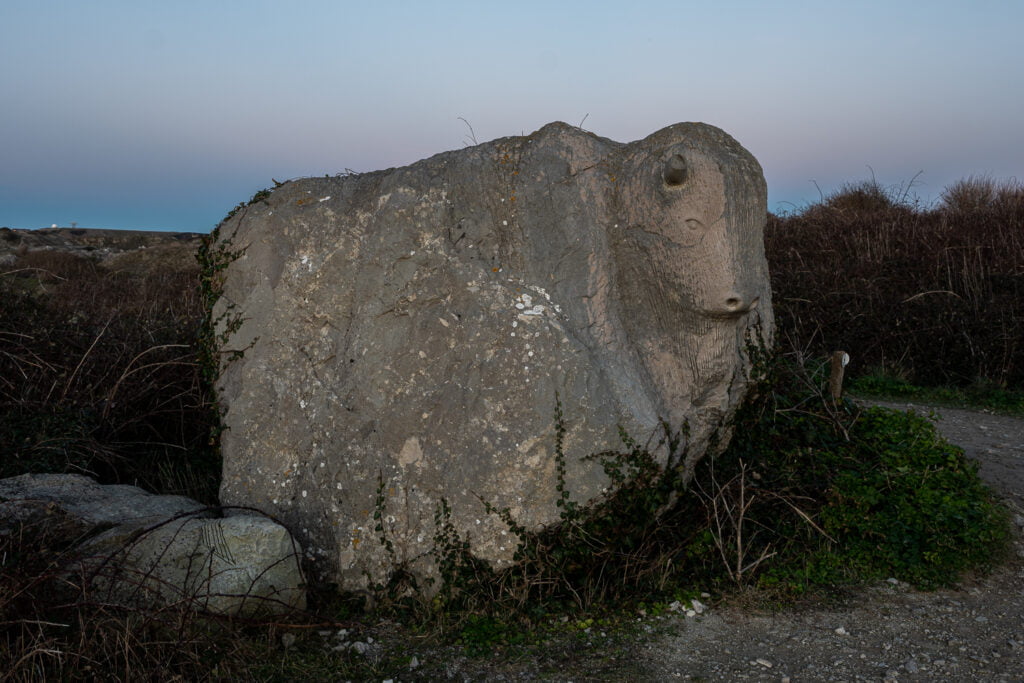
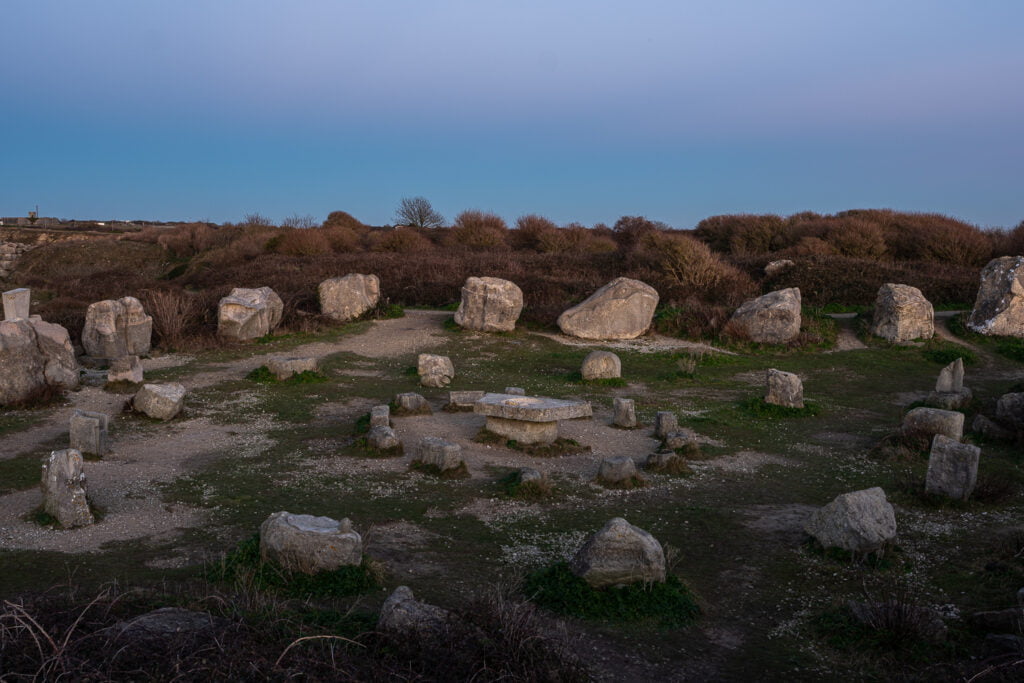
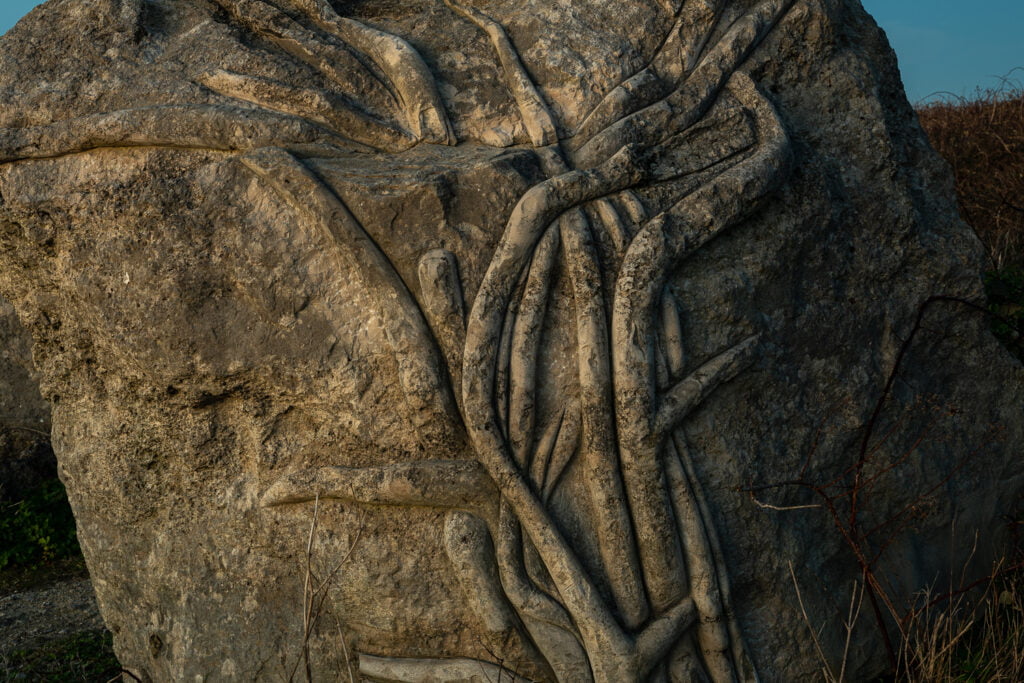
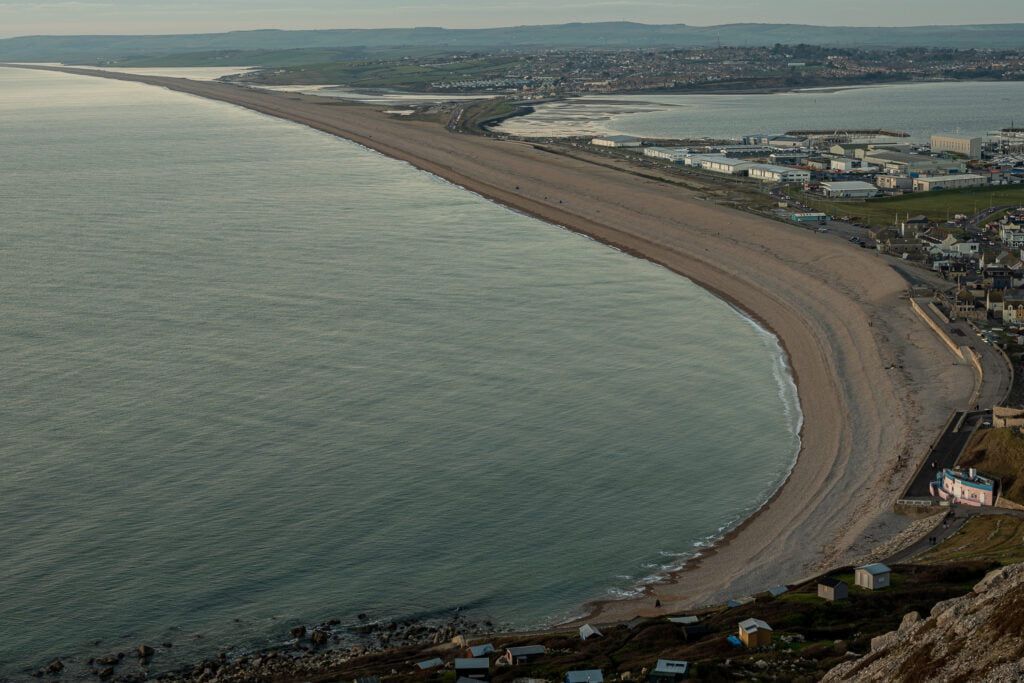
Day 2 24th January 2023
The second day was very different than the day before. Although remaining bitterly cold, the day was mostly overcast and cloudy, with little contrast for photography. I did not mind this too much; at least the sculptures could be rendered with a diffused light and no excessive contrast. They could be portrayed without too much drama. The cloud did not lift until late afternoon. After visiting for the first time the faux stone circle Memory Stones and being disappointed with my results, I retraced my footsteps of the afternoon before, and went further into the trails of the Park, seeking the sculptures which were more difficult to find.
Just before sunset I photographed Nicodemus Knob, a stack of Portland stone some 30 feet high left intact at East Cliff. The top of the stack represents the former level of the ground before the land was purchased by the Crown and the stone quarried from here to build the breakwaters of Portland harbour between 1849-1872. There are an abundance of air vents, entrances and links with the tunnels below, incongruous in the landscape. An open faced working quarry is adjacent to this area. The High Angle Battery remains are also in this area, first photograph below, more of this later.
The last photograph is of the sea and sky whilst returning to the lighthouse. The image does not fully portray how dark it was by this time.
These are the photographs:
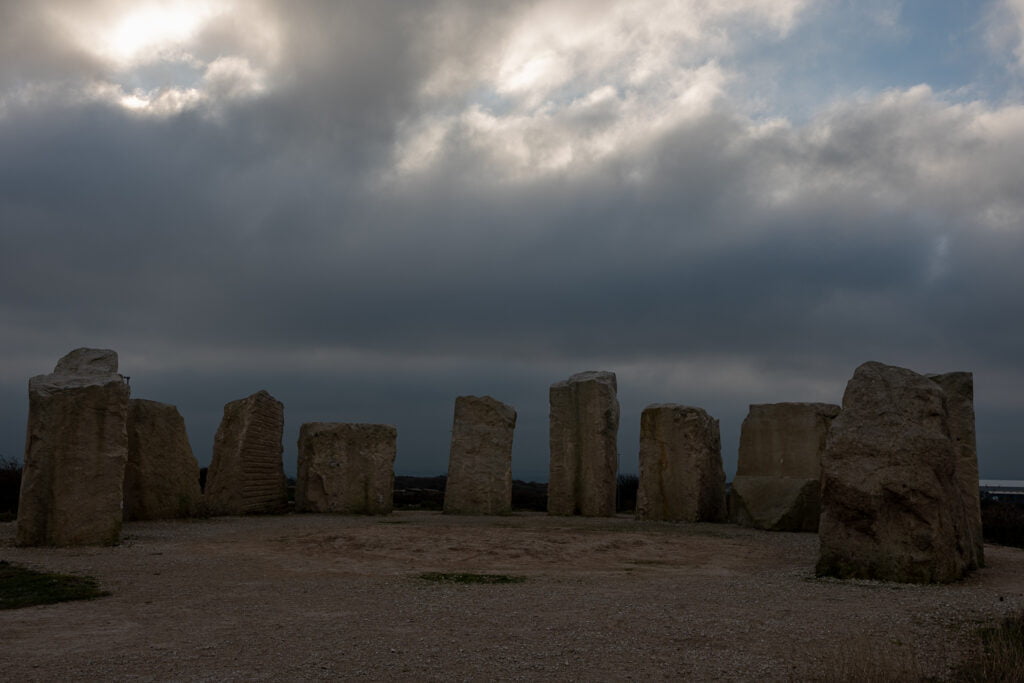
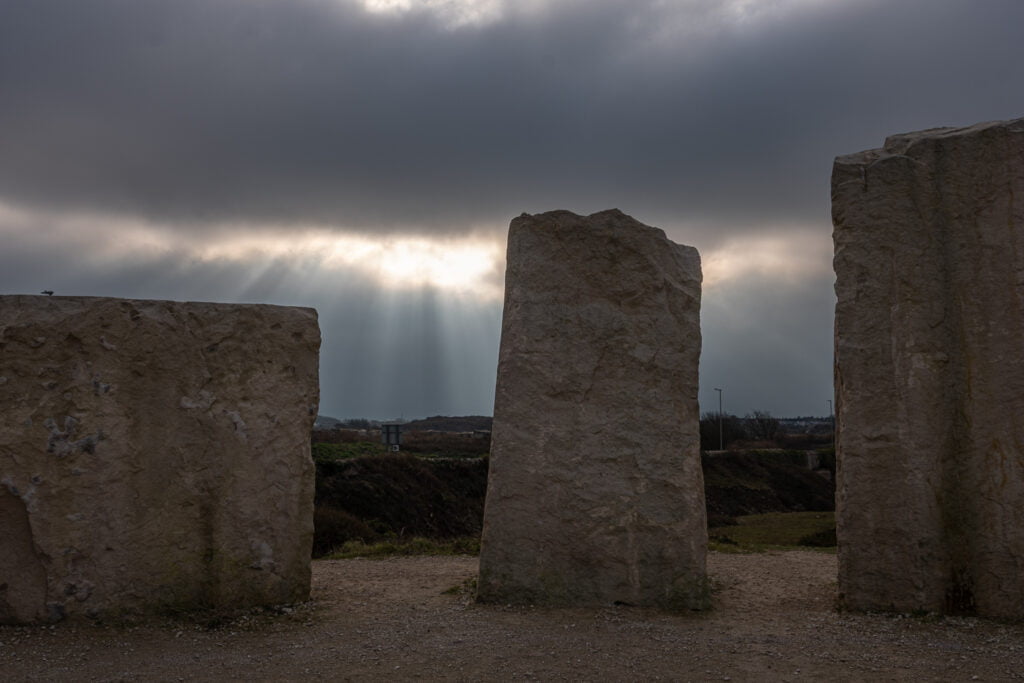
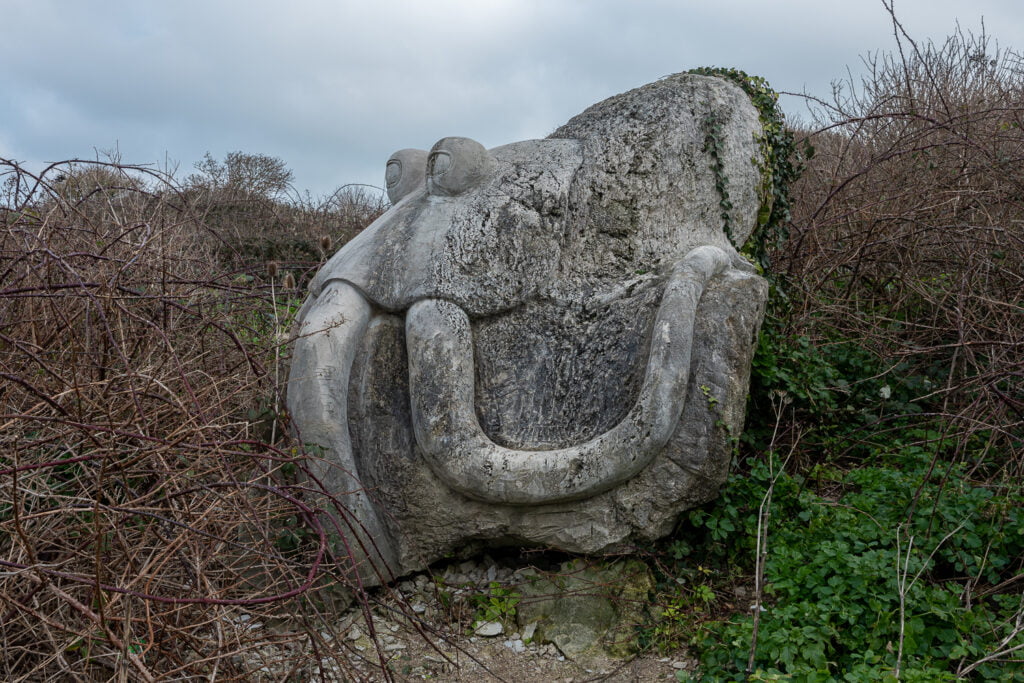
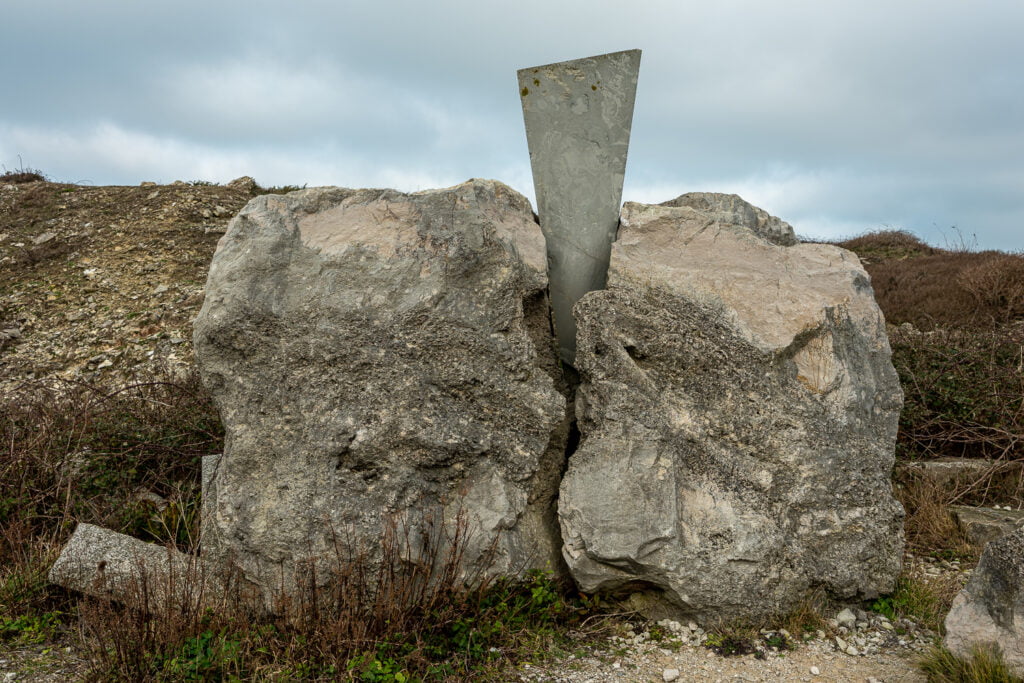
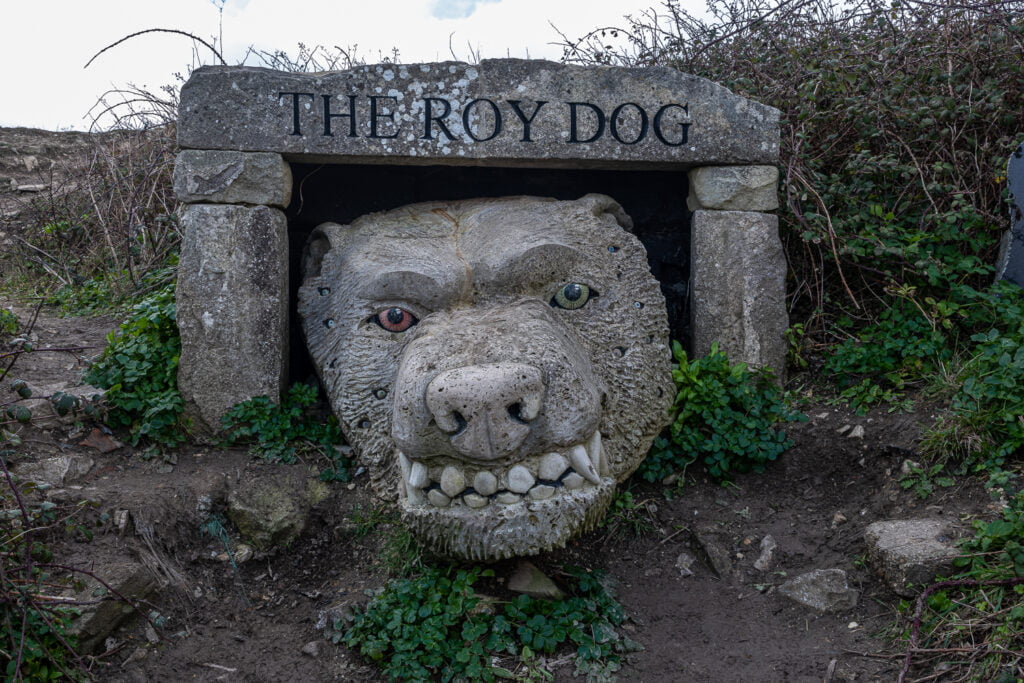
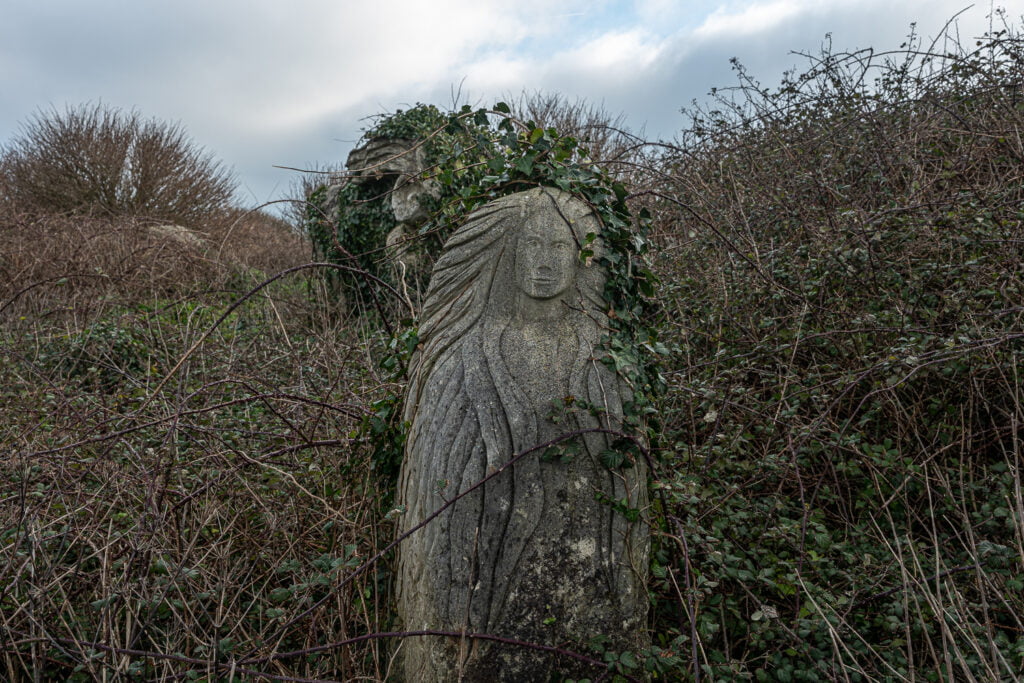
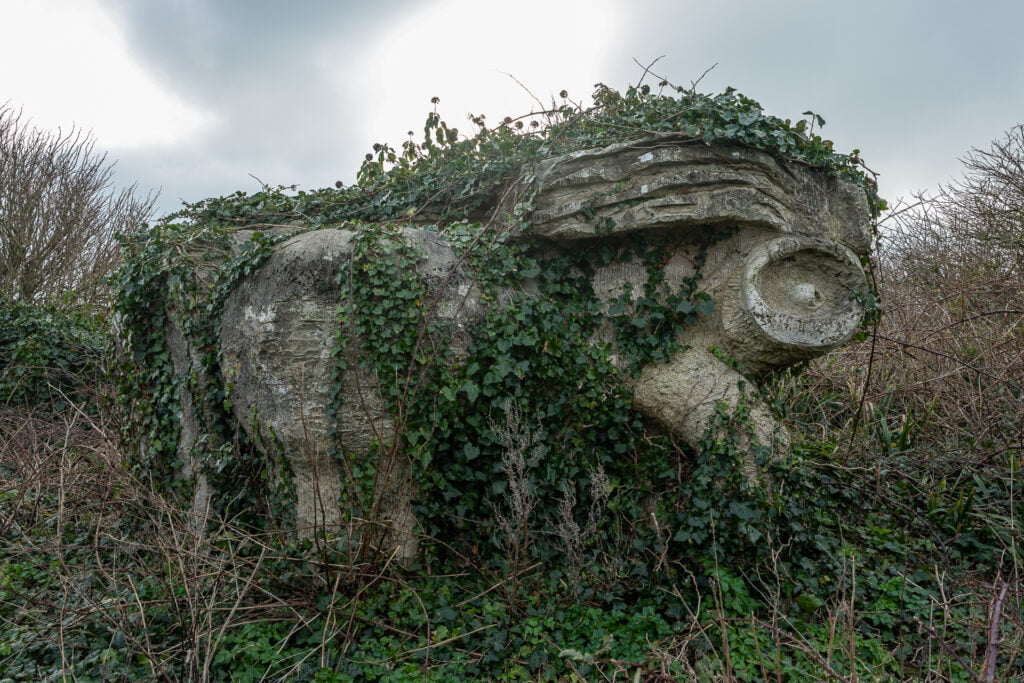
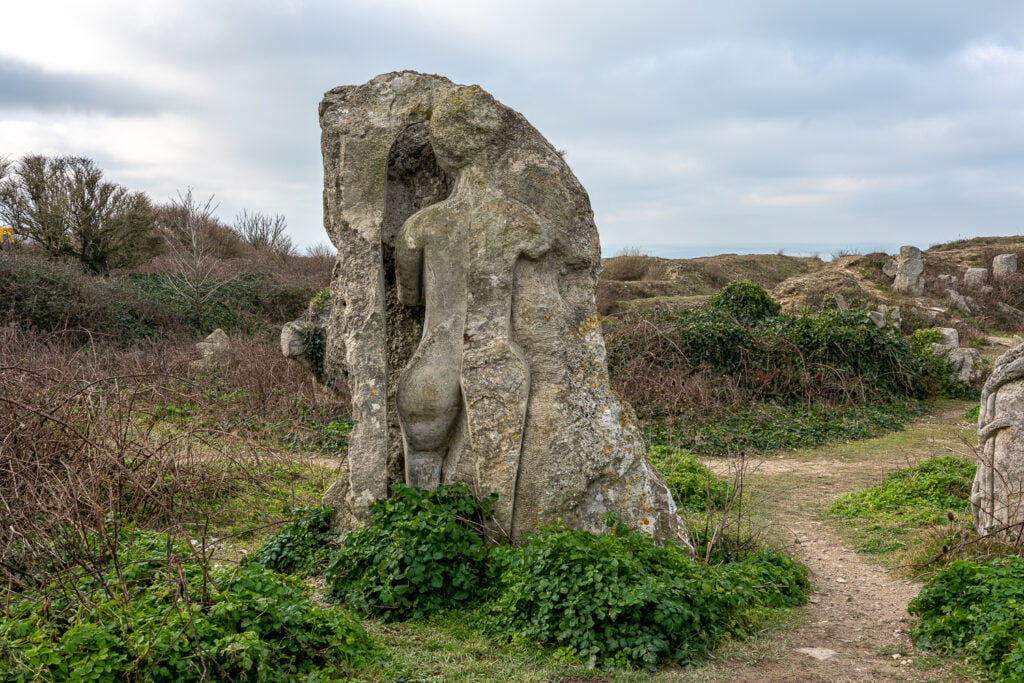
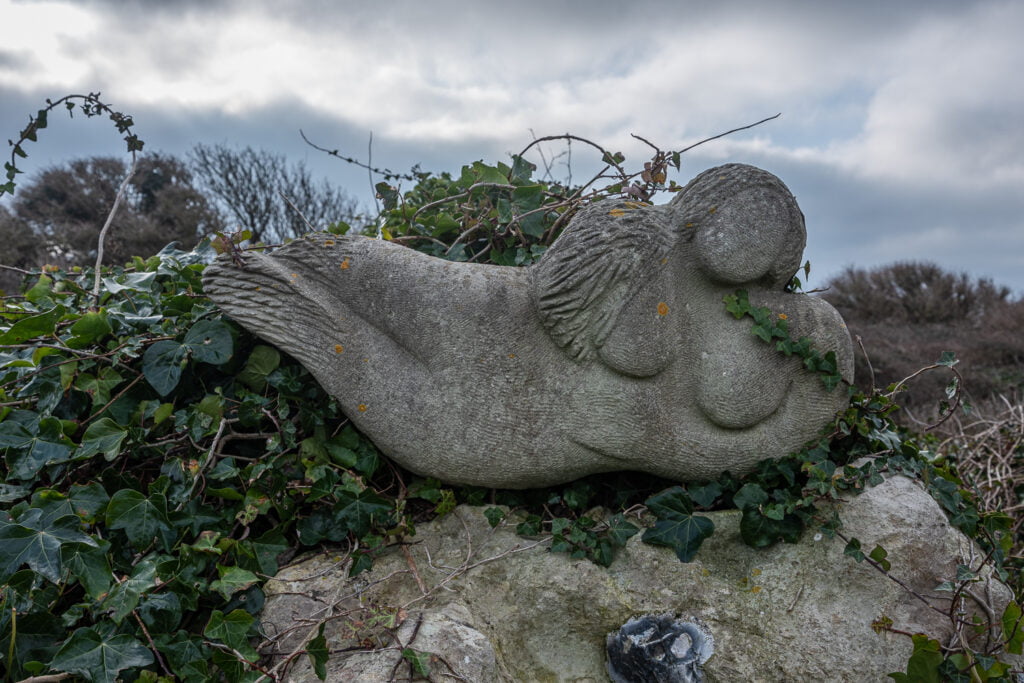
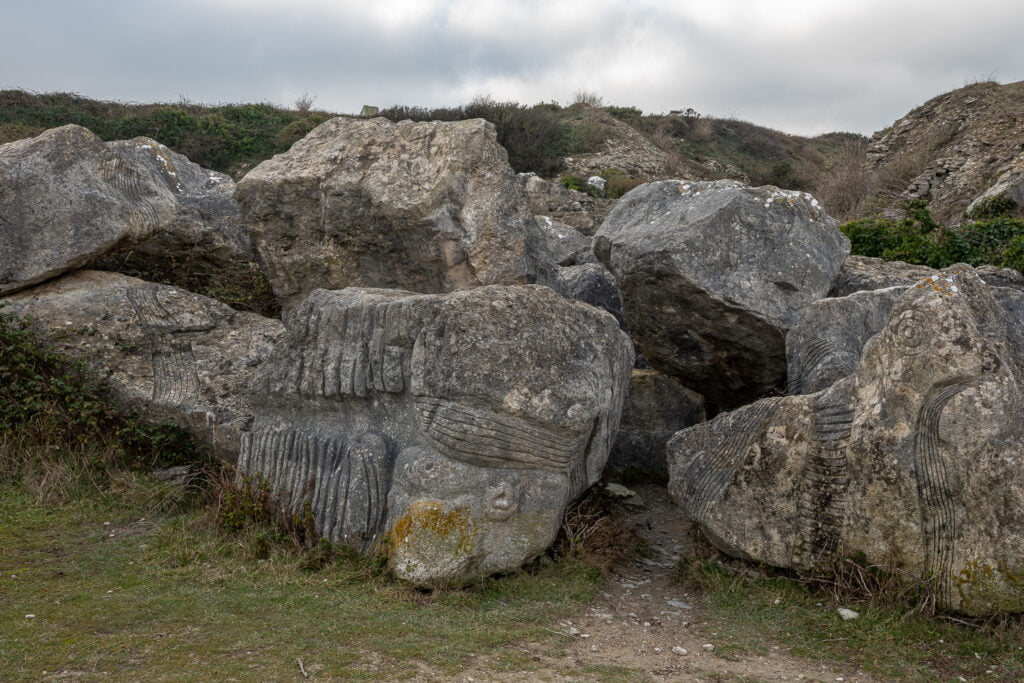
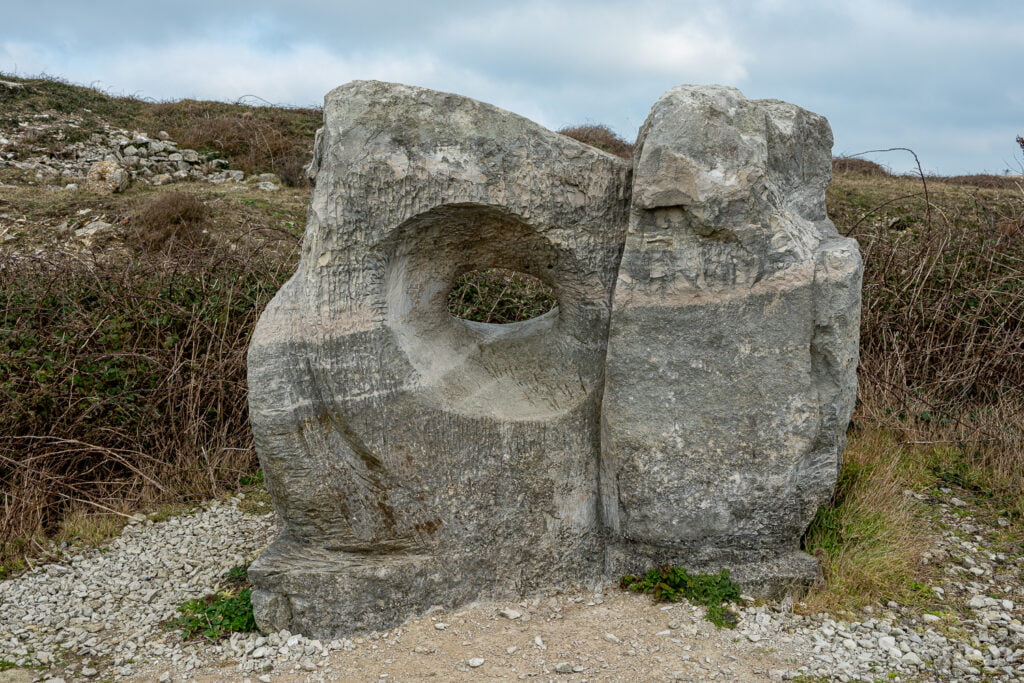
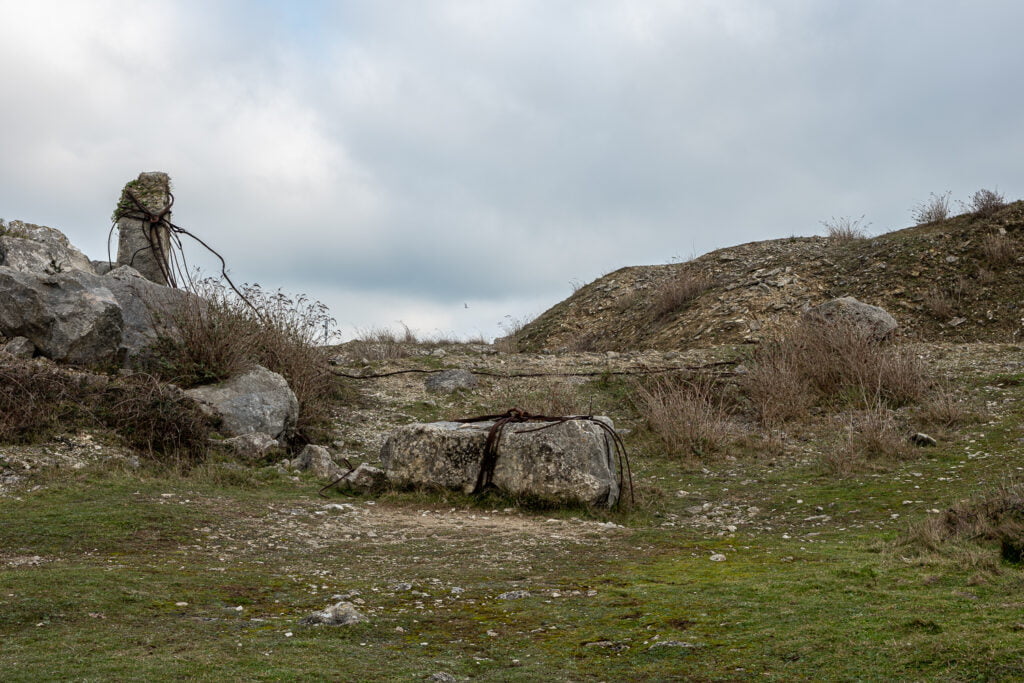
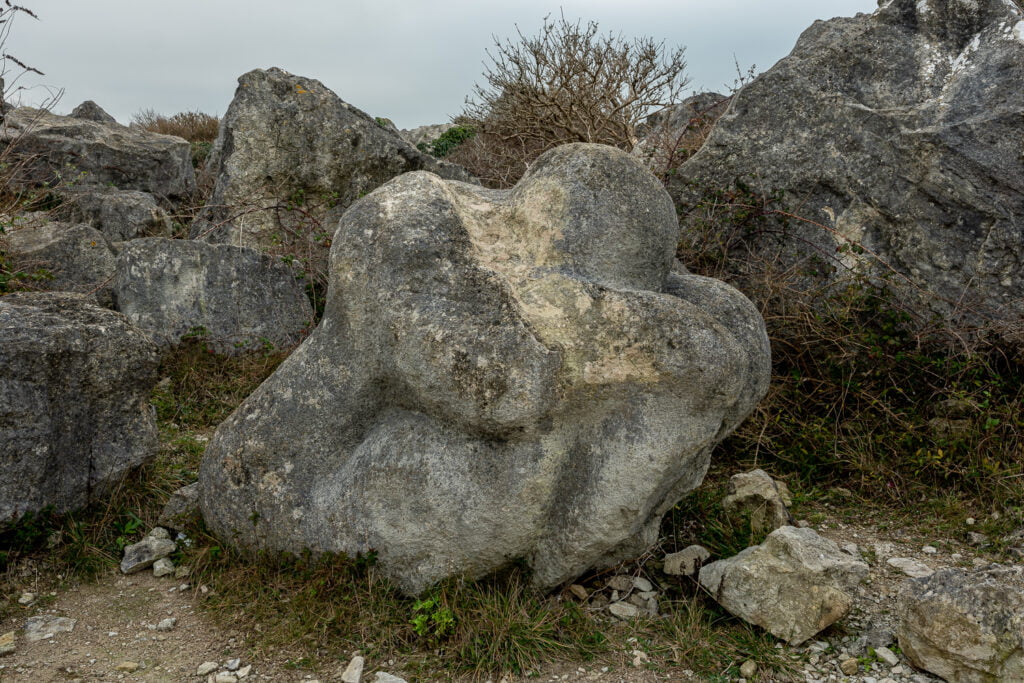
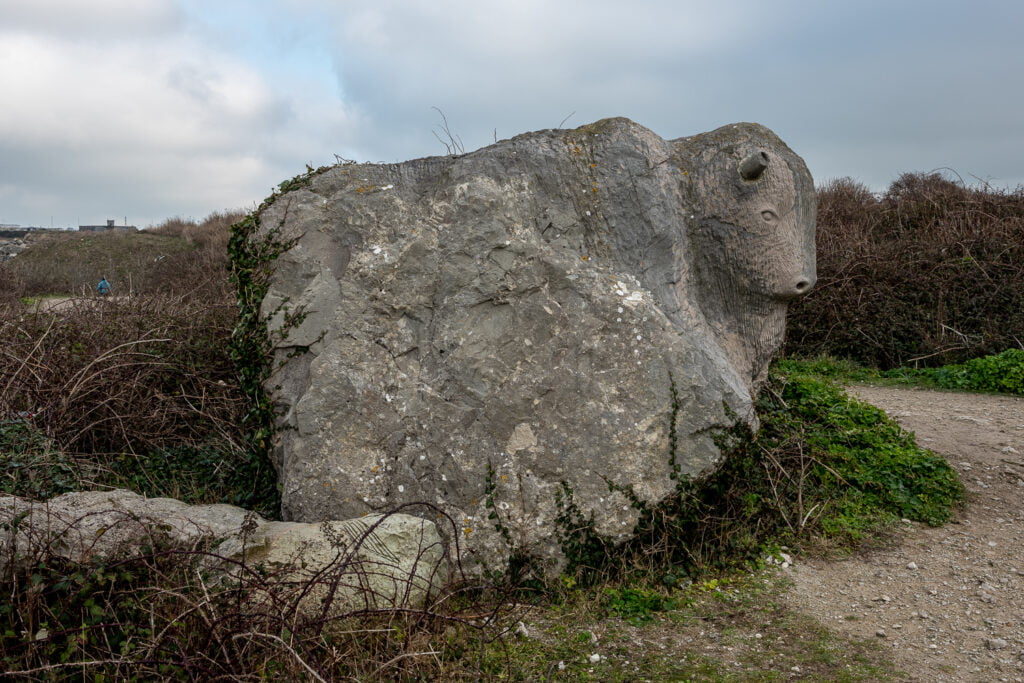
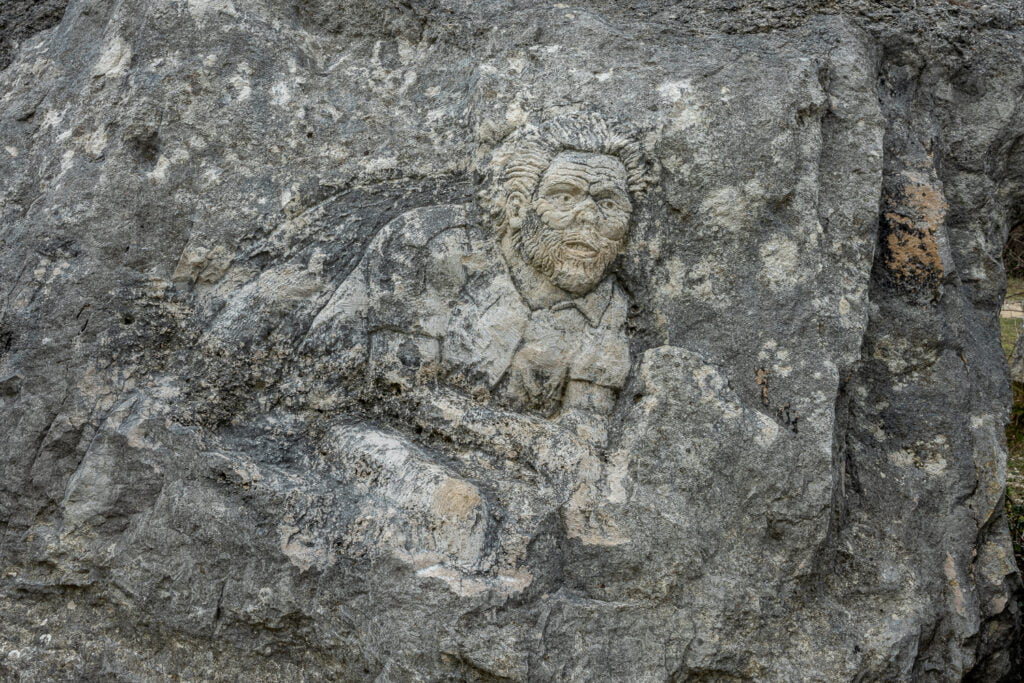
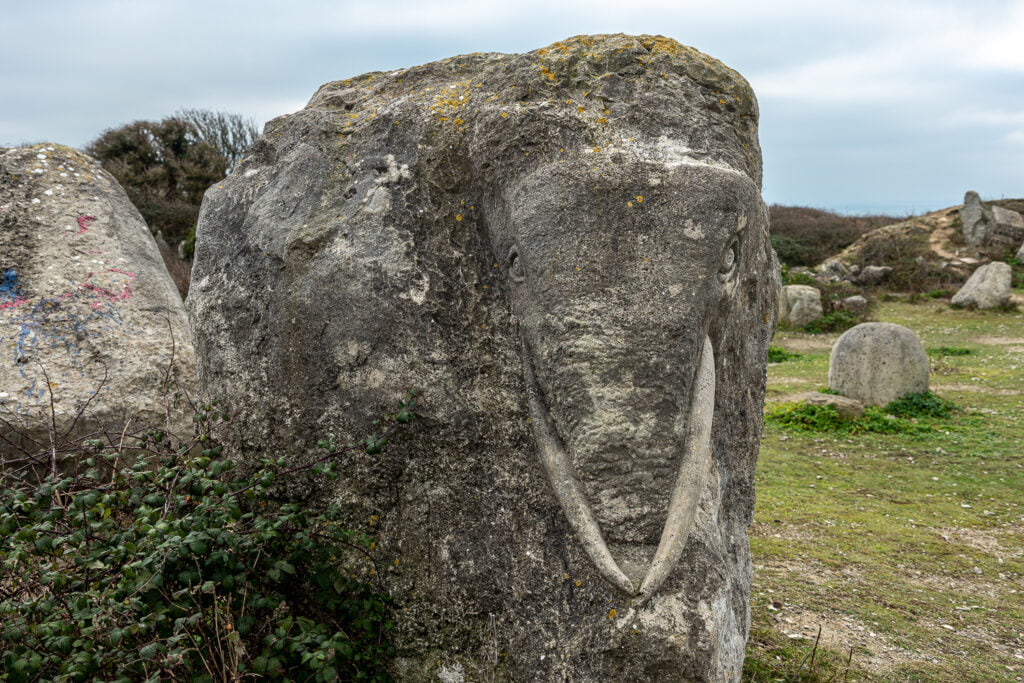
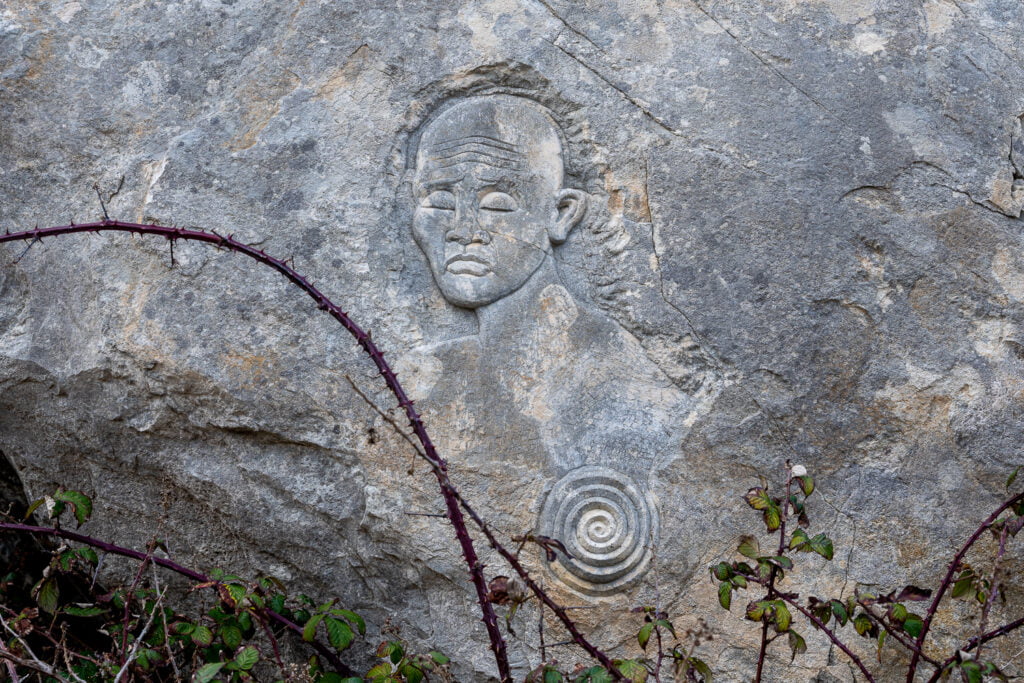
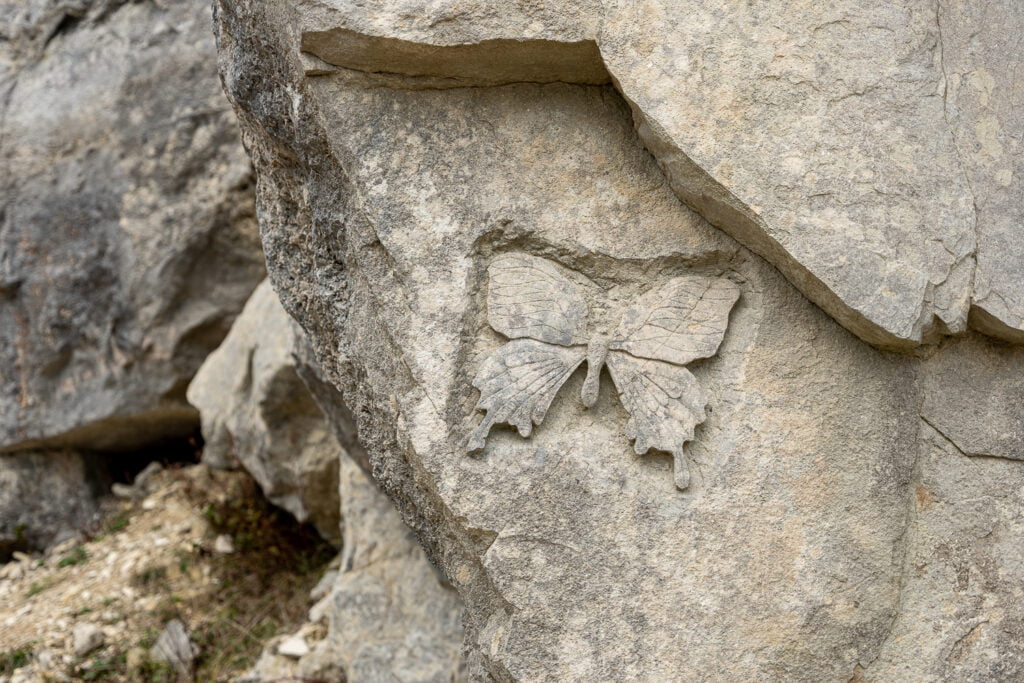
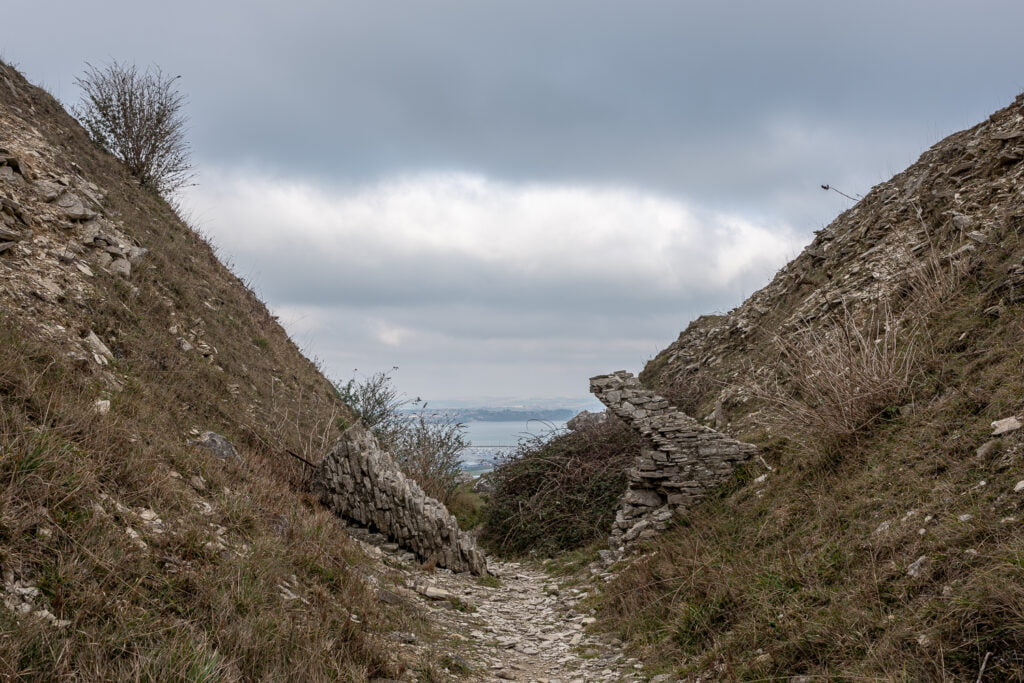
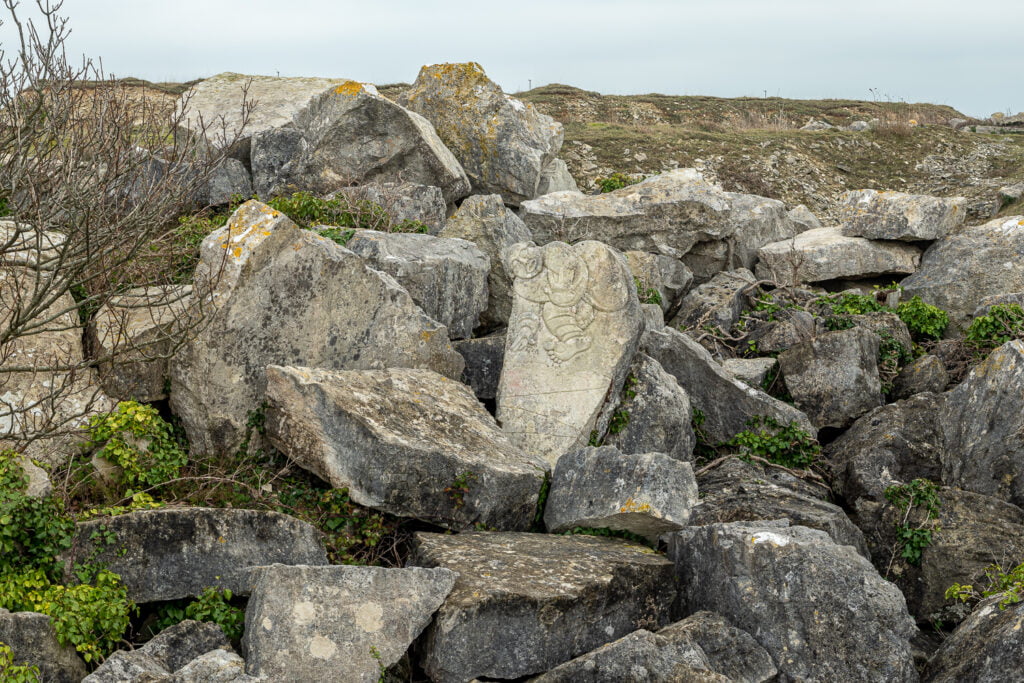
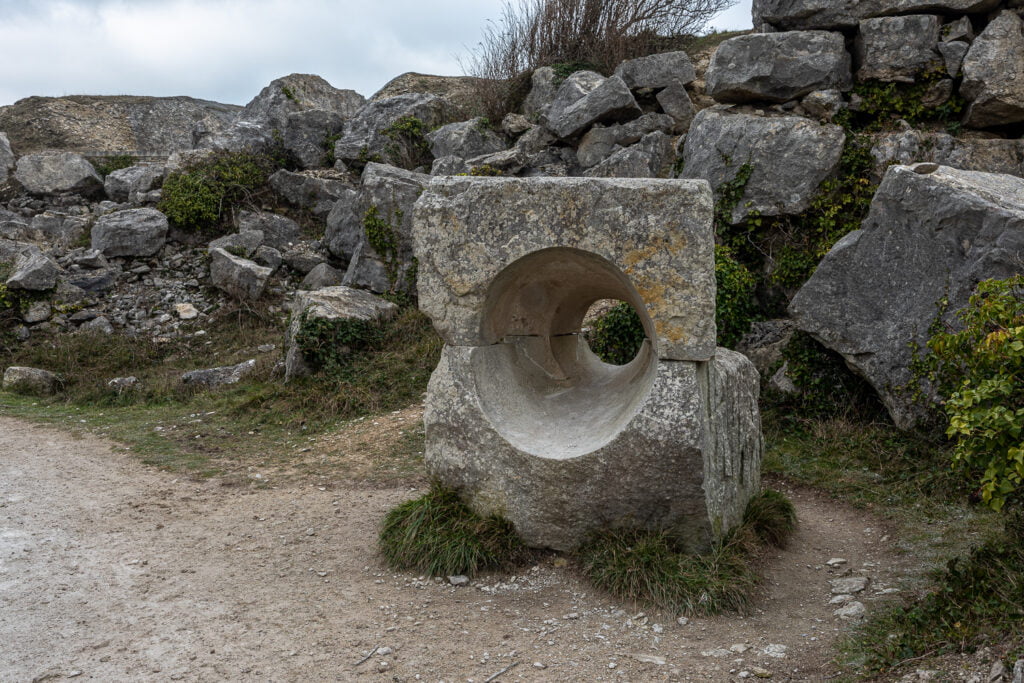
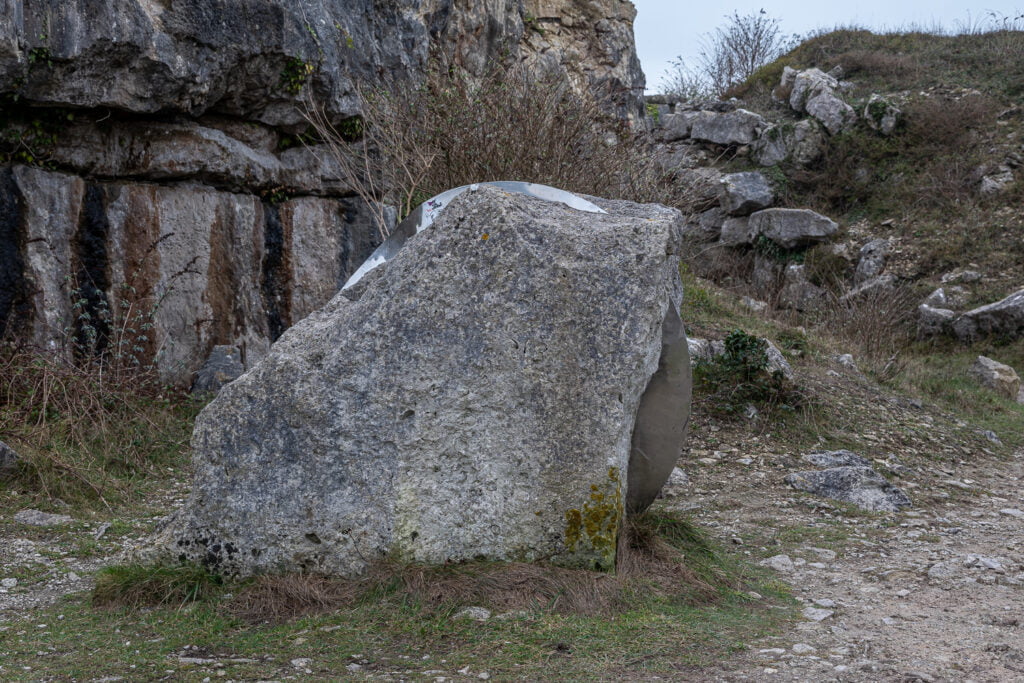
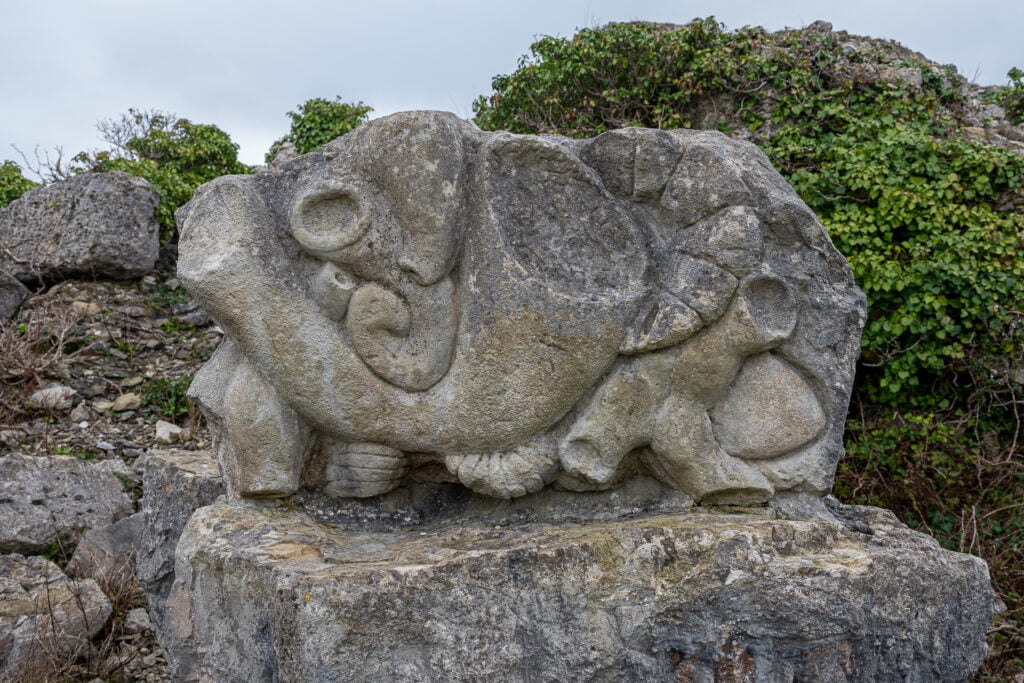
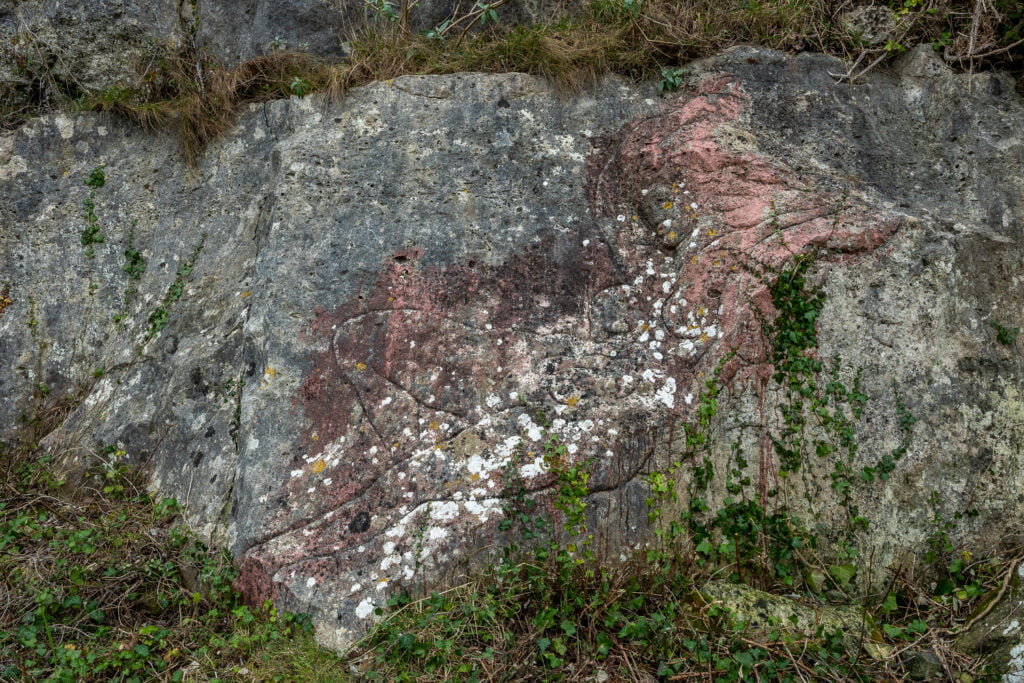
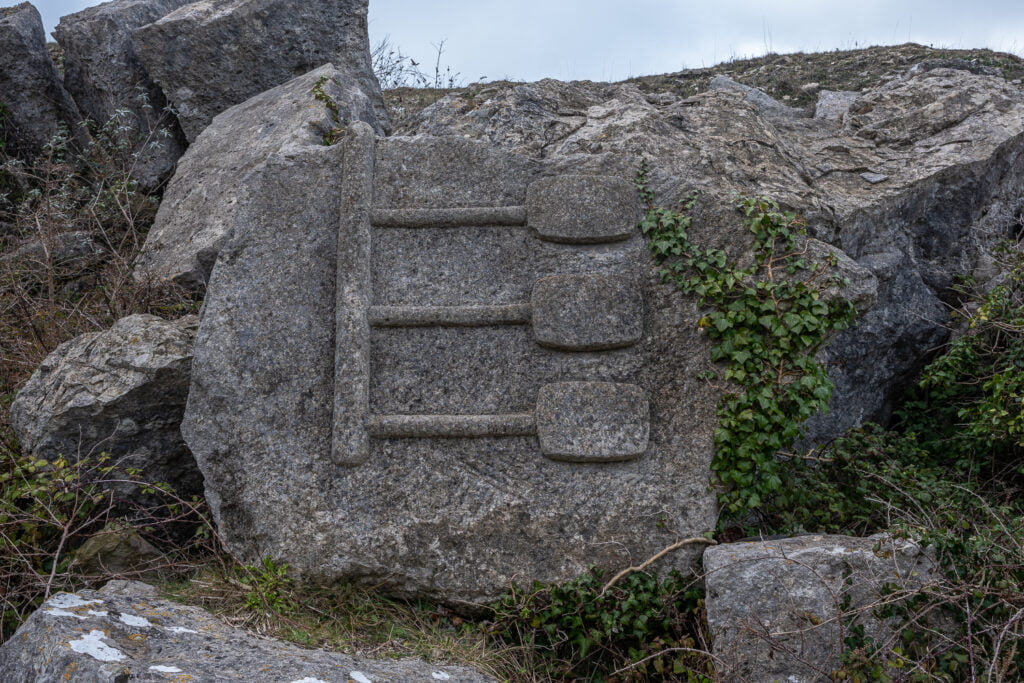
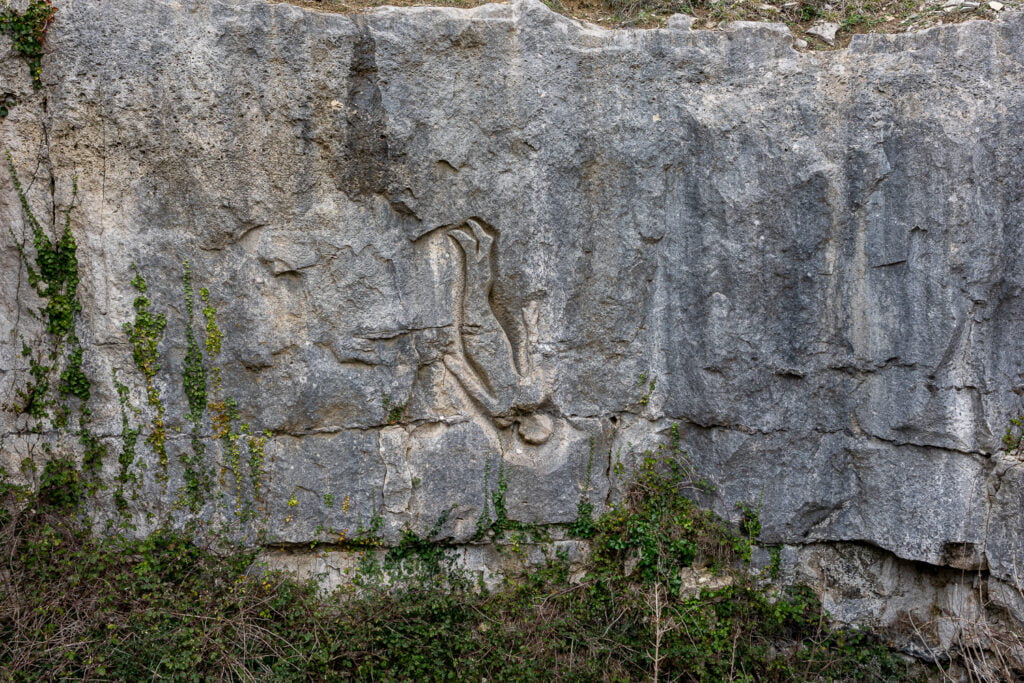
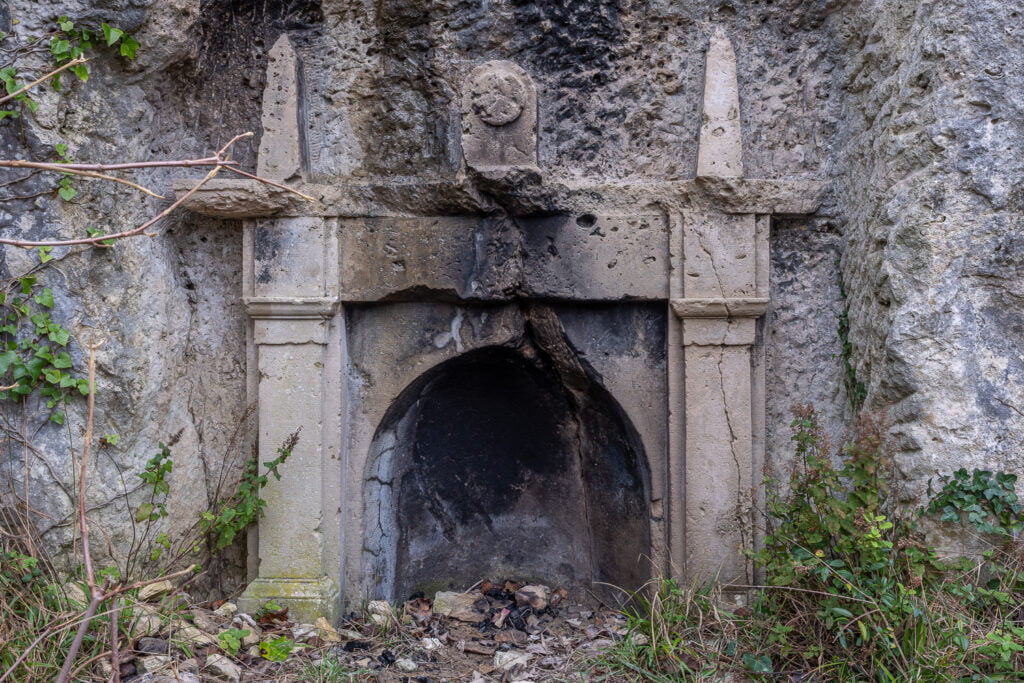
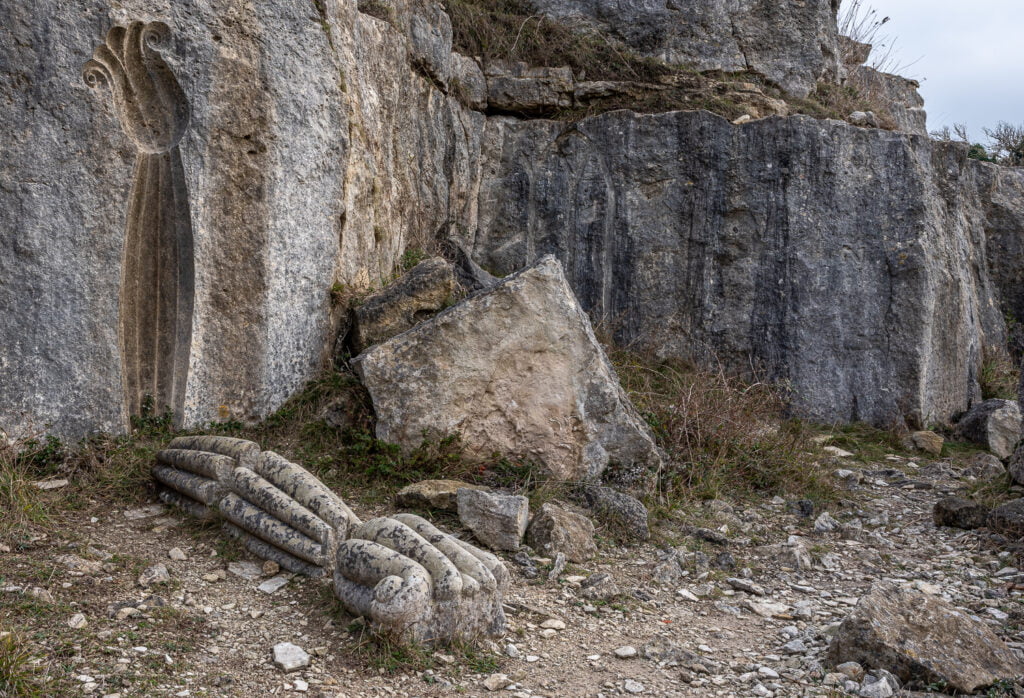
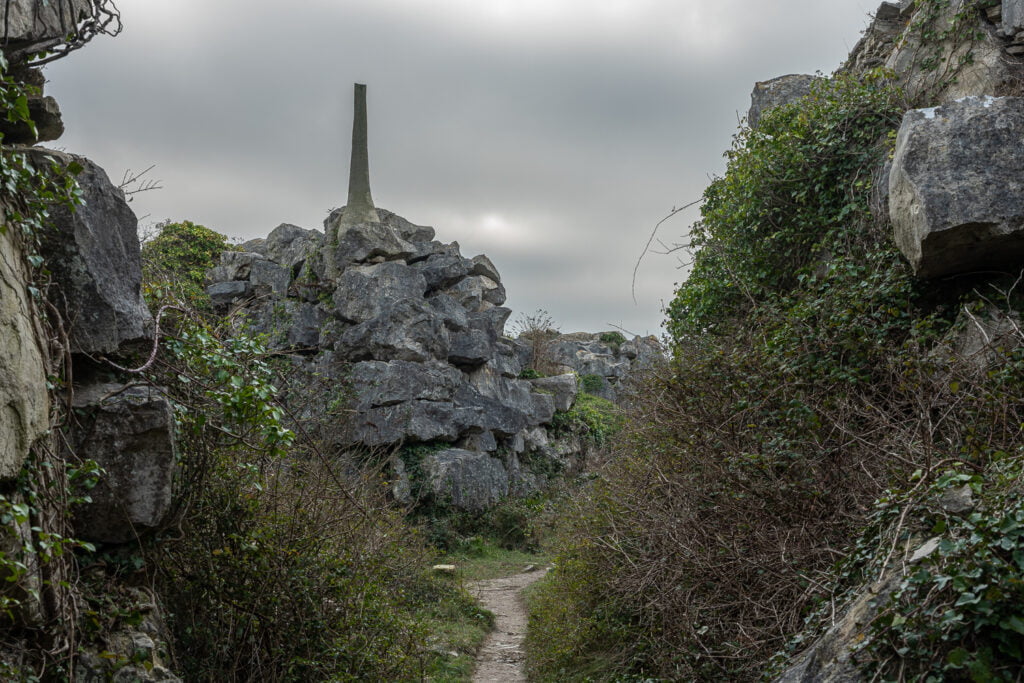
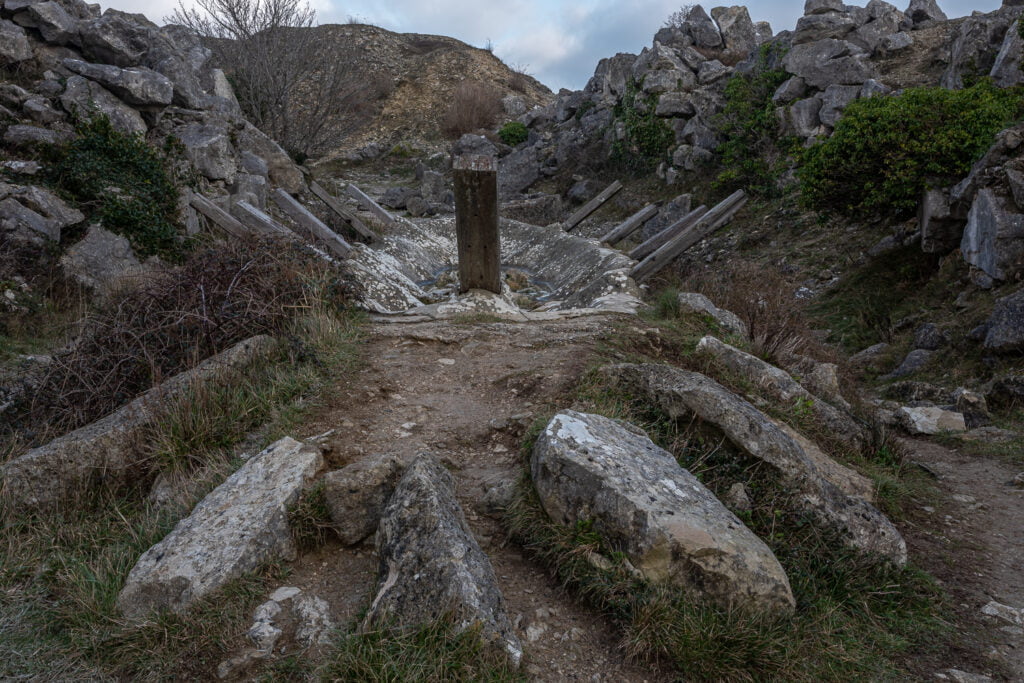
The Sculpture Park is a Trust which is run by Hannah xxxxxx, MA RA, who takes sculptor groups in the summer in the building below.
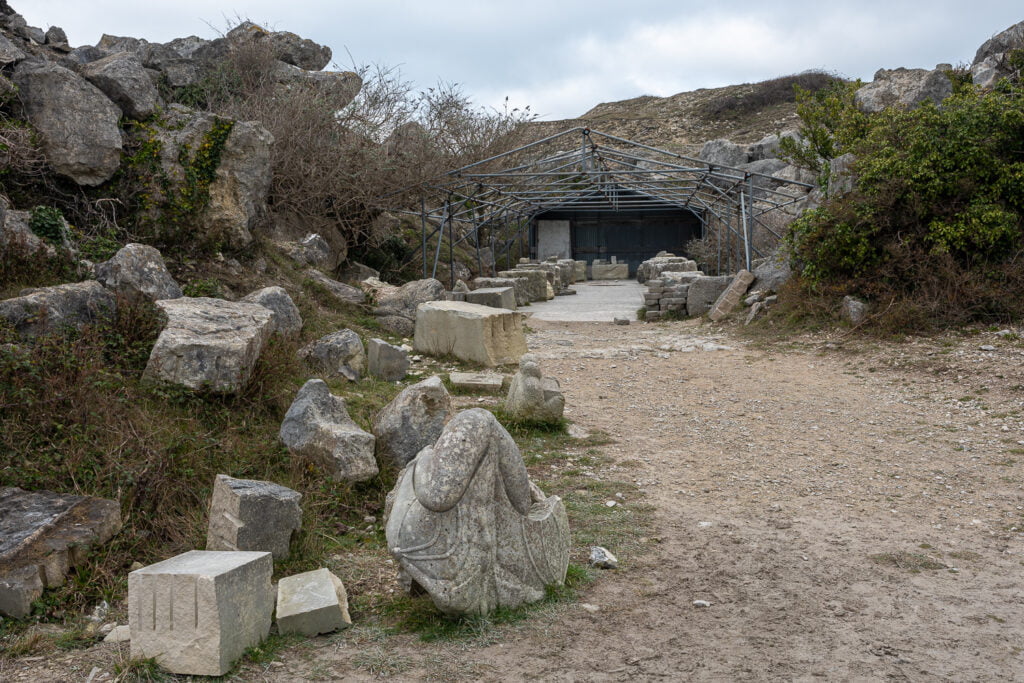
There are installations scattered across the Park. This is a maze, below are a star and a name and a date.
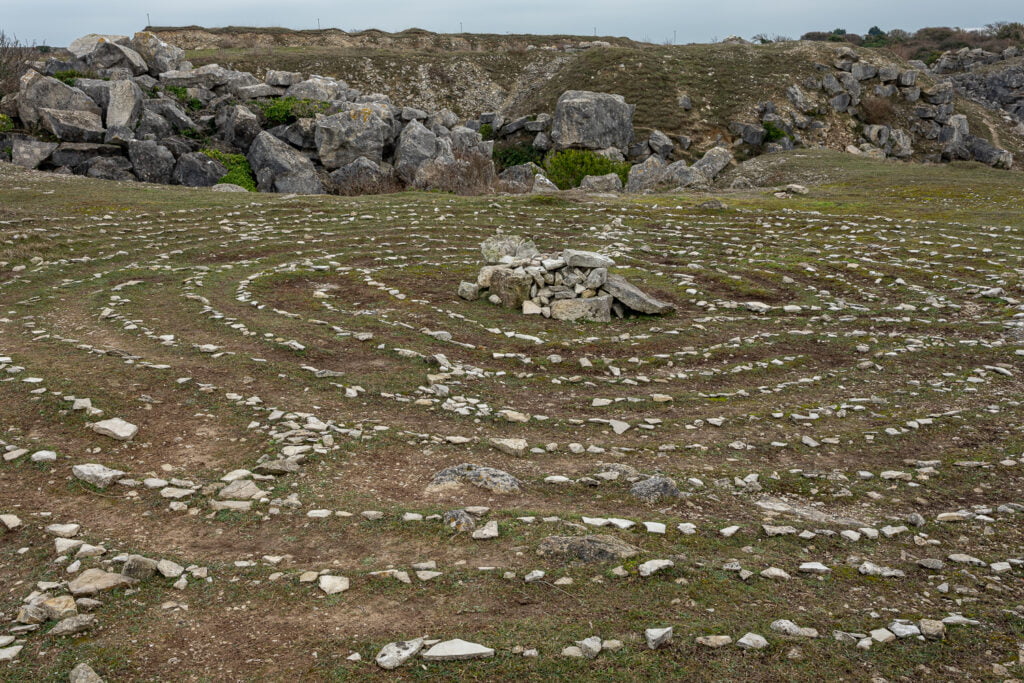
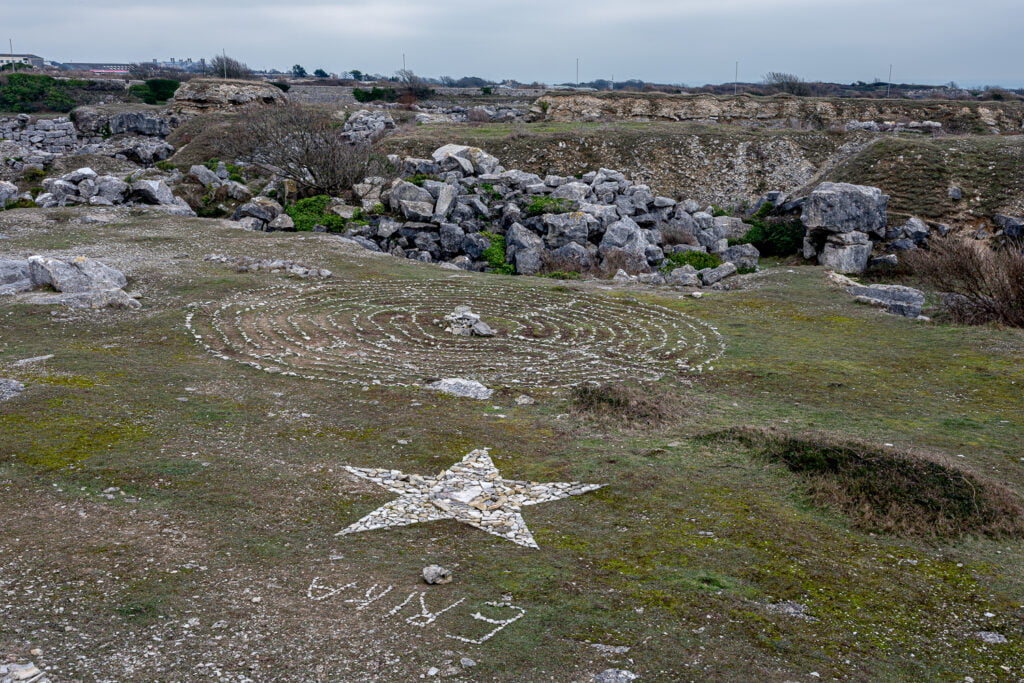
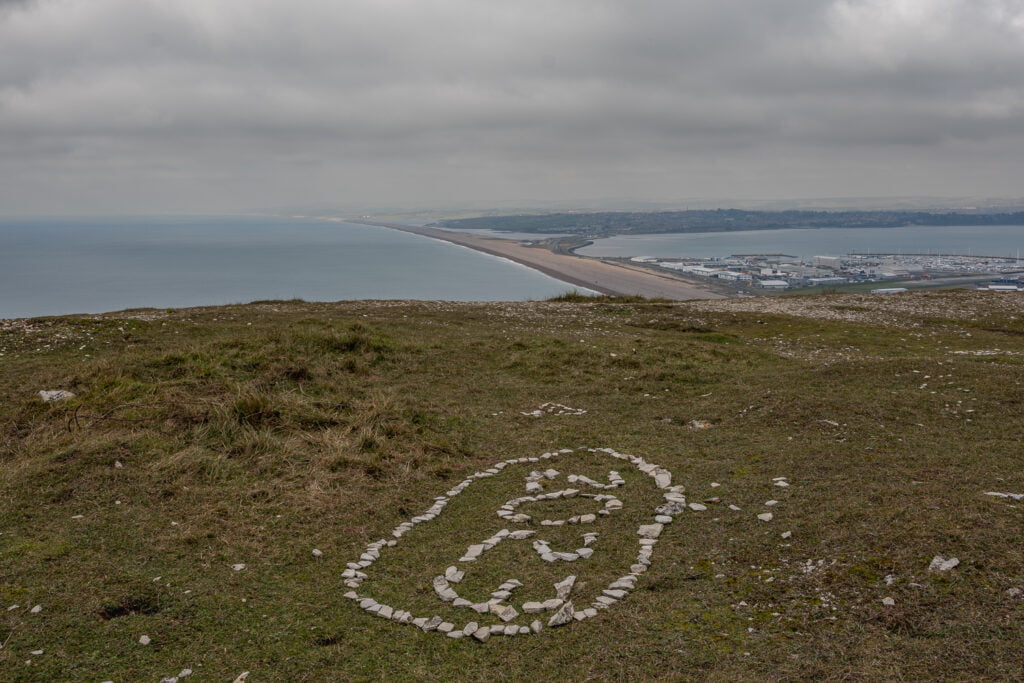
Late afternoon I
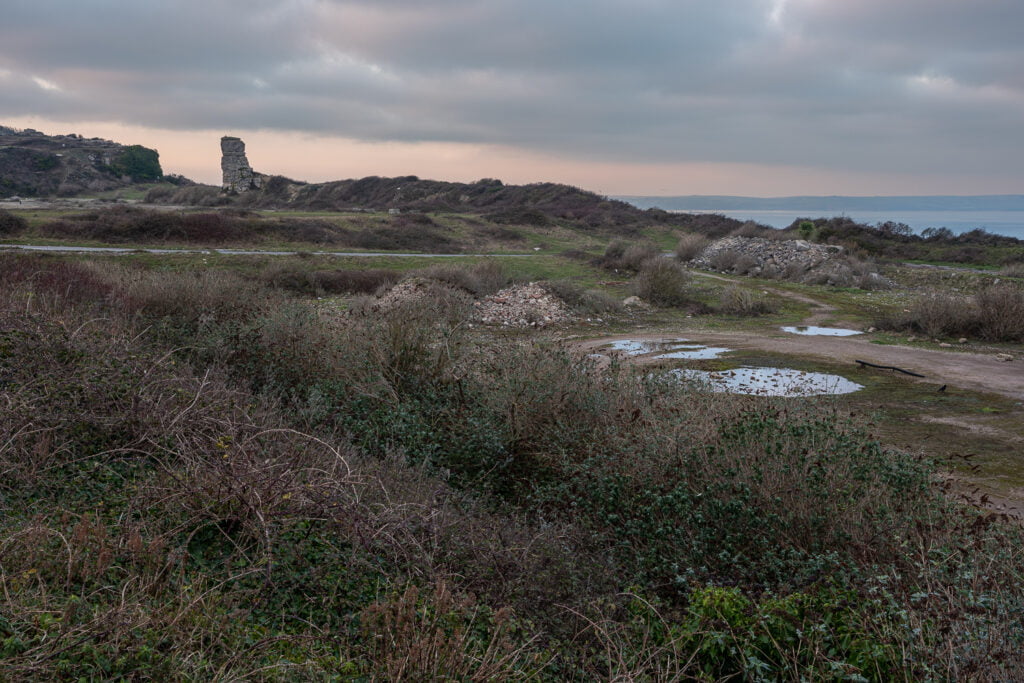
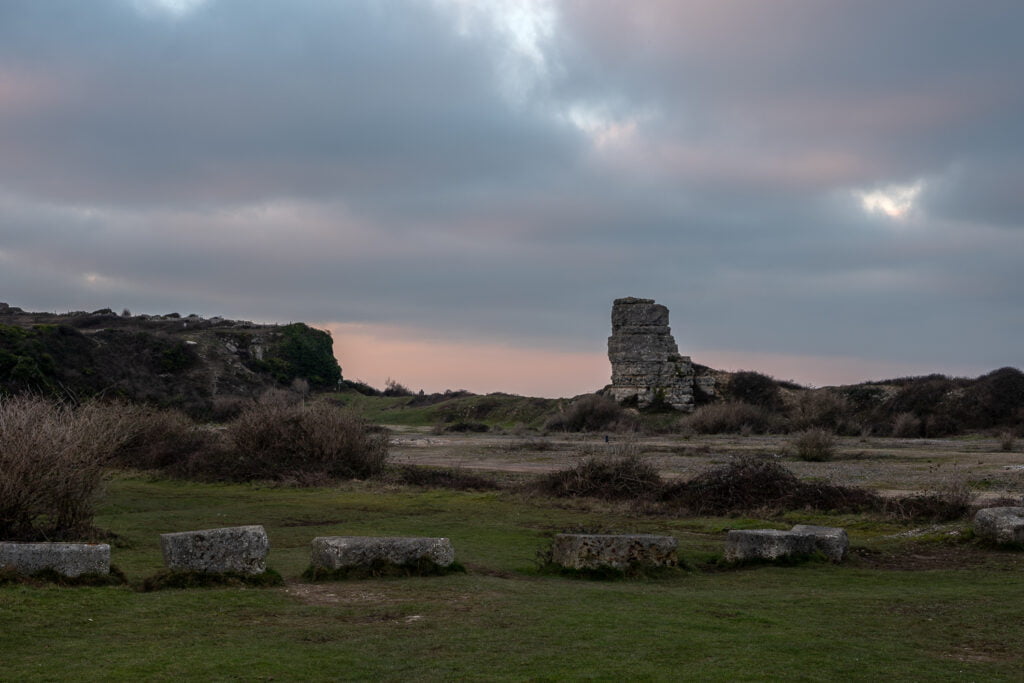
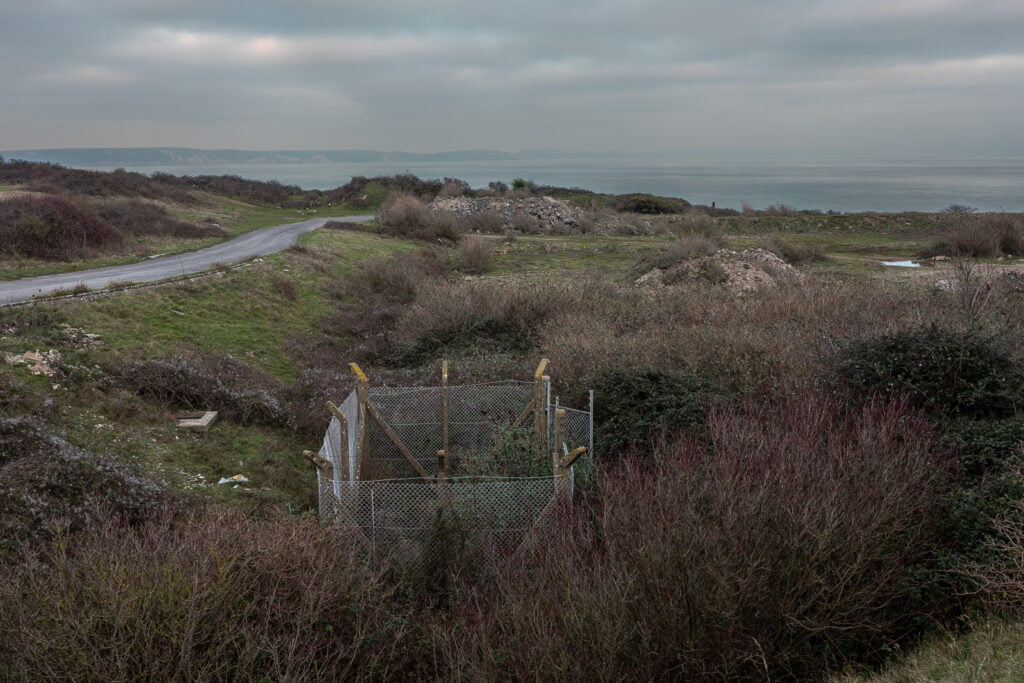
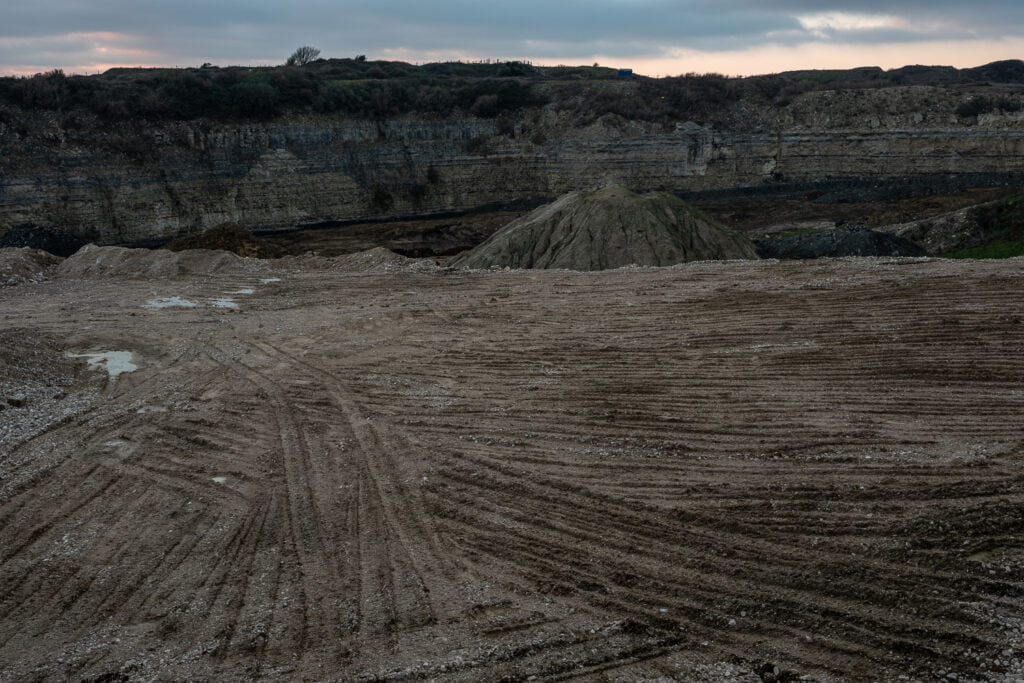
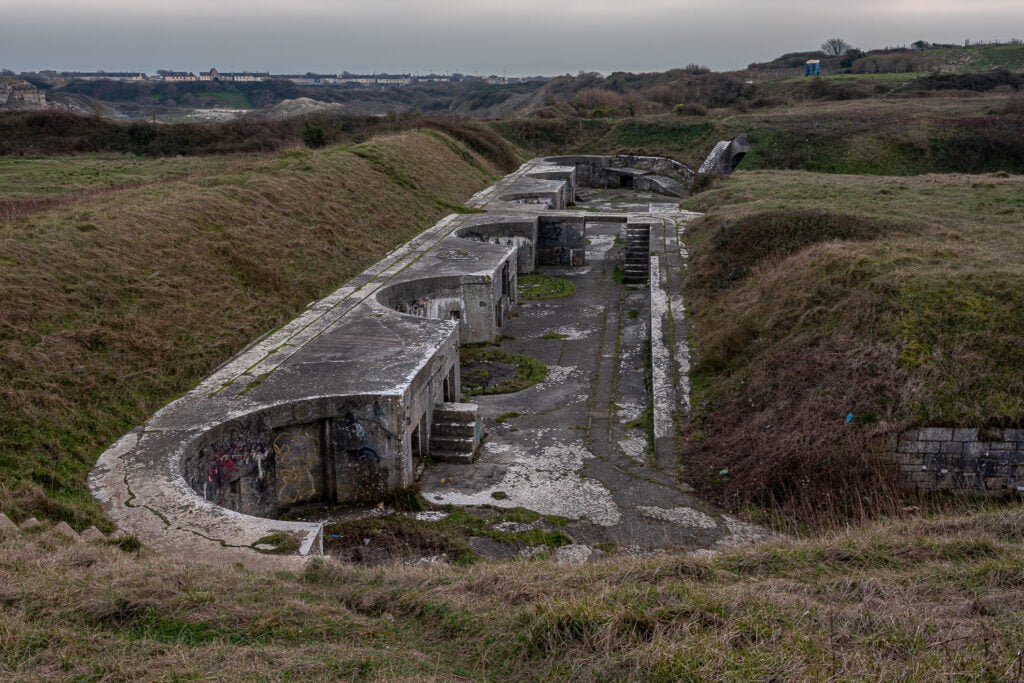
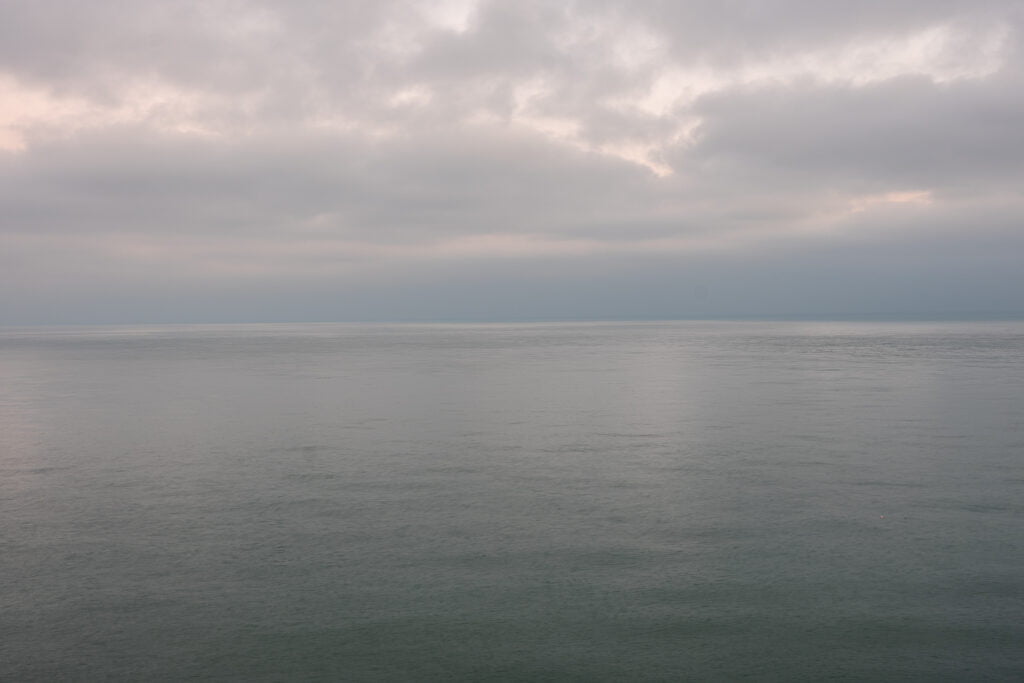
Day 3 26th January 2023
Another bitterly cold day, but a little brighter with initially sun and blue sky. Chesil Beach comes to its southern end at Portland, specifically at Chesil Cove and the small village of Chiswell. After storms, the curved steep bank of pebbles is often covered in driftwood and there were several structures there which had been made from strom-deposited detritis. Small fish had also been washed up, and a small fishing boat and its acoutrements was tethered to the wall some yards up the shingle. Looking back towards Portland and behind the small boat the cliifs rise beyond West Weares to Tout Quarry above, the location of the Sculpture Park.
Later I returned to the location of the remains of the High Angle Battery, adjacent to the Verne Citadel. This was formerly the site of a series of large gun emplacements which could fire shells up to 6 miles in any direction. They were originally intentioned to fire high into the sky and to drop shells onto the decks of enemy ships, avoiding the re-inforced metal of the hulls of enemy warships. As military vessels became faster their use became limited. Proposed originally in 1890 they were scrapped in 1910, the guns sold to a local contractor who blew them with dynamite up and took them away. The battery became a tourist attraction but has fallen into decay. The series of tunnels from which the guns were provided with armaments are reputed to be haunted. I find its abondonment and subsequent decay interesting.
The final image of the day is a converted van camouflaged by military style netting claiming a little piece of the landscape for itself.
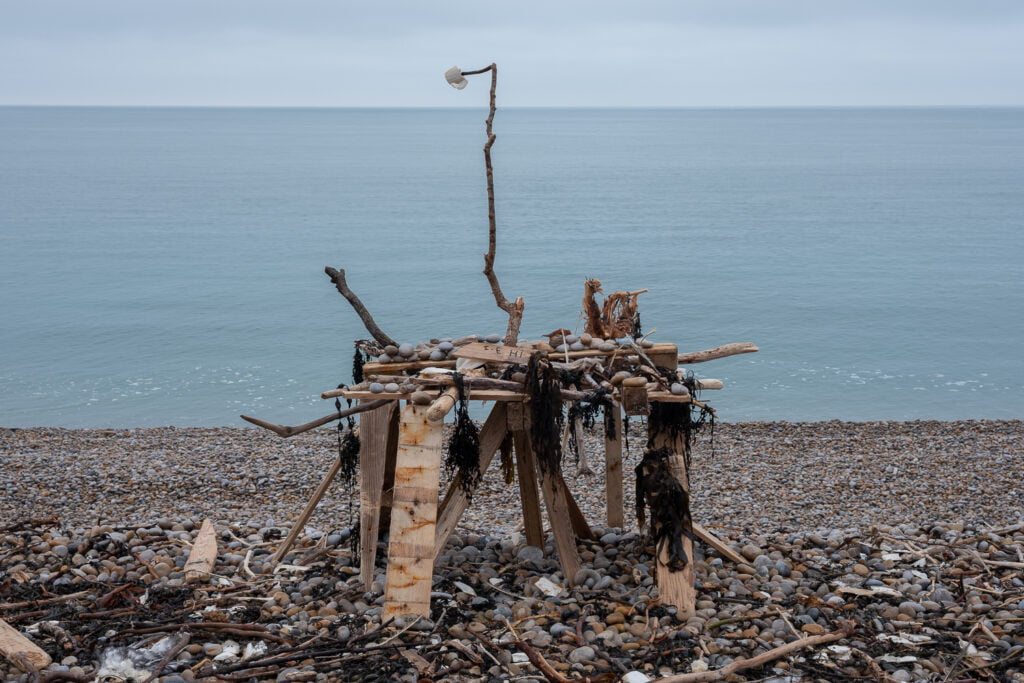
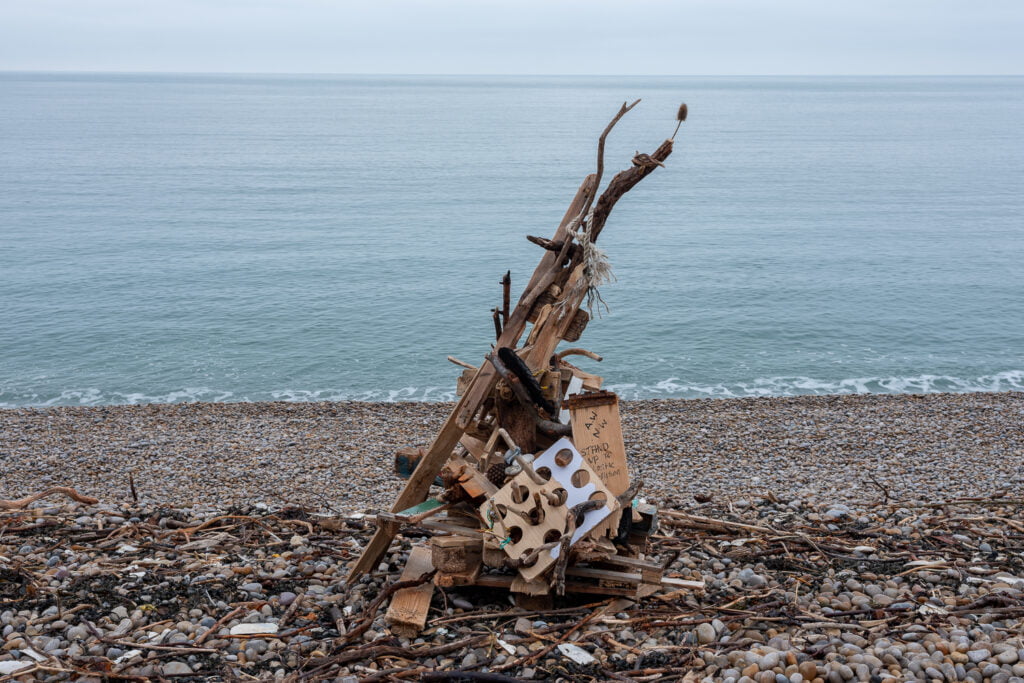
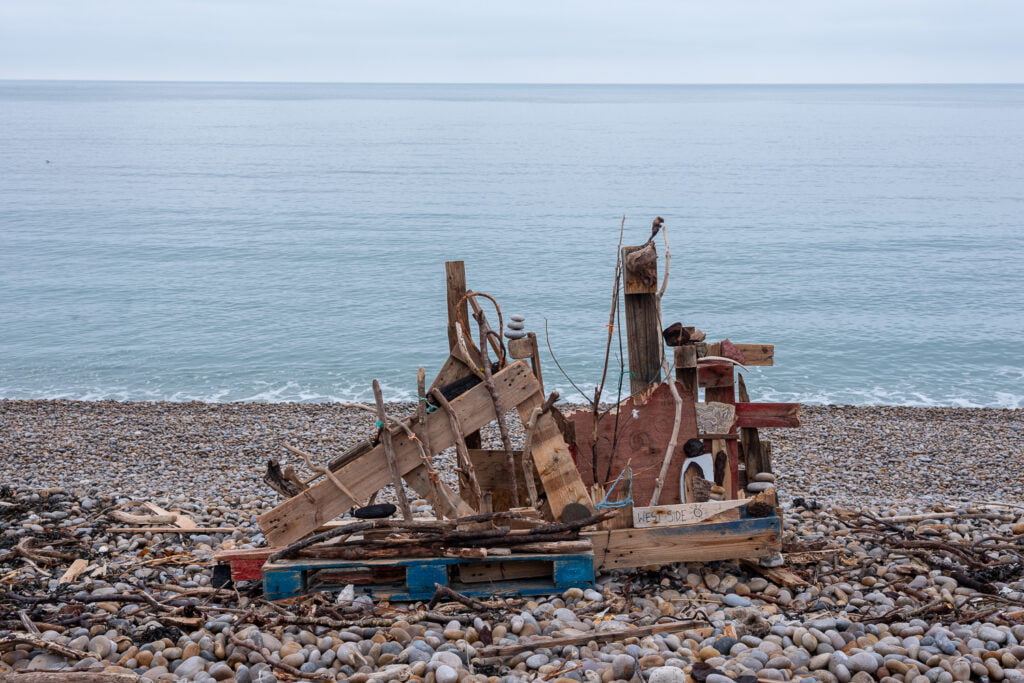
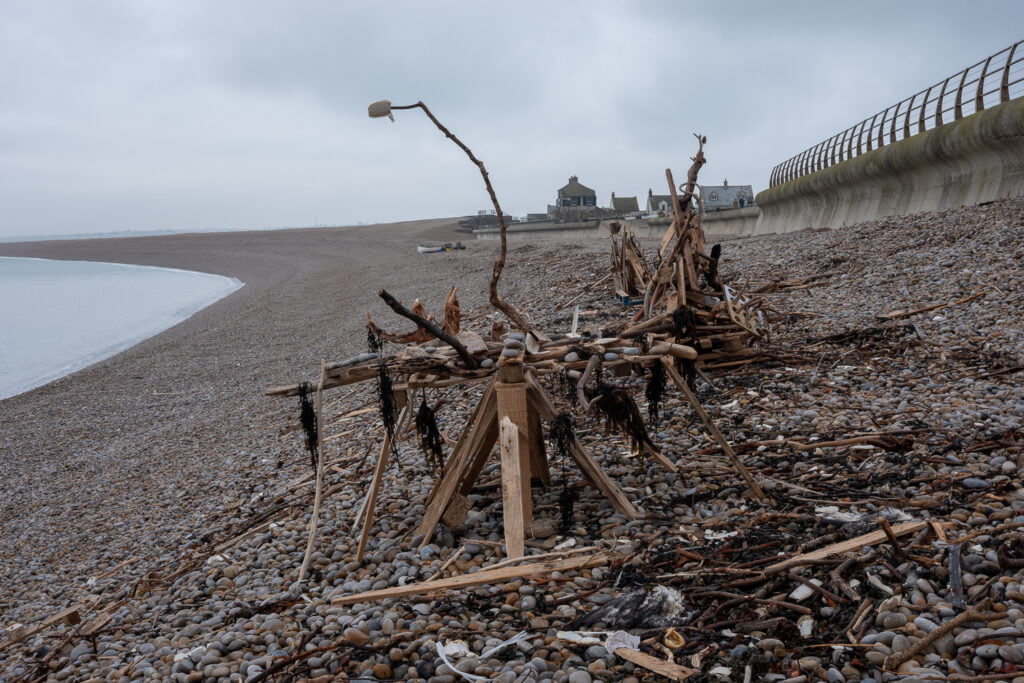
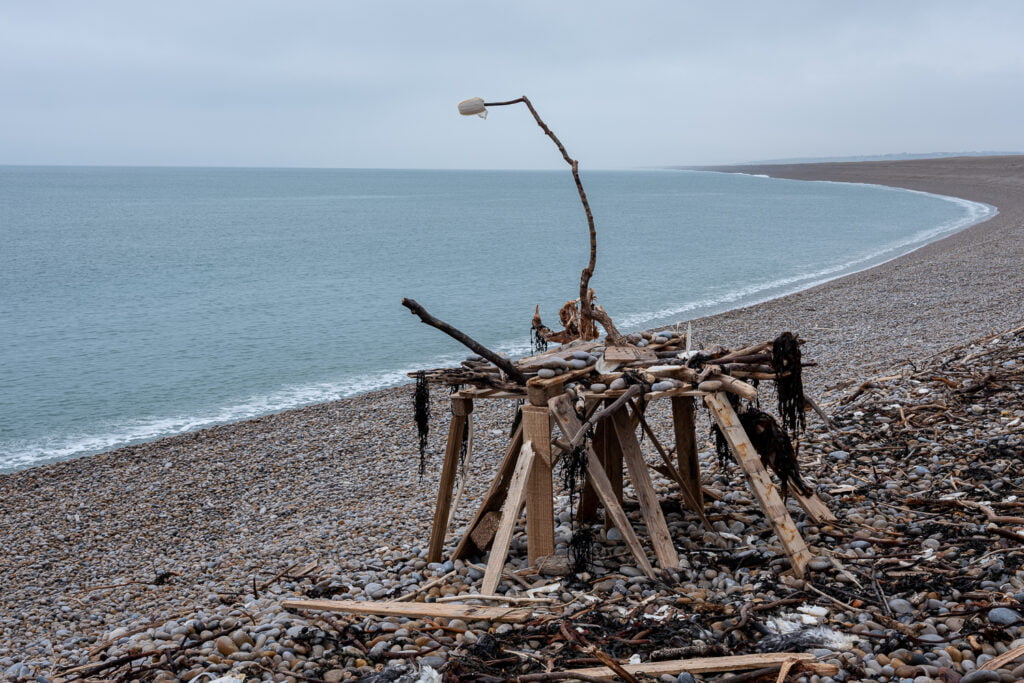
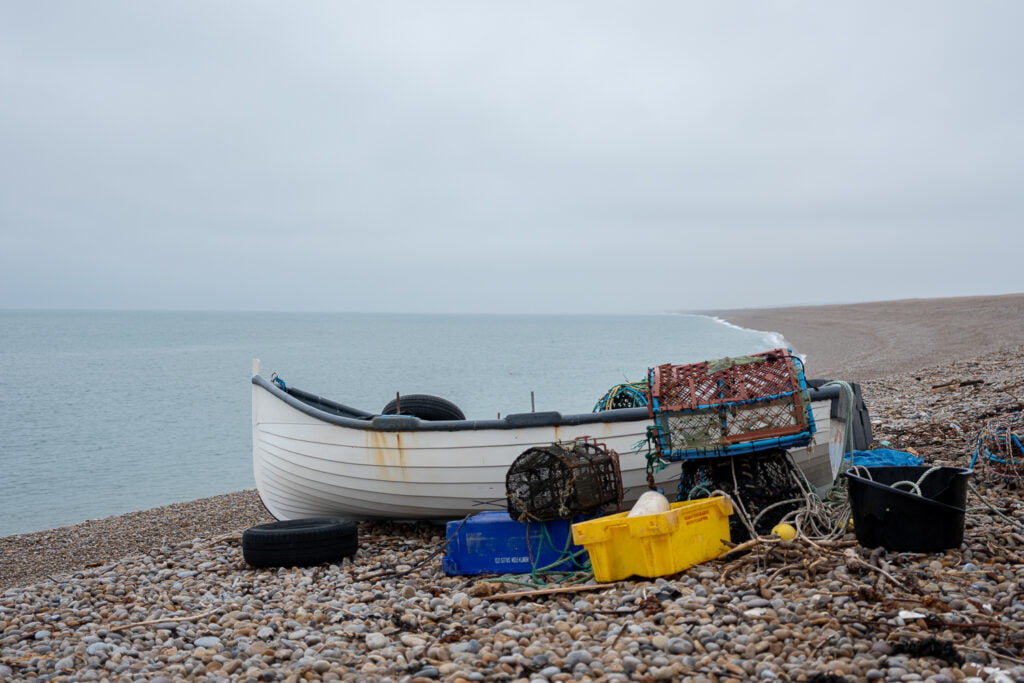
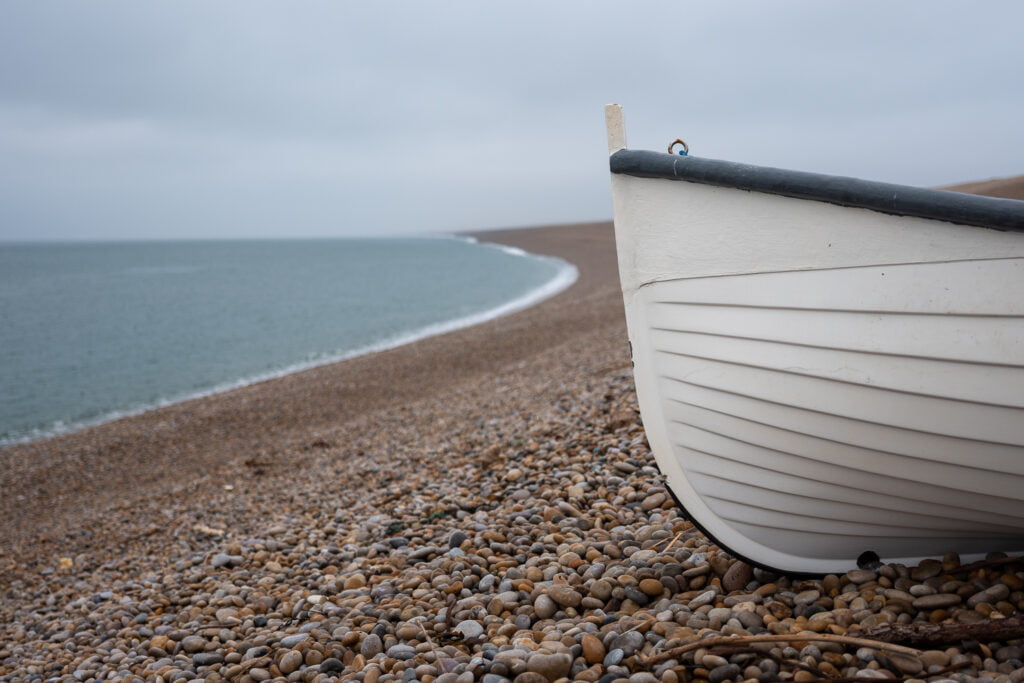
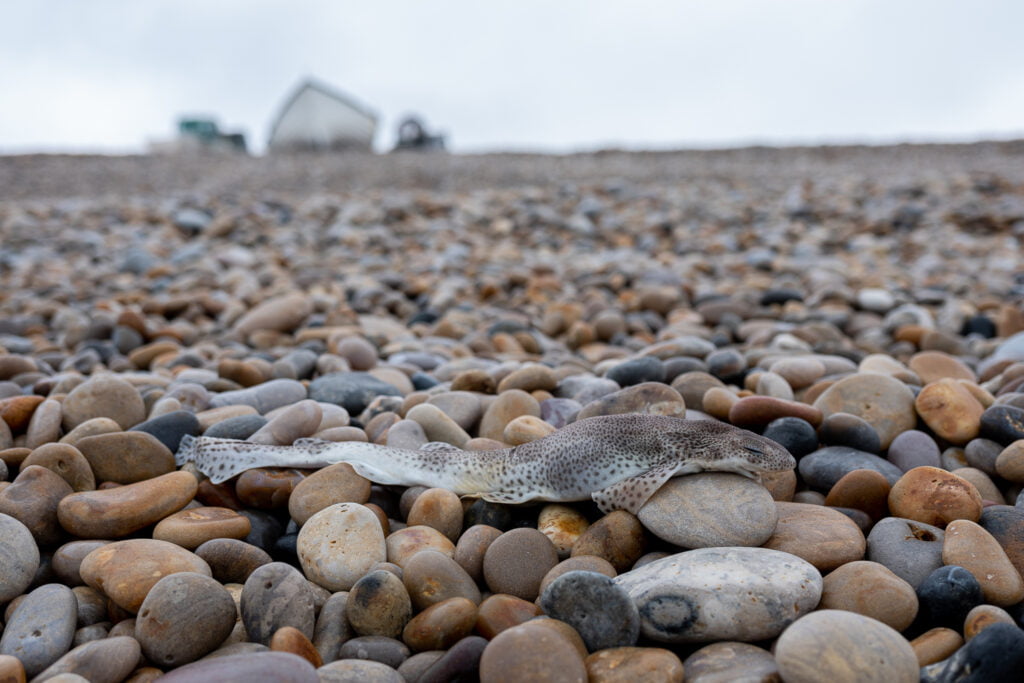
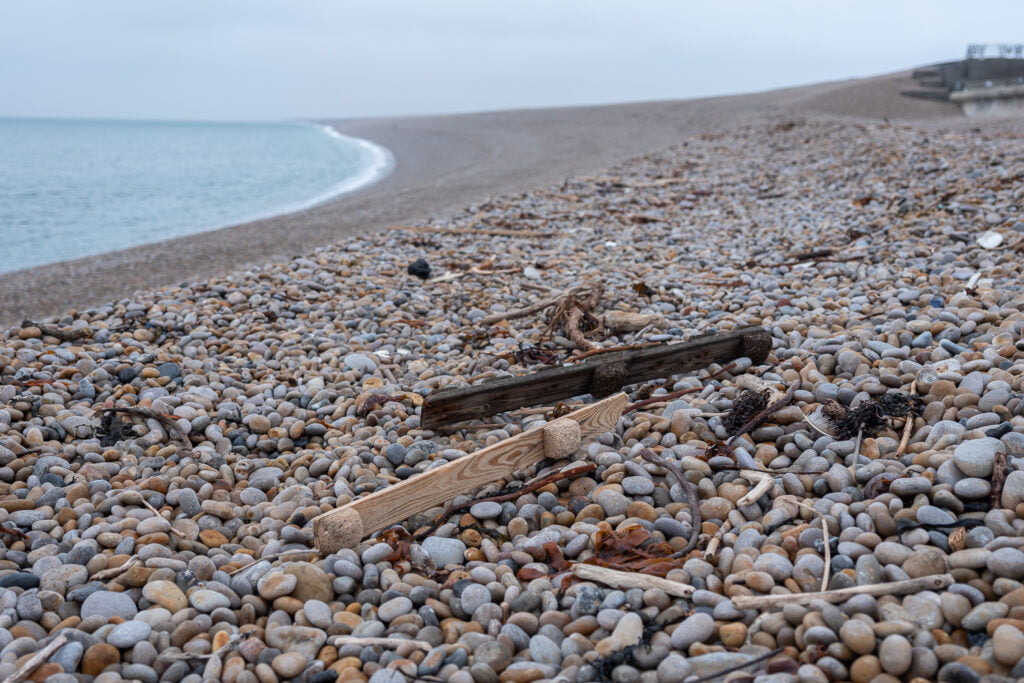
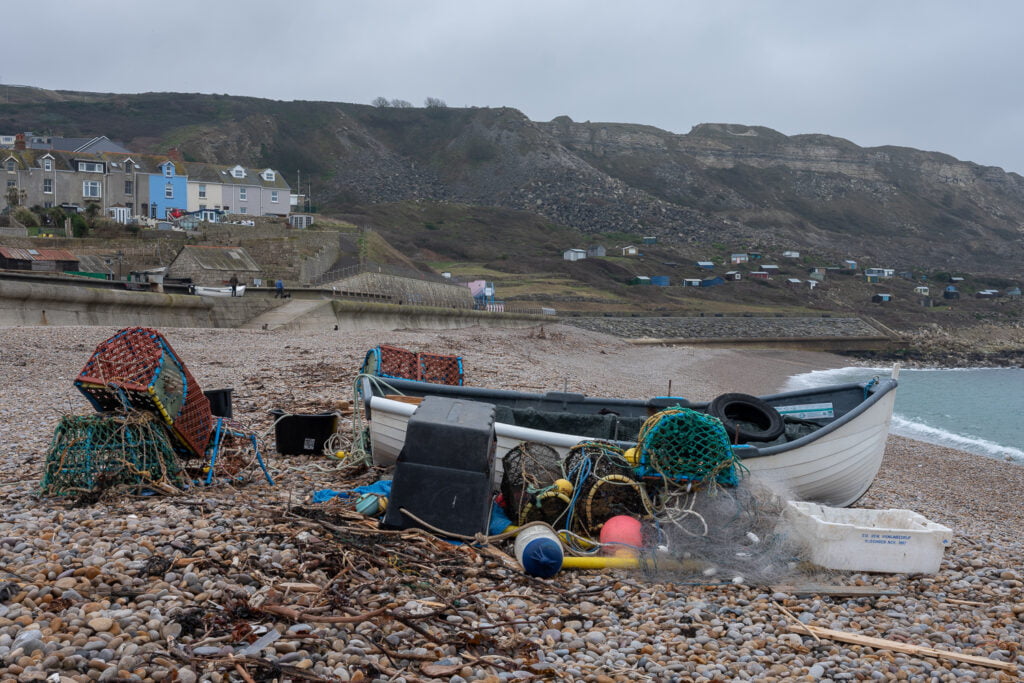
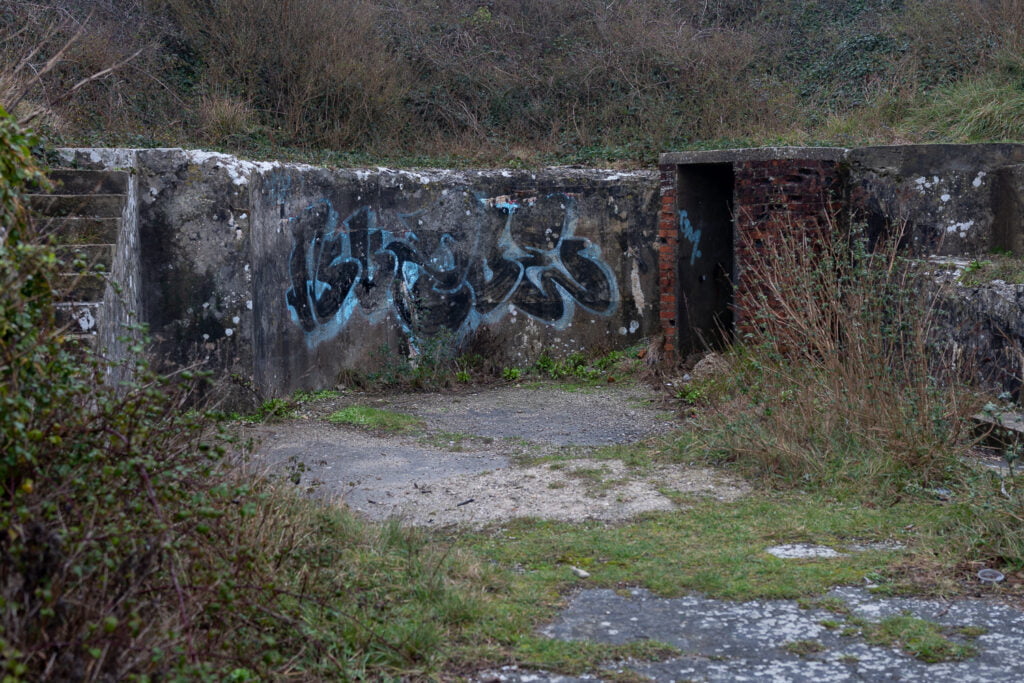
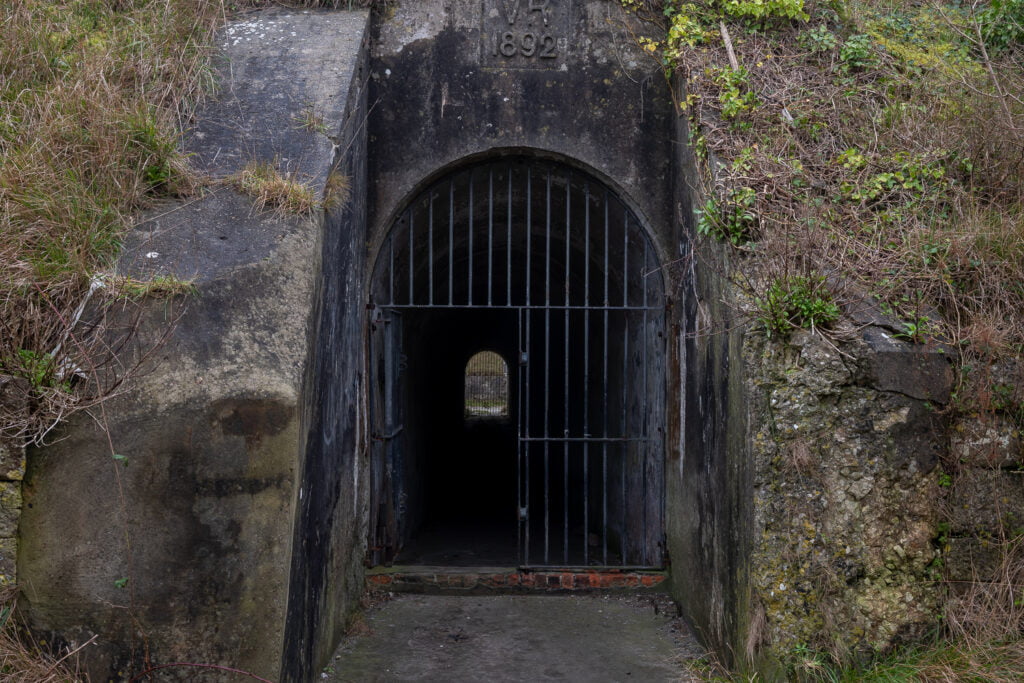
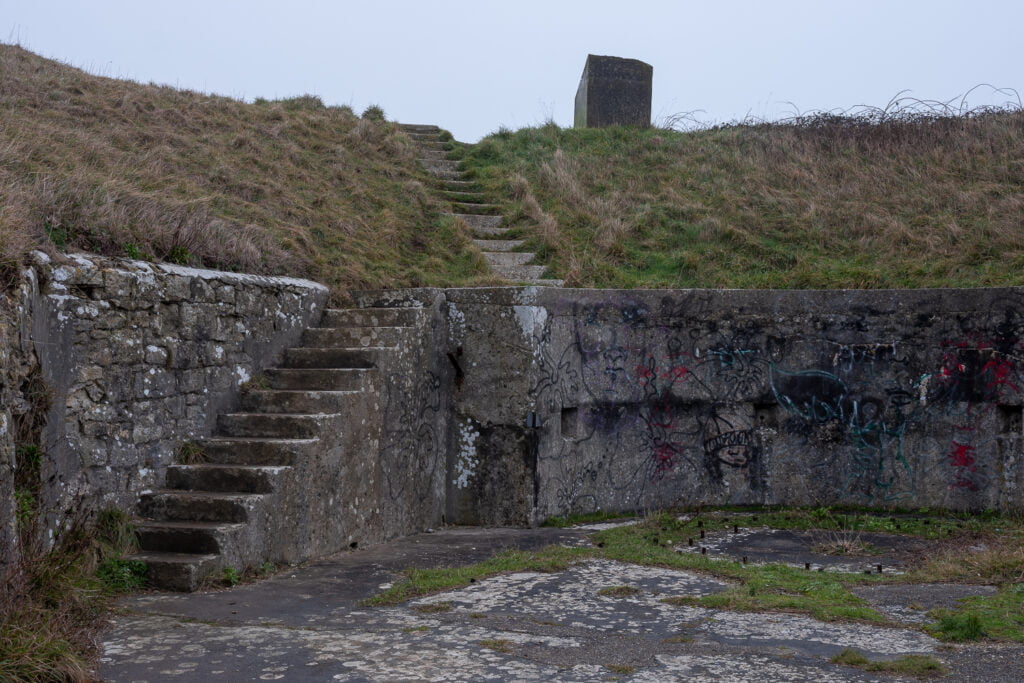
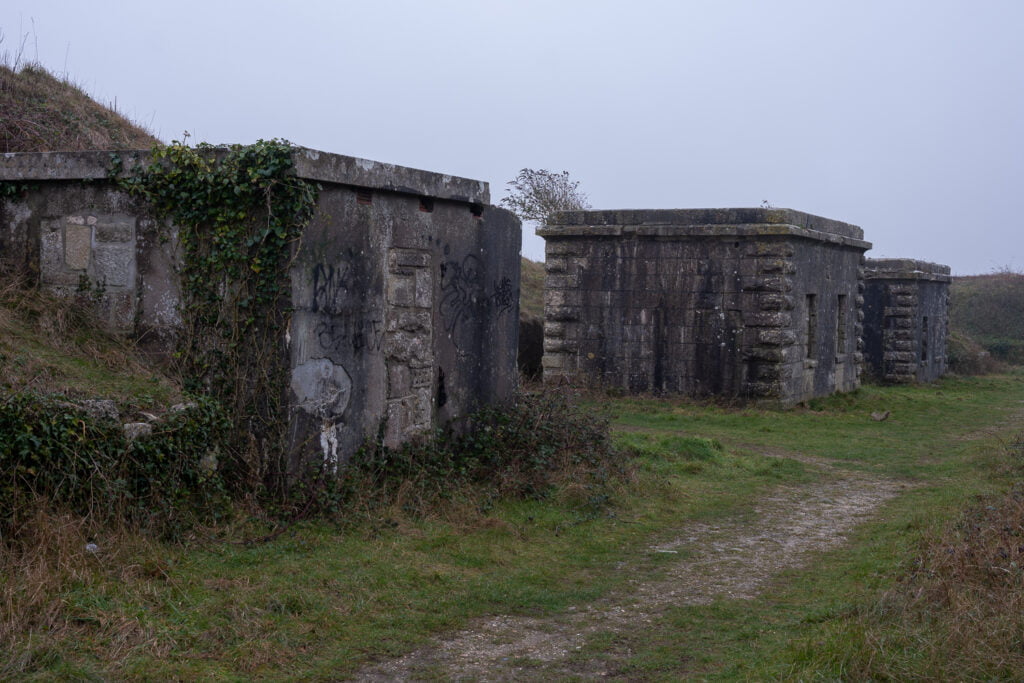
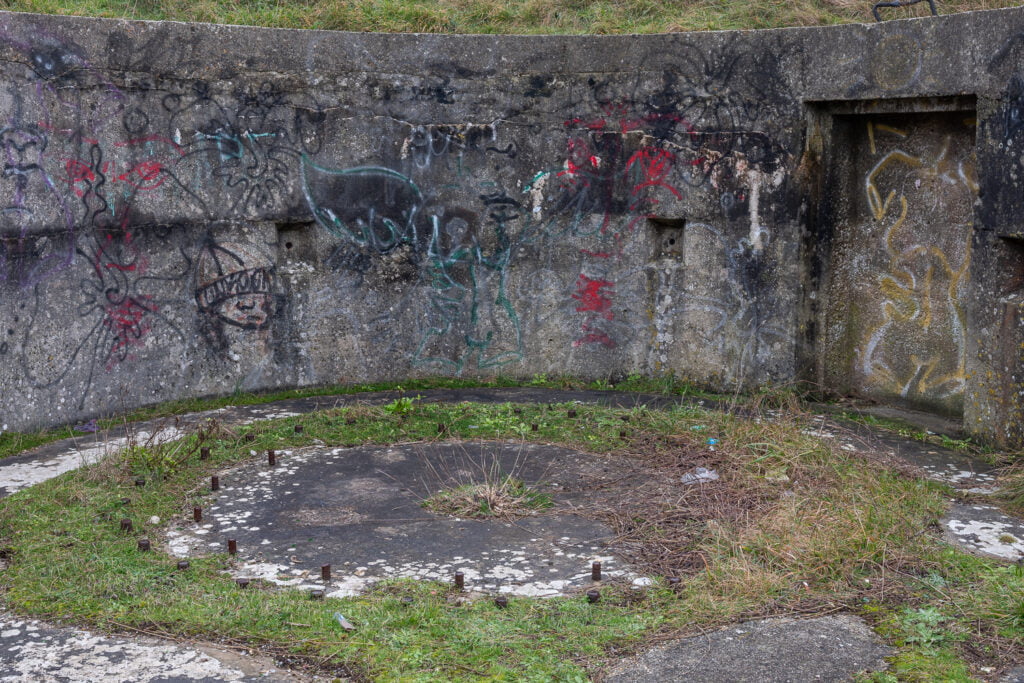
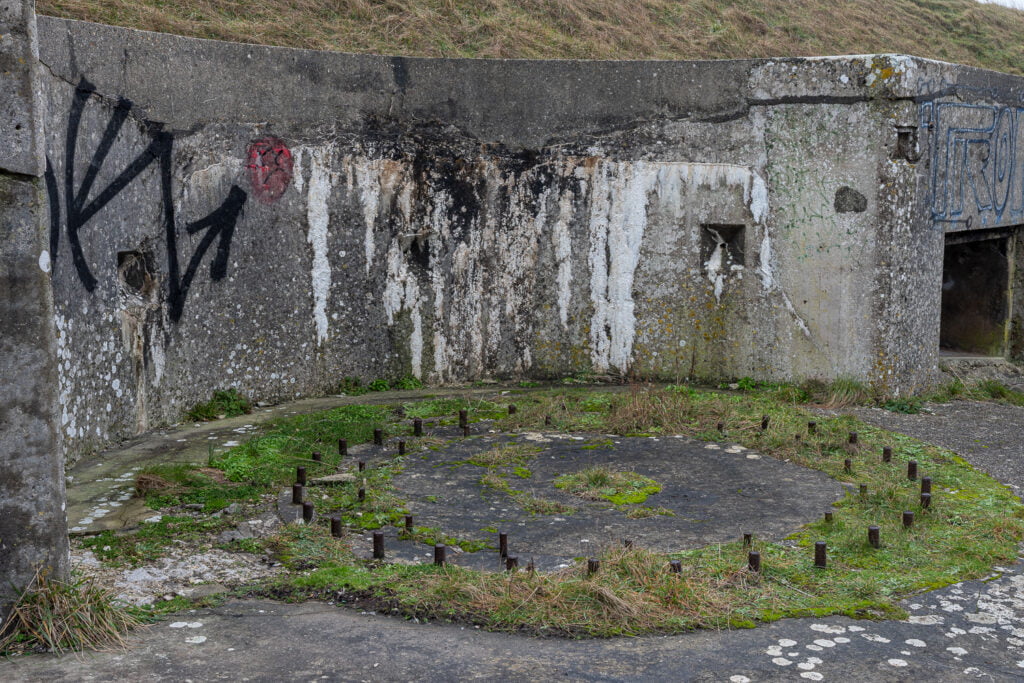
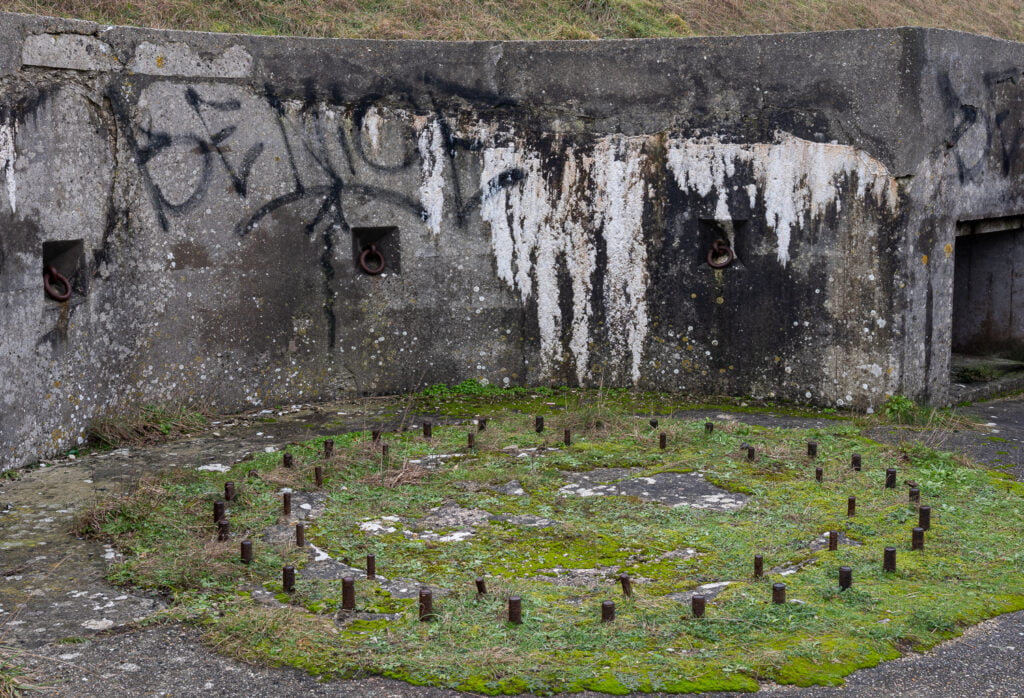
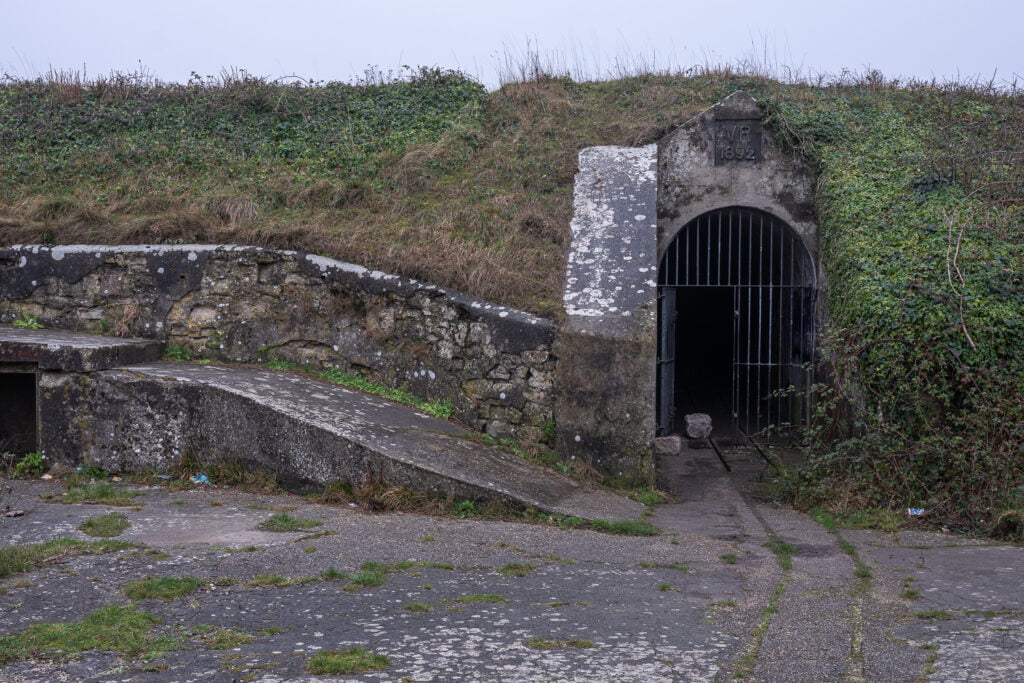
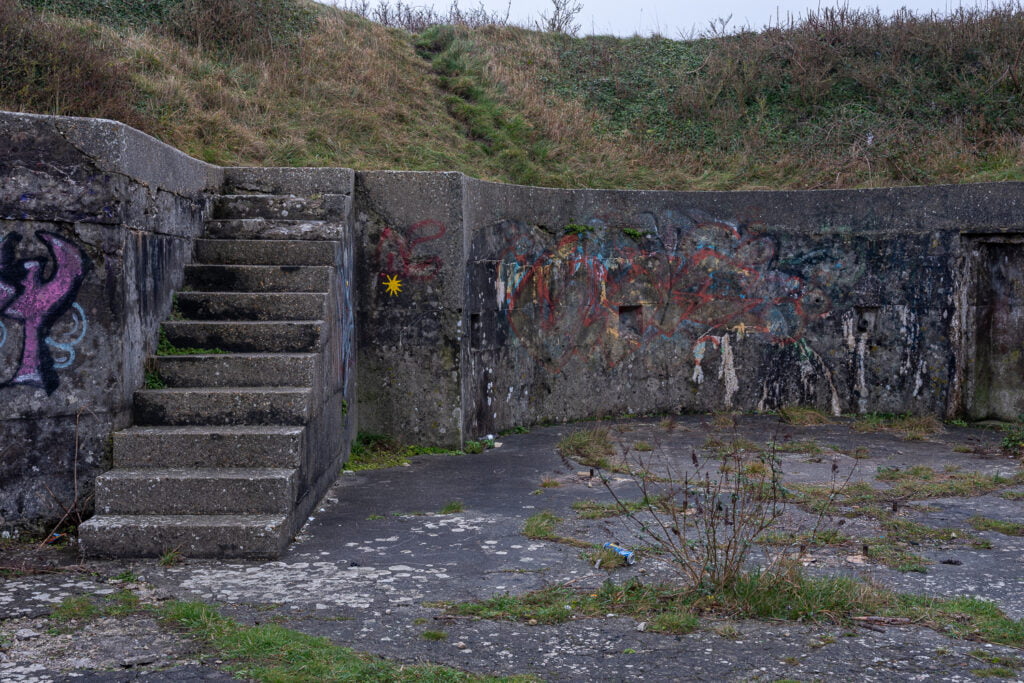
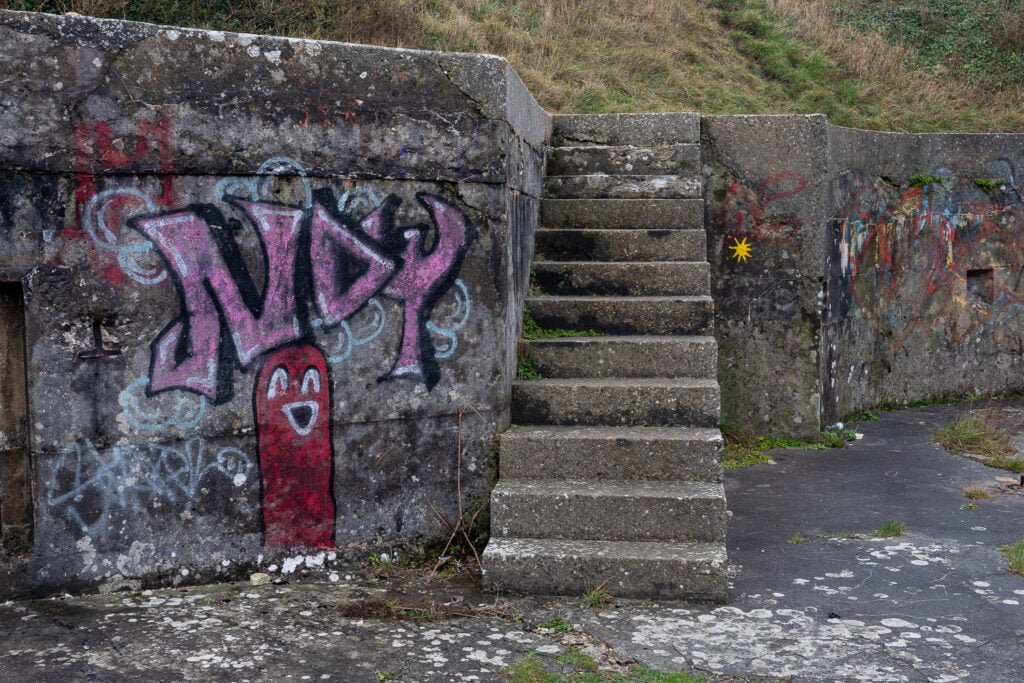
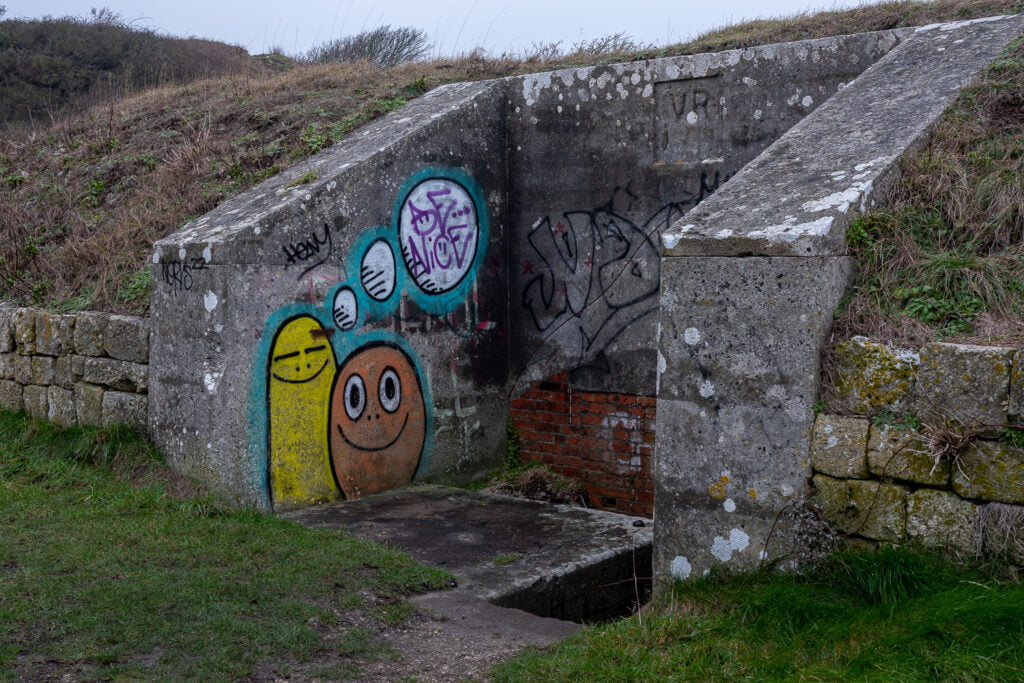
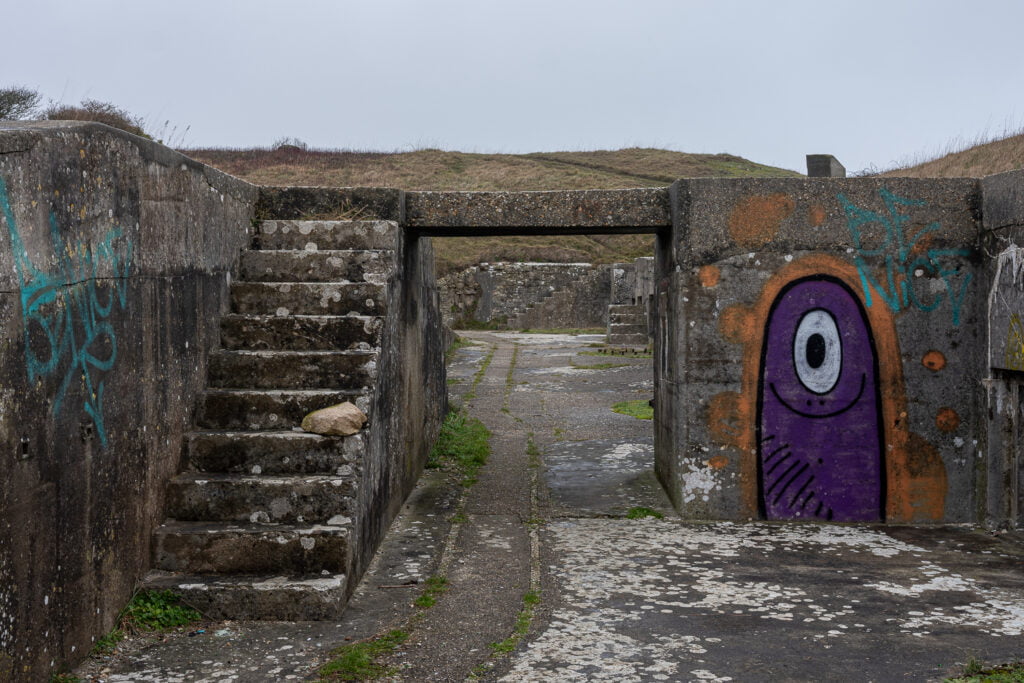
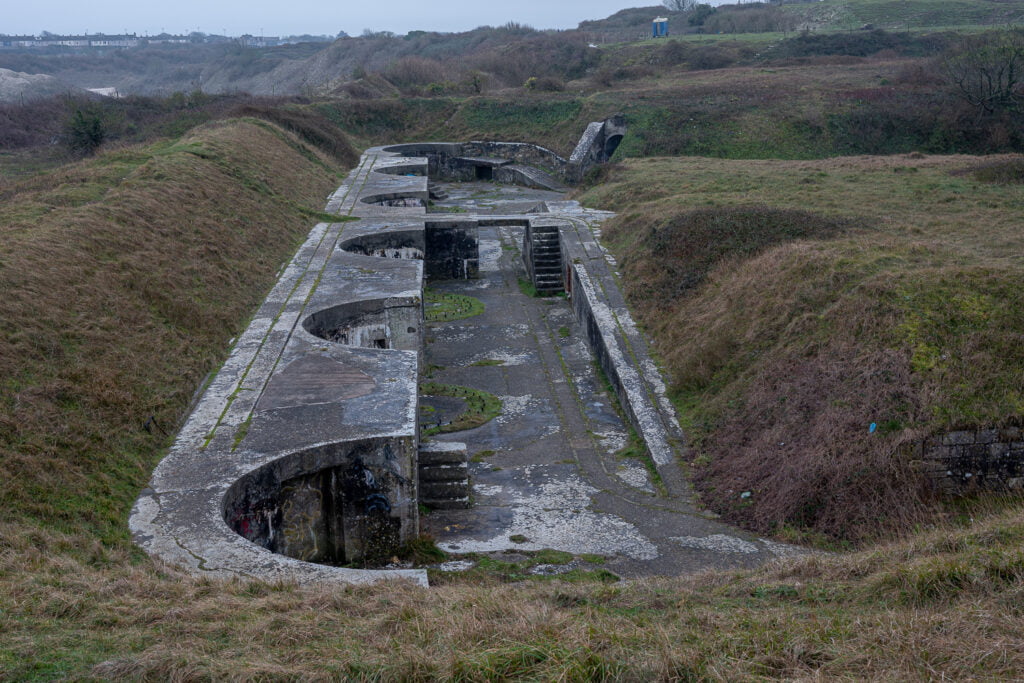
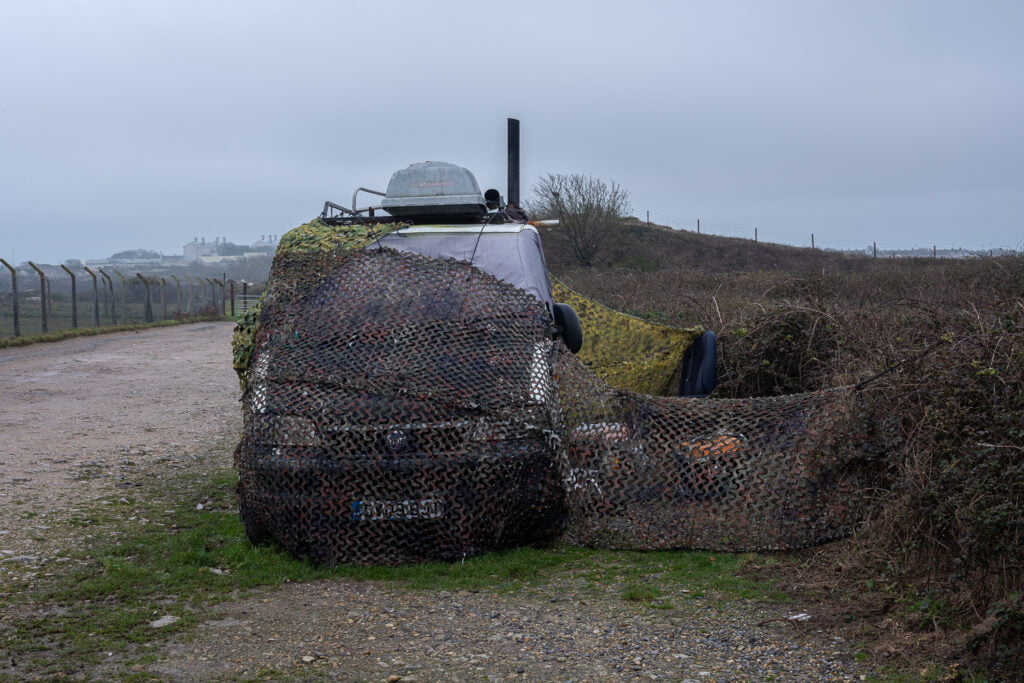
Day 4 27th January
Ceremonial use of stone intrigues me, or rather the need for humans to memorialise their deceased forebears interests me. Such practices apparently go back to the Neolithic, with current archaeologists believing that large monuments such as Stonehenge and the Ness of Brodgar were at least partly ceremonial in nature, and played fundamental roles in remembering deceased ancestors. Local stone has obviously played a major role in this process, but at major sites stone may have been transported many miles for its particular associations. The bluestones at Stonehenge look to have travelled from the quarries of the Preseli Hills in west Wales, and stone found in the ritual landscape on Orkney appears to also come from a number of different locations.
Portland stone, as described above, has also been transported globally for its qualities, both for buildings and for ceremonial/monumental use. It is hard for me to imagine the mechanics of how this is achieved; the dimensions of the quarrying, transportation and building processes I cannot envisage. But what is clear is that such practices have been carried out for millennia. There is also little surface quarrying on Portland currently; at least one major company is mining the stone, away from housing developments, some 15 meteres below the surface.
St Georges Church, considered one of the most magnificent mid 18th centrury churches in Dorset, has associations with St Paul’s Cathedral. Began in 1754, it is the masterwork of a local mason named Thomas Gilbert whose grandfather supplied the Portland stone used to build St Paul’s Cathedral. Built from Portland stone too, it has been suggested that St Georges is a miniature version of St Pauls. The interior is fabulously preserved with its lectern, pulpit, box pews and galleries all surviving. It is a ‘preacher’s church’; with all the seating facing the twin pulpits – one for reading scripture, the other for lengthy sermons. The sprawling churchyard is a treasure trove of fabulous headstones and memorials that tell tales of murder, piracy and adventure in a gloriously atmospheric setting.
The church is only open in the summer.
I spent the last part of the afternoon around The Heights Hotel and Cafe, photographing the changing skyscape looking back towards Weymouth, with the 2012 Olympic Rings, the War Memorial and the Memory Stones in the foreground.
